4th BATTALION - 45th BATTALION - 34th BATTALION AIF - Concentration Camp Guard.
Private: 7708 Kurst "Gustef" BLASSER. (Estonian. Russian Subject) - Private: 3490 Kust BLASSER. (East Lander)
Born: 22nd October 1880. Dago Island, East Lander Baltic Sea, Russia.
Married:
Wife:
Died:
Father:
Mother:
INFOFMATION
Kurst Blasser enlisted with the AIF on the 6th of December at the East Sydney Recruitment Depot, 167 William Street Darlinghurst before he was entrained to the Liverpool Army Depot before embarking from Melbourne, Victoria on the 28th February on board HMAT A71 "Nestor" with the 26th Reinforcements 4th Battalion AIF and disembarked at Plymouth, England on the 20th April 1918. Kurst was marched in to the 1st Training Battalion at Sutton Veny that day where he commenced his training. On the 5th June he was transferred to the 12th Training Battalion at Codford where he was taken on in strength with the 45th Battalion.
Kurst proceeded overseas for France on the 15th July 1918 where he was marched in the the Australian Infantry Base Depot at Havre, France on the 18th July where the men remained in Billets until being marched out to their units the next day. On the 21st July 1918 Kurst was transferred to the 34th Battalion and 10 days later on the 31st July 1918 Kurst was Wounded in Action when the dug-out that he was sheltering in was hit by a shell and partially collapsed in on him. Kurst was treated by the 10th Australian Field Ambulance before he was transferred to the 5th Casualty Clearing Station with a Bruised Knee and Back.
His injury was recorded as (accidental) and was heard by a Court of Inquiry. Kurst was admitted to the 9th General Hospital in Rouen, France before he was invalided to England on the 8th August on board the Hospital Ship "Gloucester Castle" and upon his disembarkation he was admitted to the Military Hospital at Thorpe. Kurst was later discharged from Hospital and granted a furlo before he was Taken on in Strength with Headquarters in London from the 5th September until the 25th of September when he was returned to the 34th Battalion and marched out to the No: 1 Command Depot at Sutton Vent.
25th October 1918.
Evidence
Re No 7708 Pte Blasser K.
This man occupied the same dug-out as myself in the line. In 31.7.18 the dug-out was partly blown in by a shell. Private: 7708 Kurst BLASSER received injuries through part of the dug-out falling on him.
(Sgd) Private: 1780 Albert BURGE. 34th Battalion AIF.
34th Bn.
Here with Army Form3428 concerning accidental injuries of Private: 7708 Kurst BLASSER and Private: QUICK. I have made the necessary enquiries and am of the opinion that neither of them were to blame in there respective cases. I have filled in para 4 to this effect. Would you please obtain the C.O's signature and fill in date when signed to this para.
(Sgd) Captain: Telford Graham GILDER. O.C "A" Coy.
Kurst was marched out to the Overseas Training Brigade at Longbridge, Deverill on the 18th November and embarked for his return to Australia on the 25th January 1919 0n b0ard the Hospital Transport "Ceramic" and disembarked at Melbourne on the 14th February where he en trained for Sydney where he attended the ANZAC Buffet and was discharged from the AIF as Medically Unfit on the 22nd of May 1919.
Kurst re enlisted as a Concentration Camp Guard at Holsworthy with service number 3490. Records indicate that he did not report for service and that he was (Not Arrested) This may be the reason that no further records of him have been un covered by me at this time.
Kurst's War Medal:80087 and Victory Medal:76011 to PTE 7708 K.BLASSER 34BN AIF were acquired at Noble Numismatics Auction in November 2023 and are now in the Harrower Collection. These medals were from the George Snelgrove Collection as a copy of the research paper he compiled was purchased with his medals.
George Snelgrove Notes
All of the above was of interest about the other Blasser in the War Memorial Records? On entering the requested surname and the conflict of war, Blasser and World War 1, the same two Blasser's came up again. Having already looked at Blasser K records, this time the file of Blasser/Kust was examined. An A.I.F. Attestation Paper of Persons Enlisting for Service Abroad appeared. The word HOME was written in between for and Service and the word Abroad was crossed out. He was issued with a number No:3490, His surname was Blasser and Christian name Kust. His unit was to be Concentration Camp Guard and he joined on 21-5-19.
He declared that he was born on Dago Island, East Lander Baltic Sea. He that he was an East Lander. He was born on the 22nd October 1880, a seaman by trade or calling, Single, No next of Kin stated, and his permanent address in Australia, 23 Clarence Street, Sydney. His description on enlistment was 6 feet 2-1/2 inches in height, weight 13 stone 3 lbs. Complexion Dark, Eyes Brown, Hair Black. A Certificate of Medical Examination declared him Fit for Home Service and signed by a Examining Medical Officer.
To sum up on the two Blasser's it seems that they are the same person, apart from his Christian name changing from Kurst to Kust, and the second occasion he was an East Lander and not Russian. His permanent address in Australia was the same, but no next of kin. He declared that he served in the 34th Battalion for 1 year and 162 days No: 7708. He grew 1/2 an inch in height and lost 11 lbs in weight, his religious denomination and description of his tattoos etc were fairly indecipherable and he darkened up considerably.
So no doubt Blasser must have decided to stay in the forces for the security of a job and reapplied. But what went wrong? At the last moment he was seen as not required written across his Attestation Application was the words ENLISTMENT CANCELLED. The last entry on his 34th Battalion No:7708 records stated that on 22-5-19 he was discharged from the A.I.F. at Sydney - Medically Unfit, this was one day after his 22-5-19 application was cancelled.
George Snelgrove 2017.
His Attestation Papers also have recorded NOT ARRESTED as the final entry. I have found no other information on Kurst or Kust Blasser. I have not been able to ascertain weather he left the country fearing being arrest for not attending Holsworthy German Concentration Camp as directed after his enlistment as a Guard.
David Harrower ACM 2023.
Family Information
Kurst was a single 37 year old Sailmaker and Rigger from 23 Clarence Street, Sydney where he lived with Mary Tierney. He worked for the Illawarra Shipping Company on the South Coast on N.S.W and was a member of the Seamans Union.
Kurst was born at Dago, a Russian island in the government of Esthonia at the entry of the Gulf of Finland, and N. of the island of OEsel, from which it is separated by a narrow channel. It became Russian in 1791, and the inhabitants who are Danish, Swedish, and Russian, subsist chiefly by hunting and fishing - especially sealing. There is some coasting trade. Area 370 square miles.
Military Records
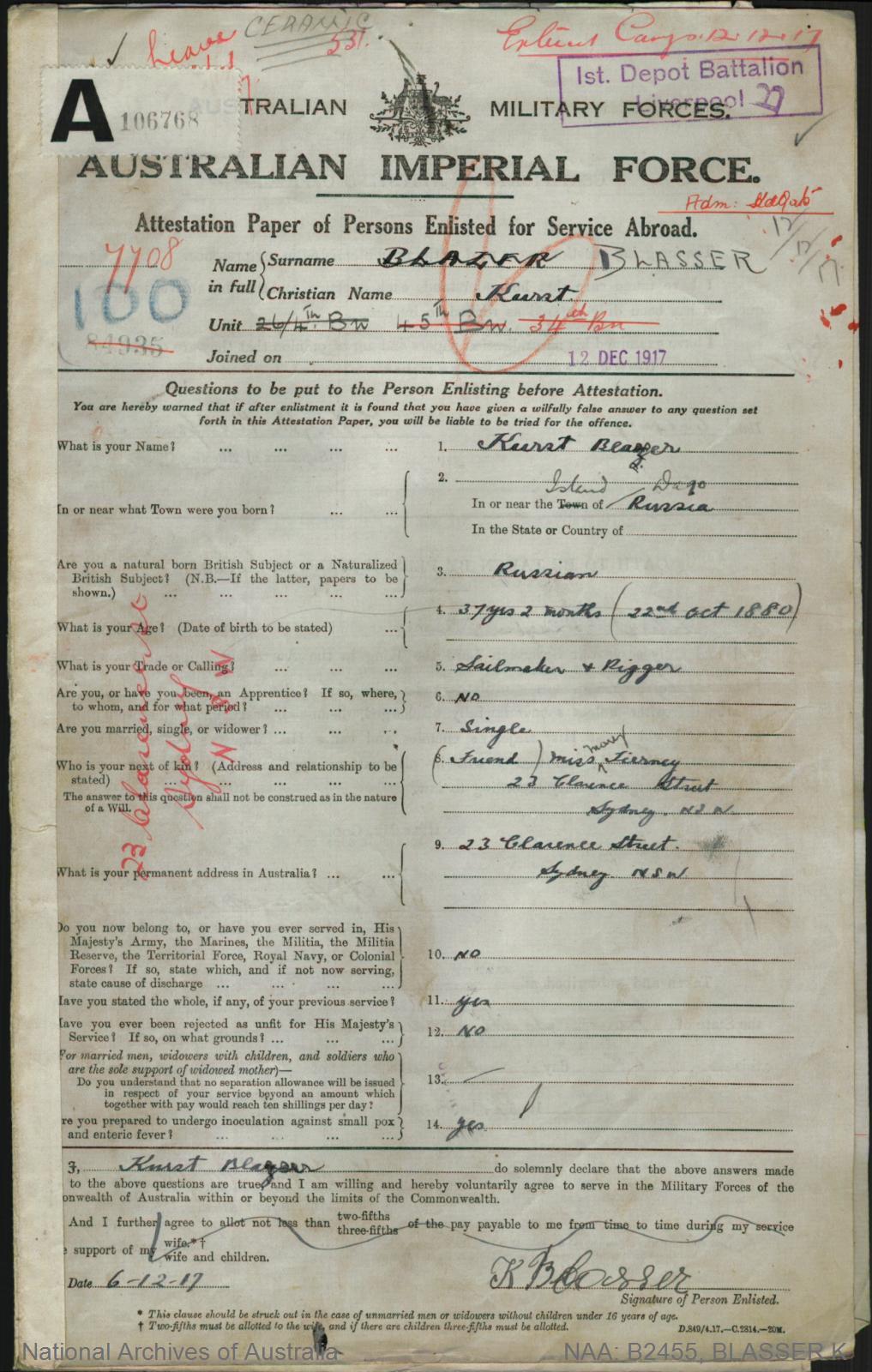
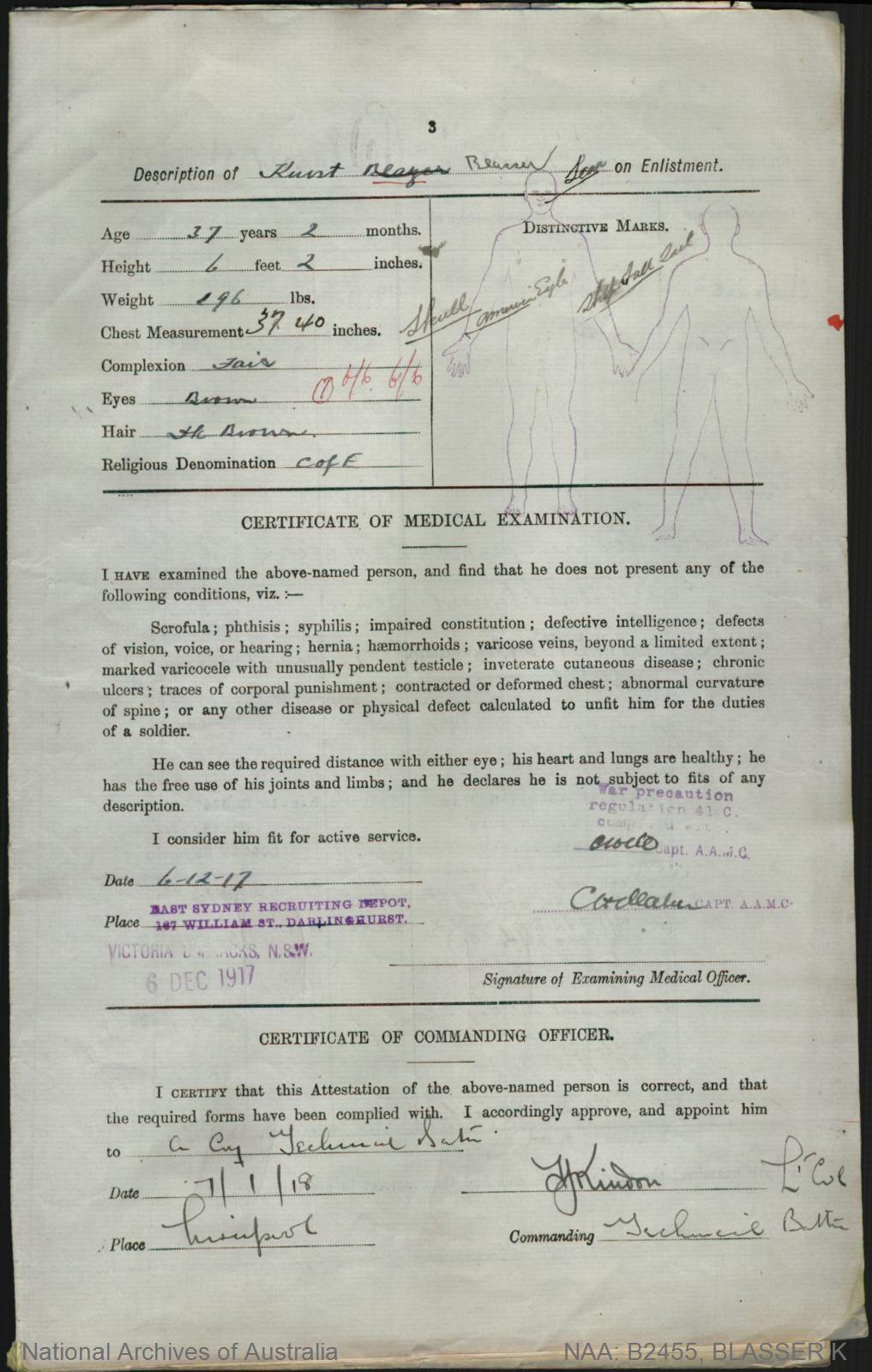

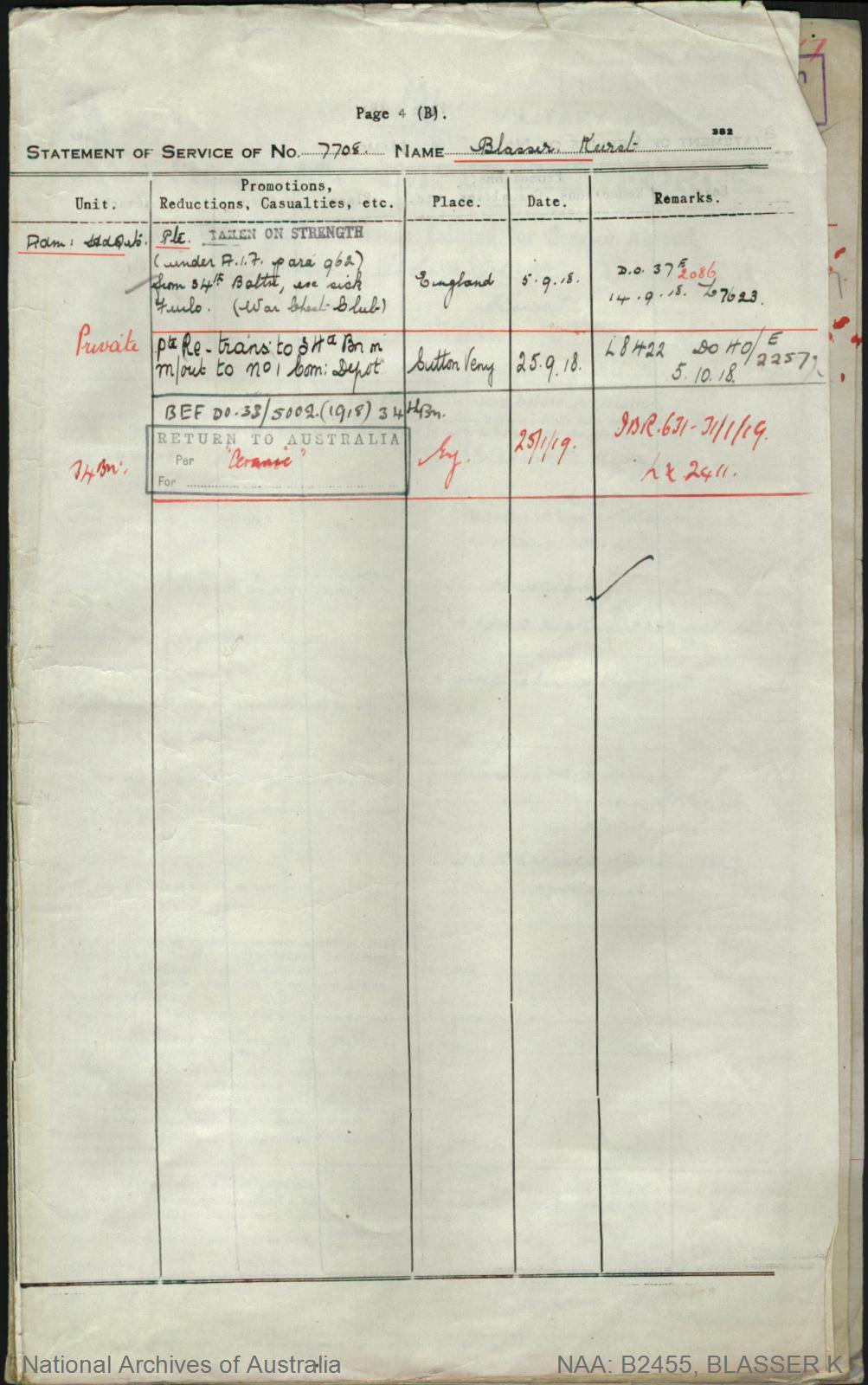
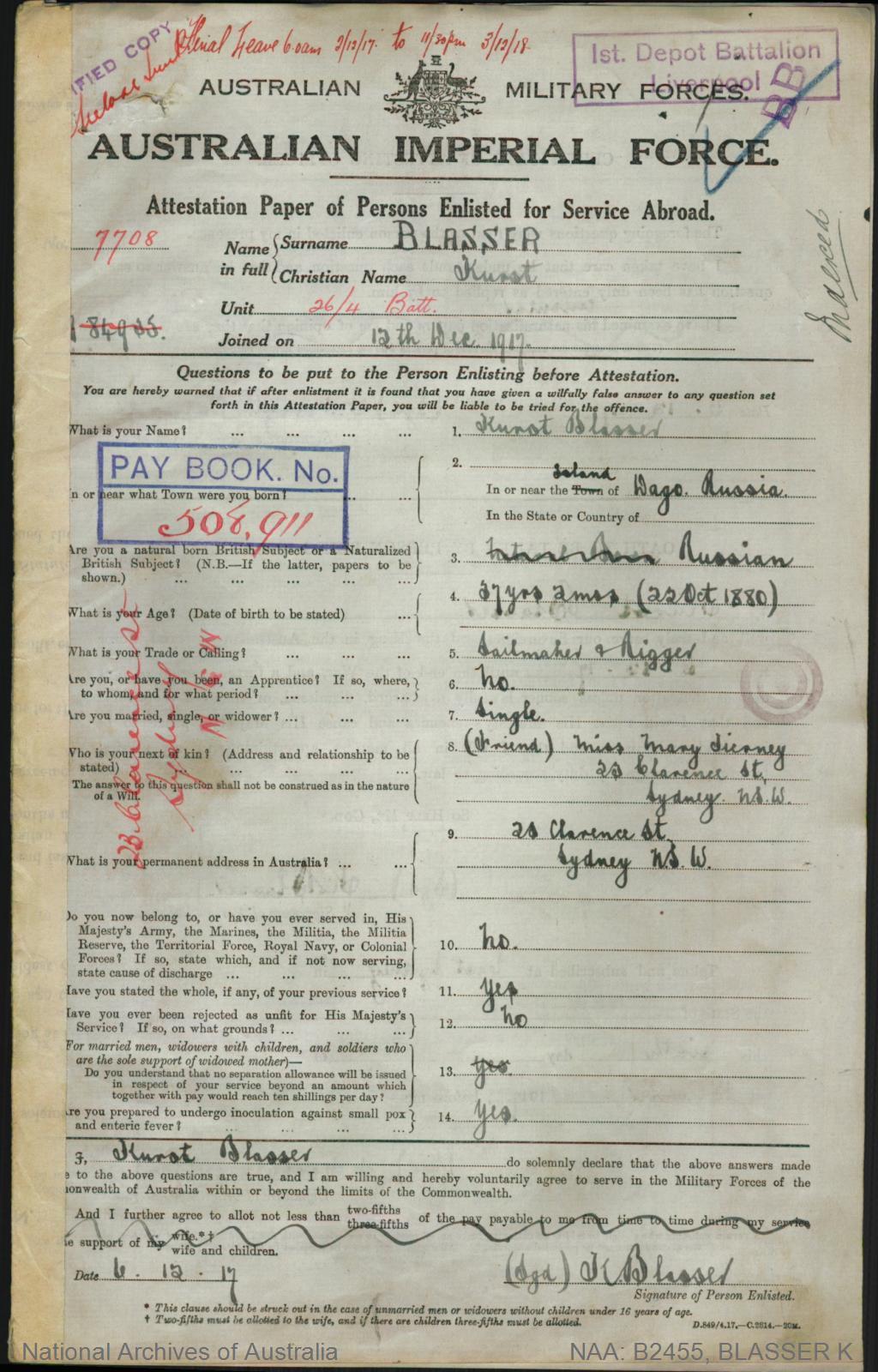
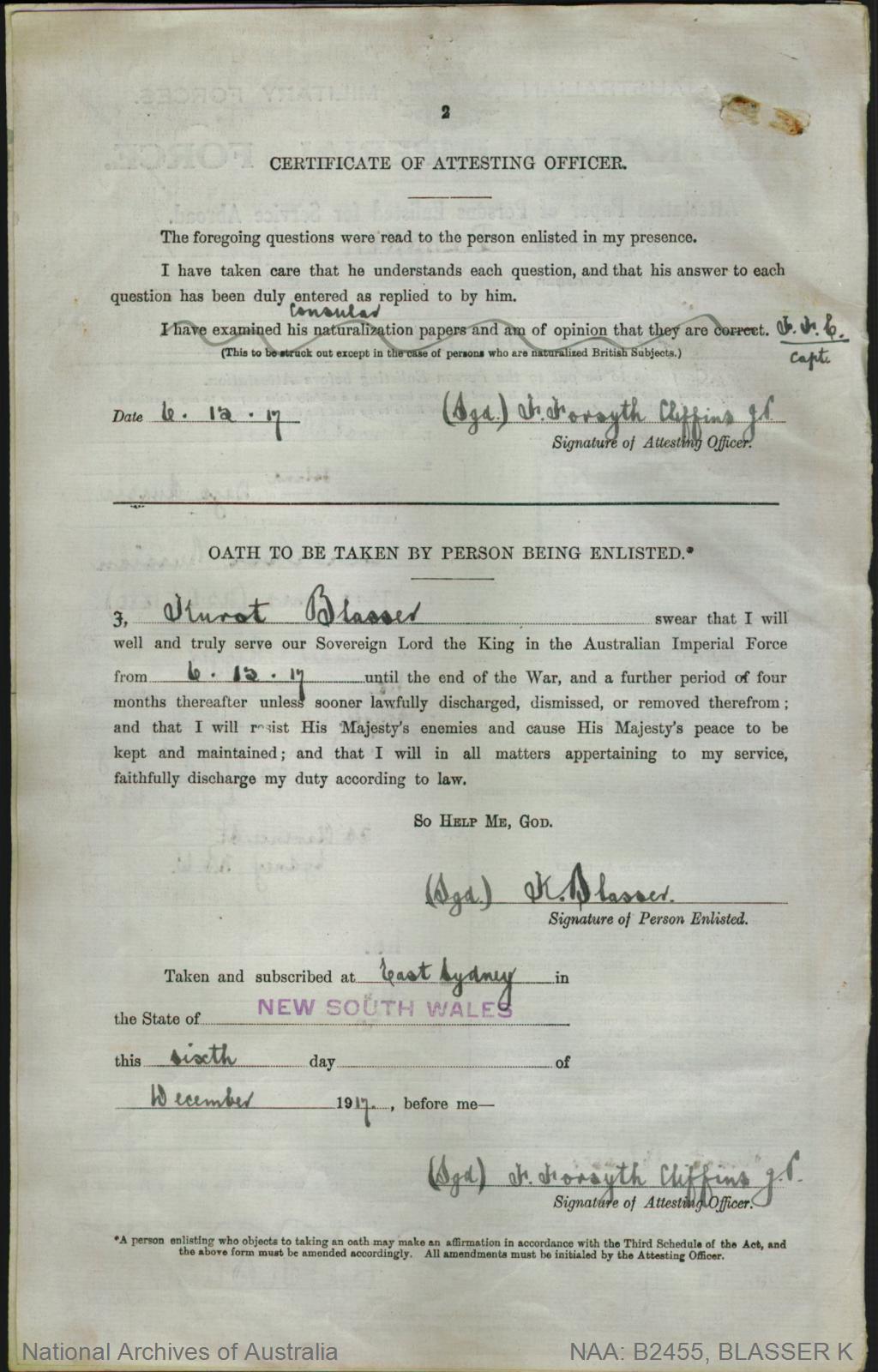
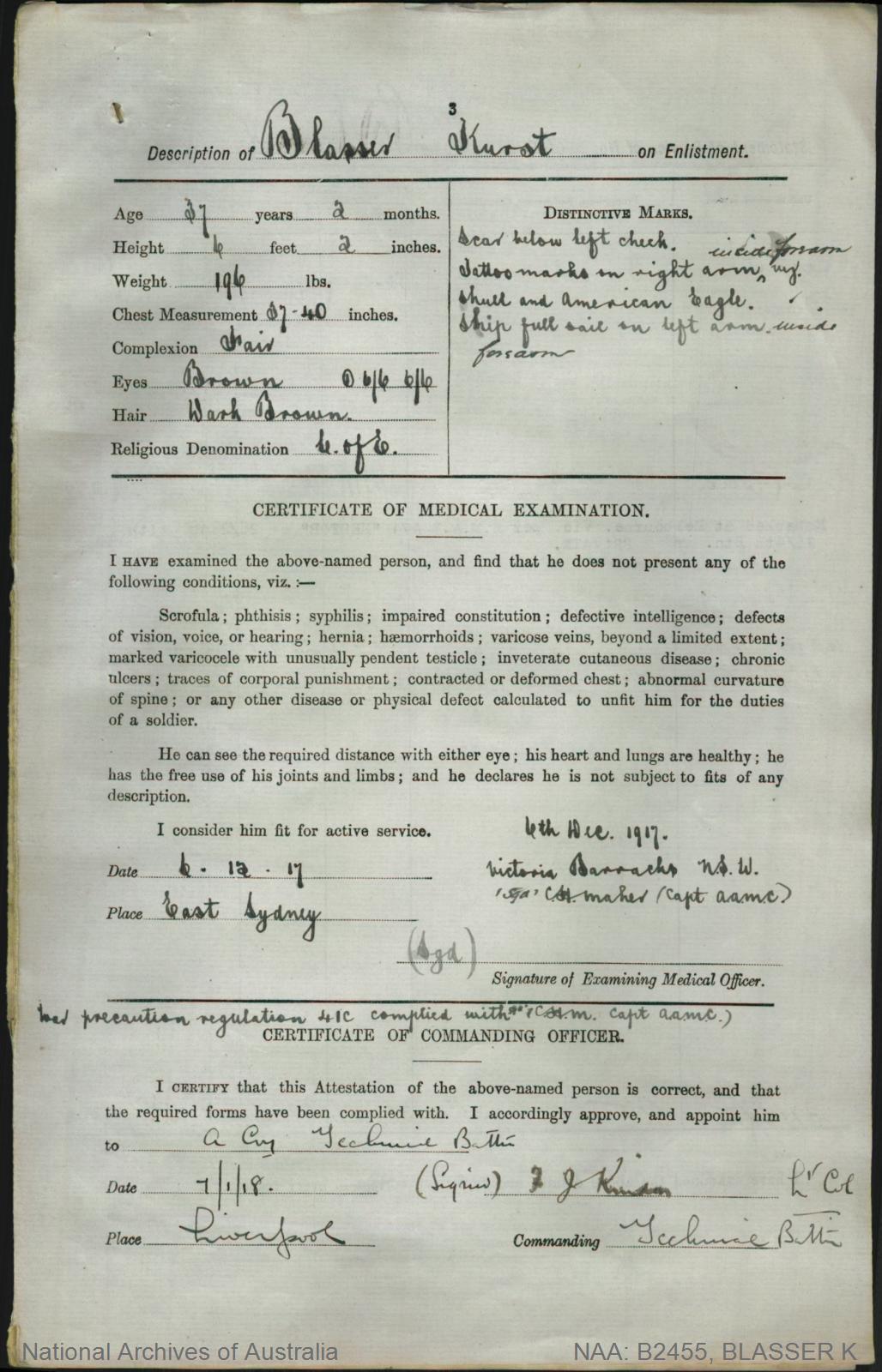


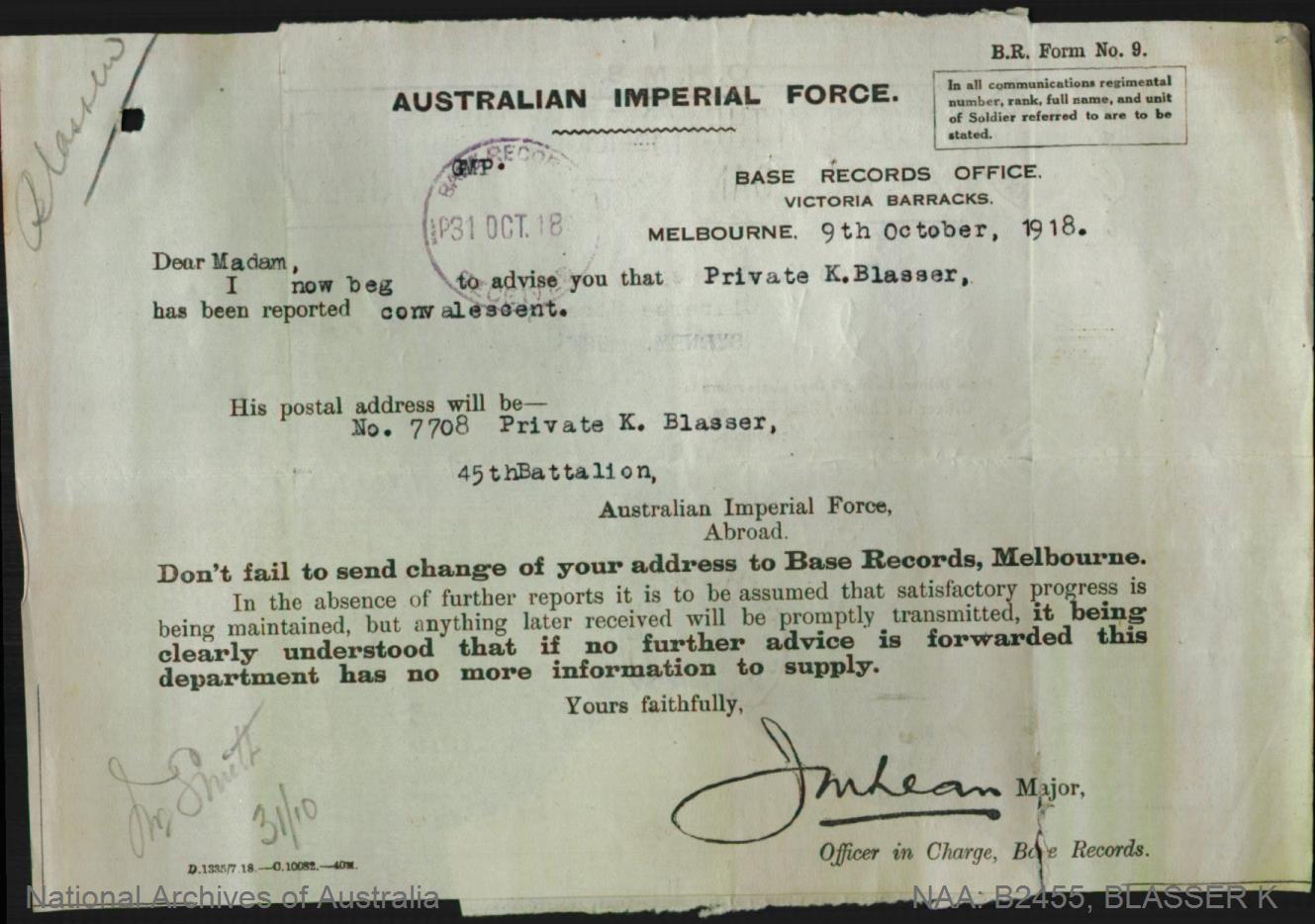
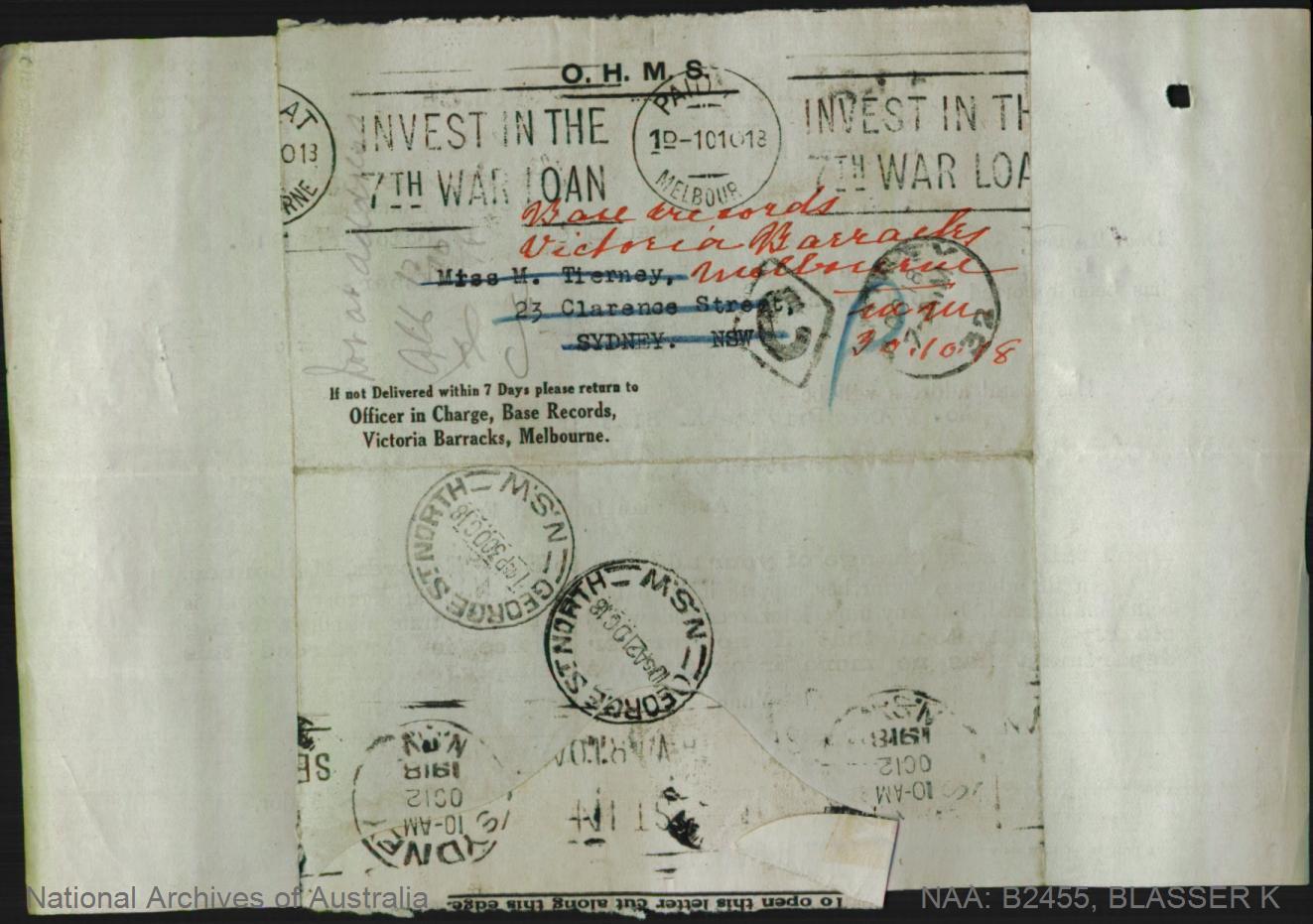
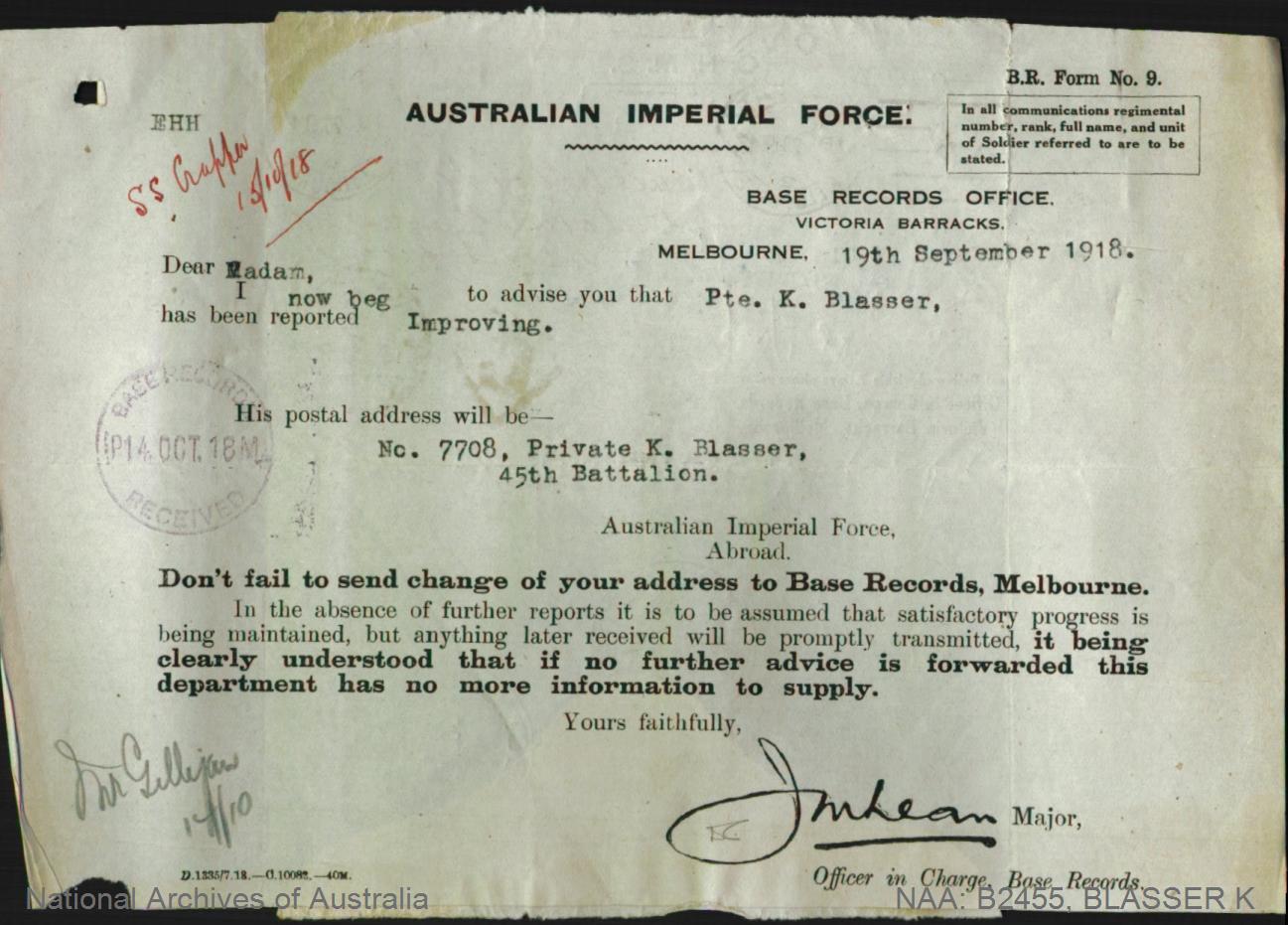

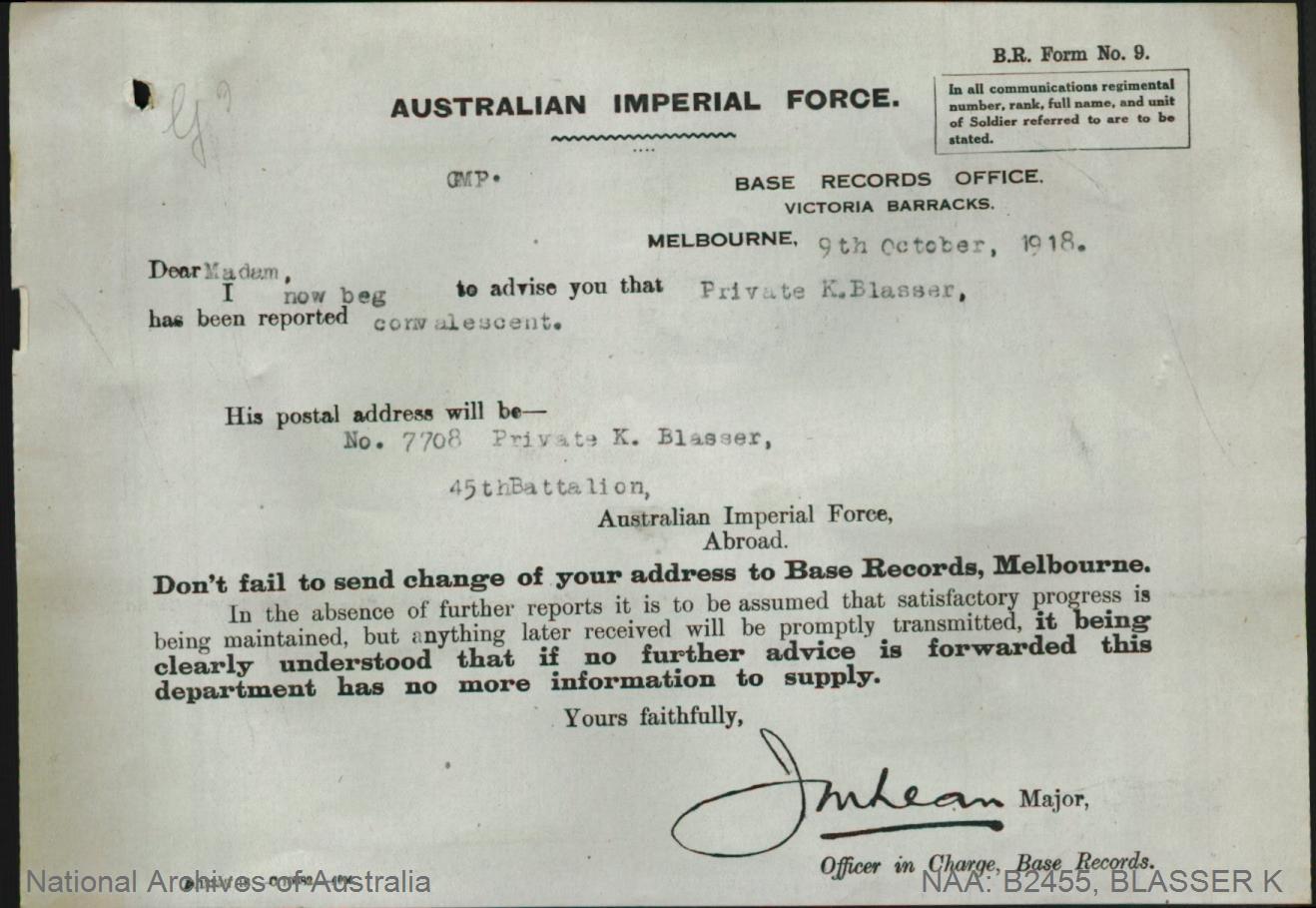
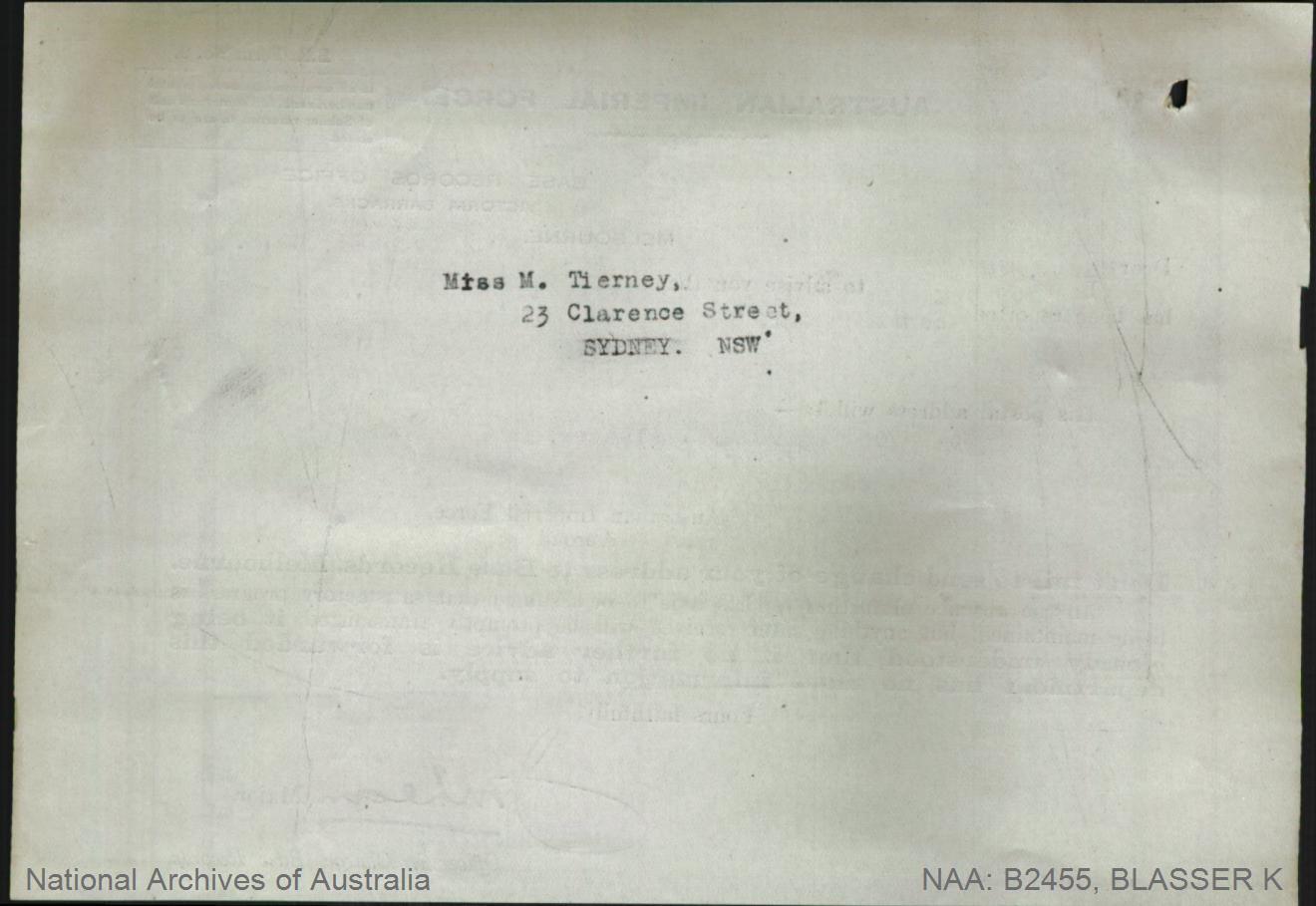


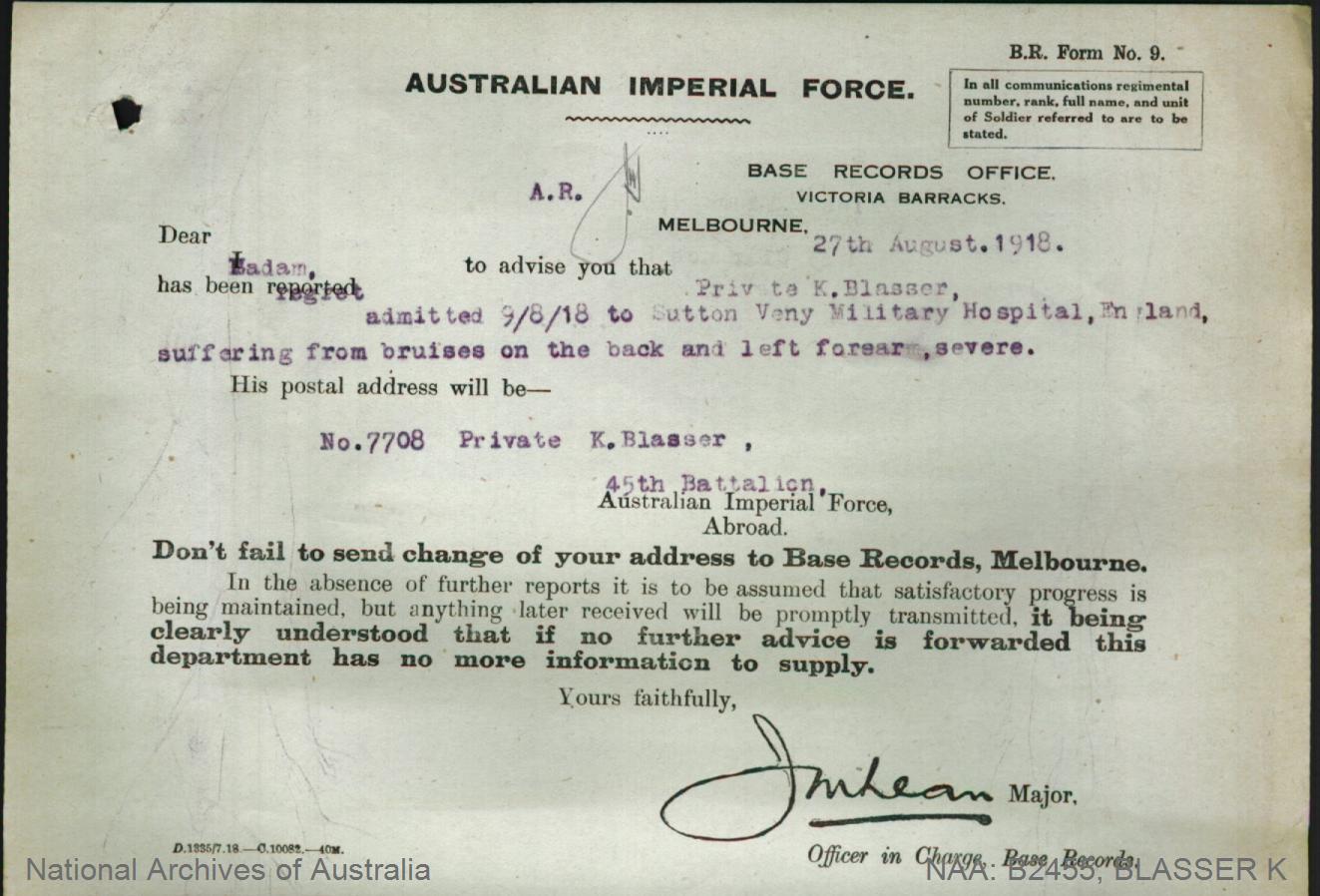
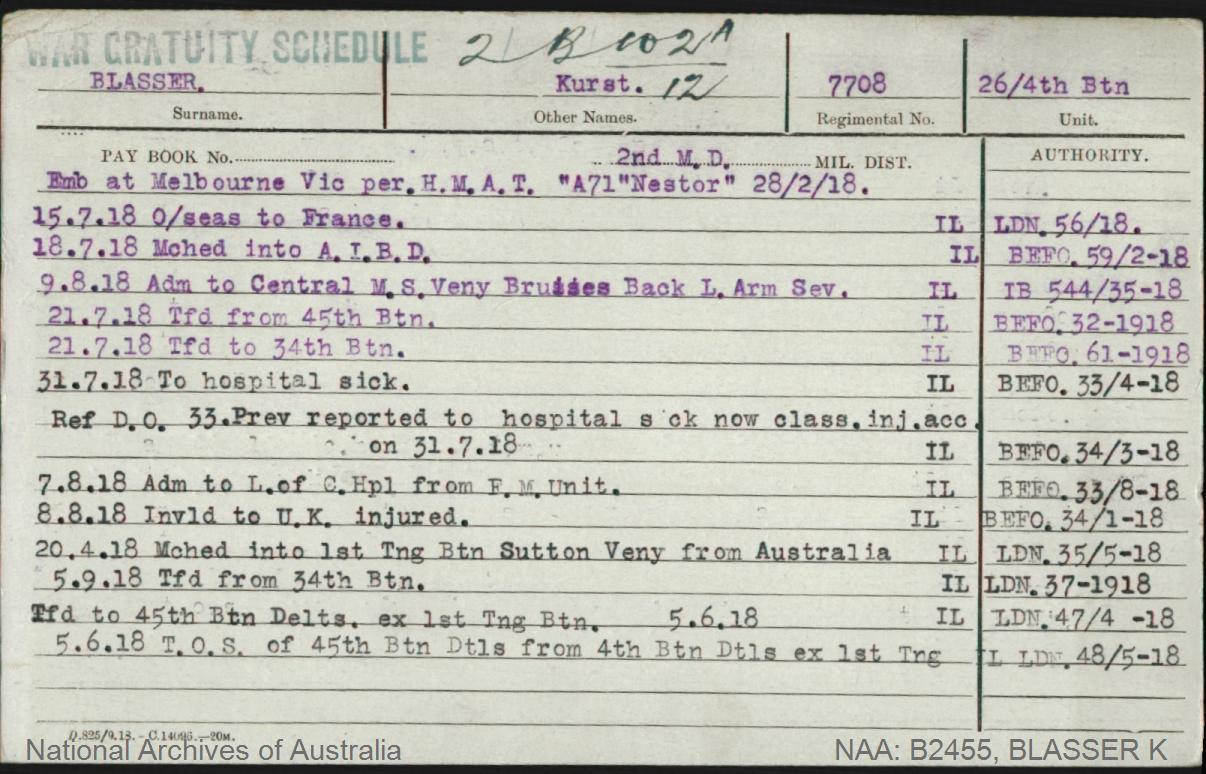
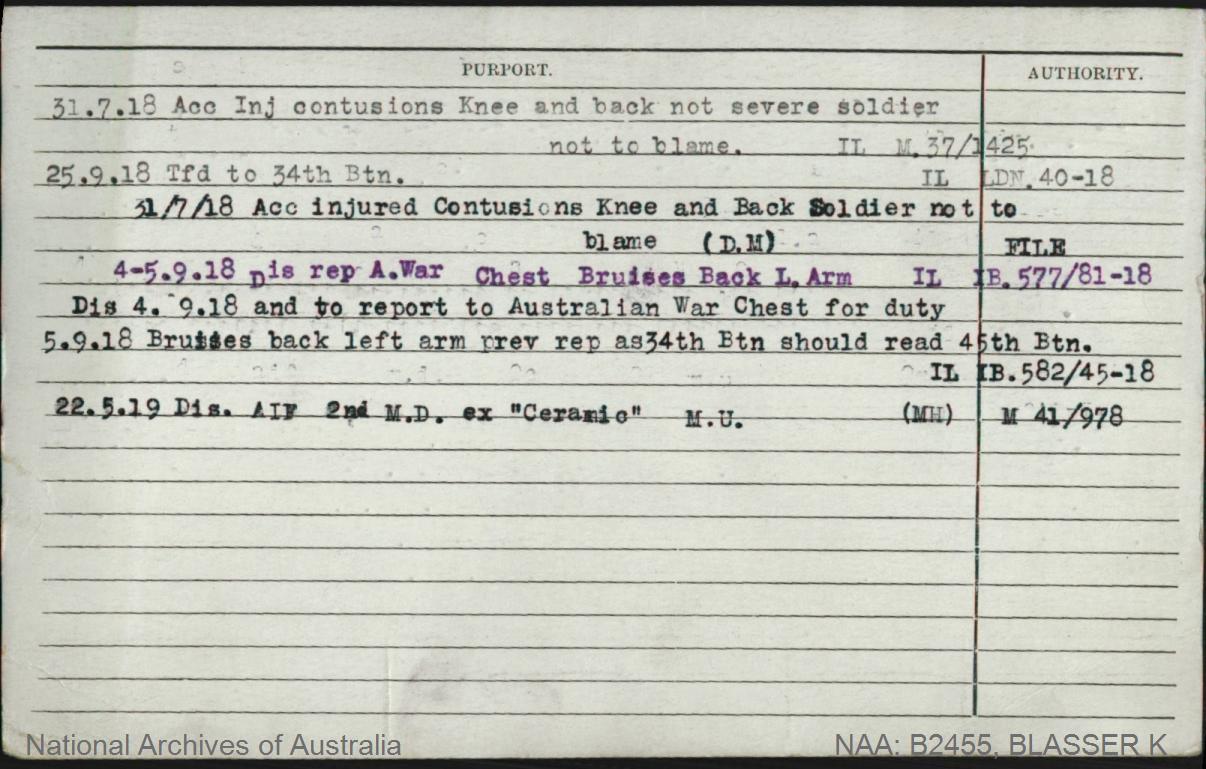
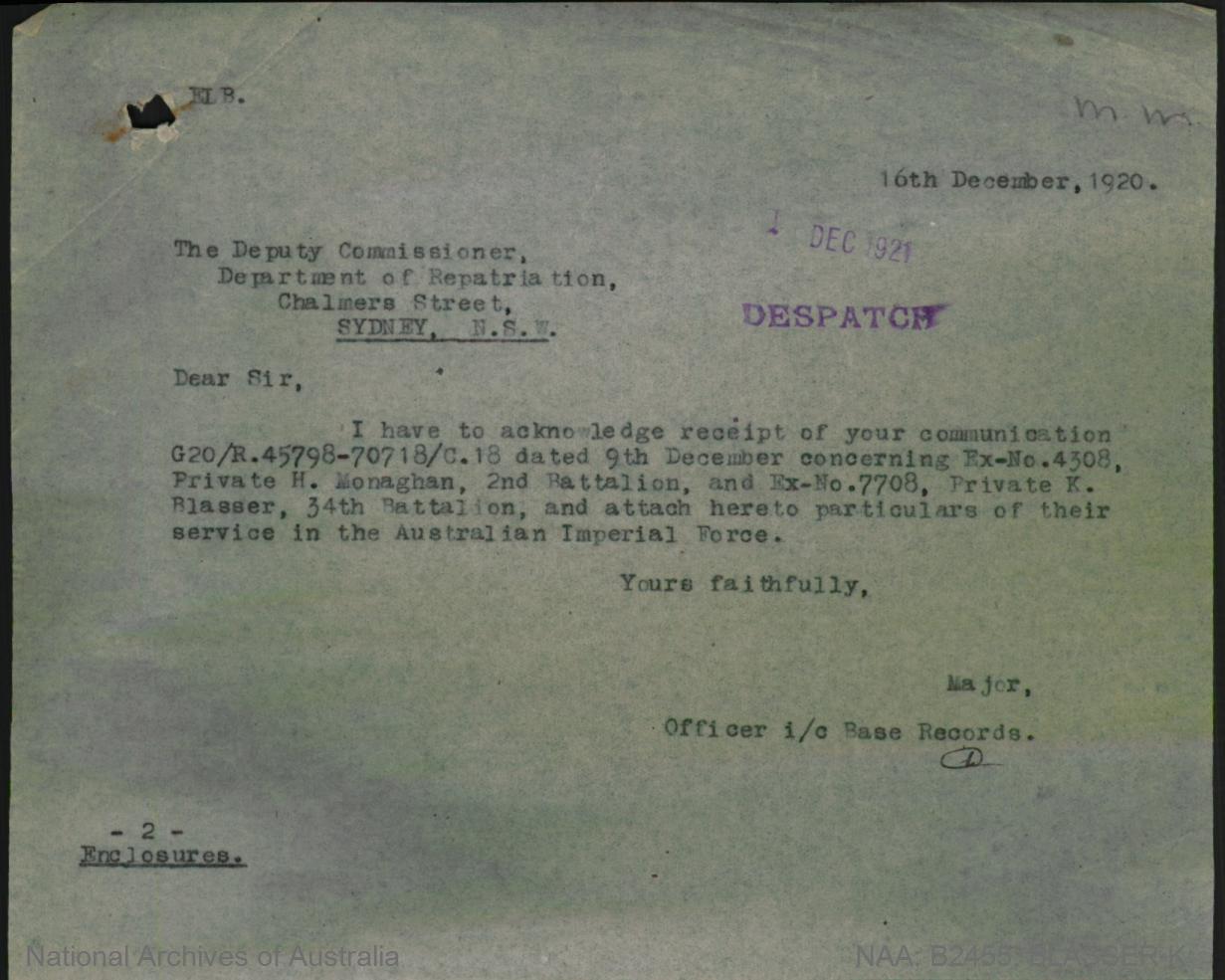
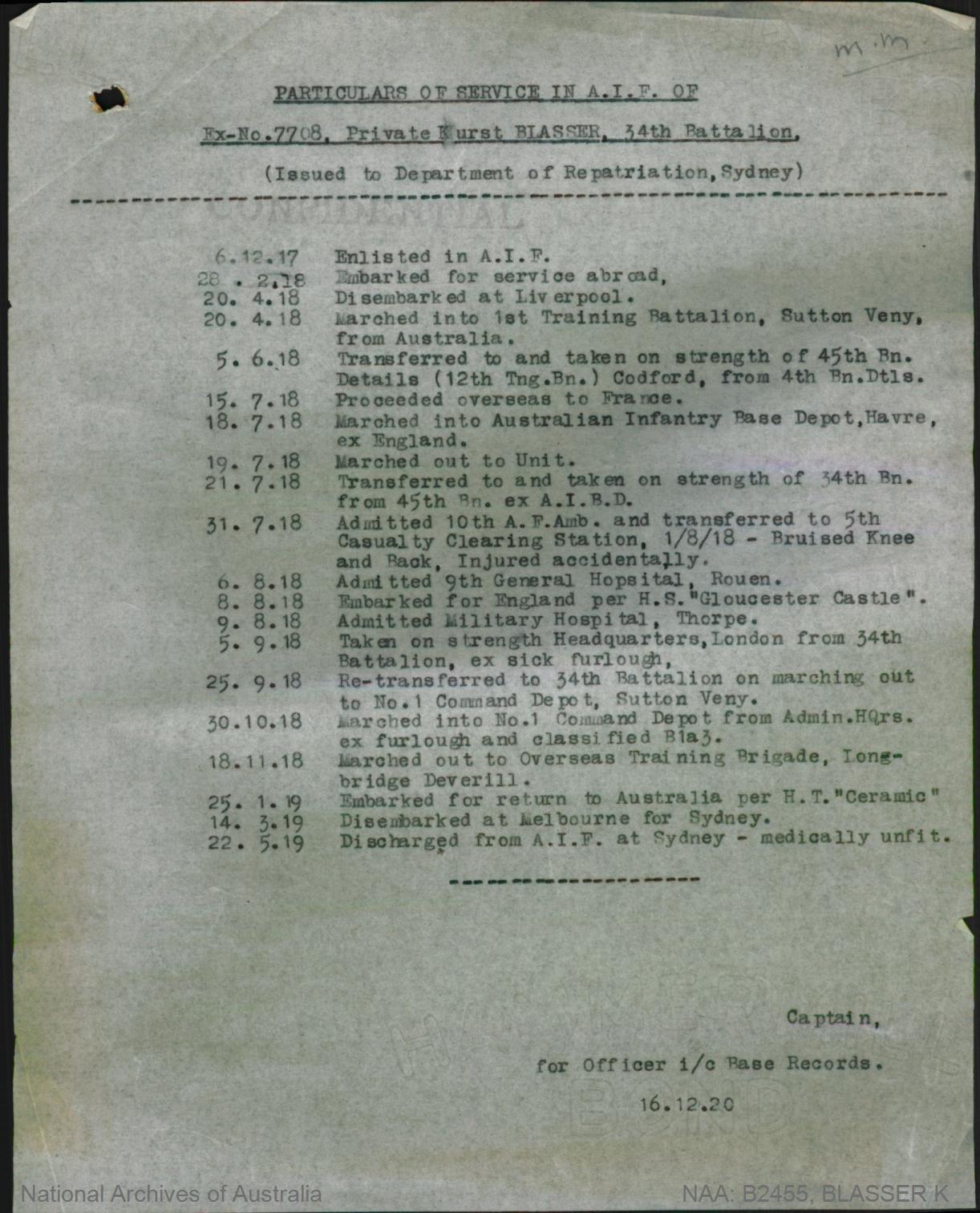
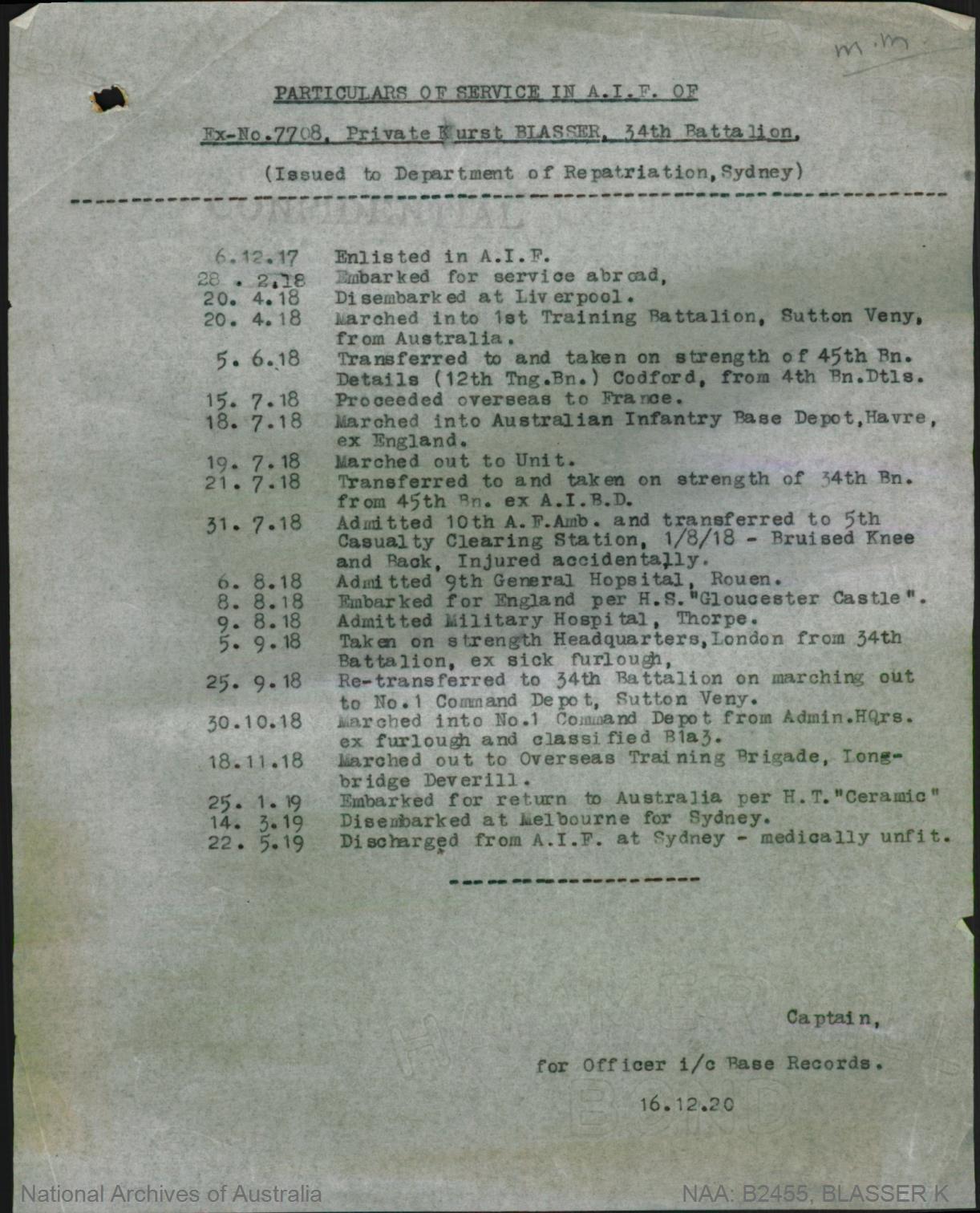

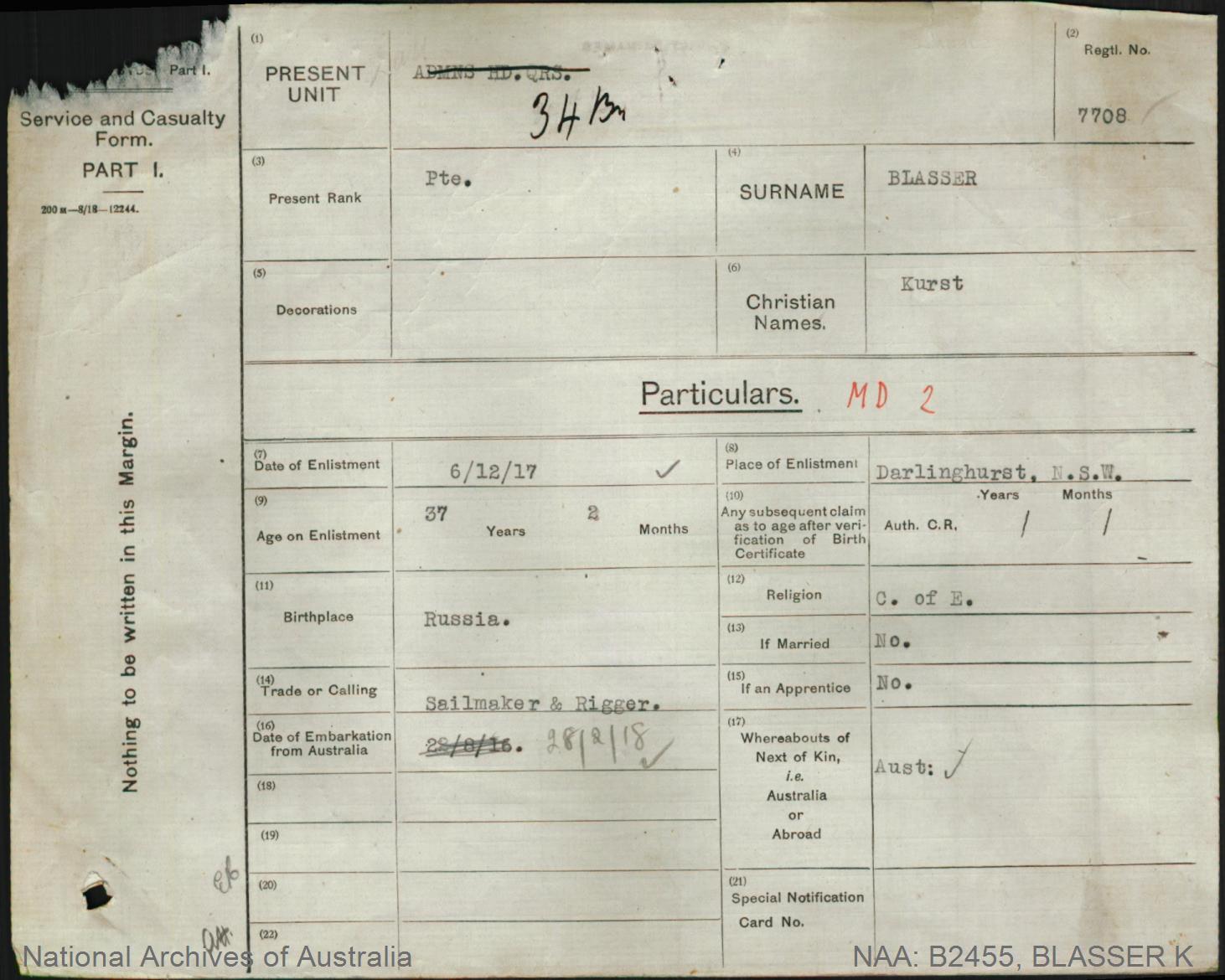
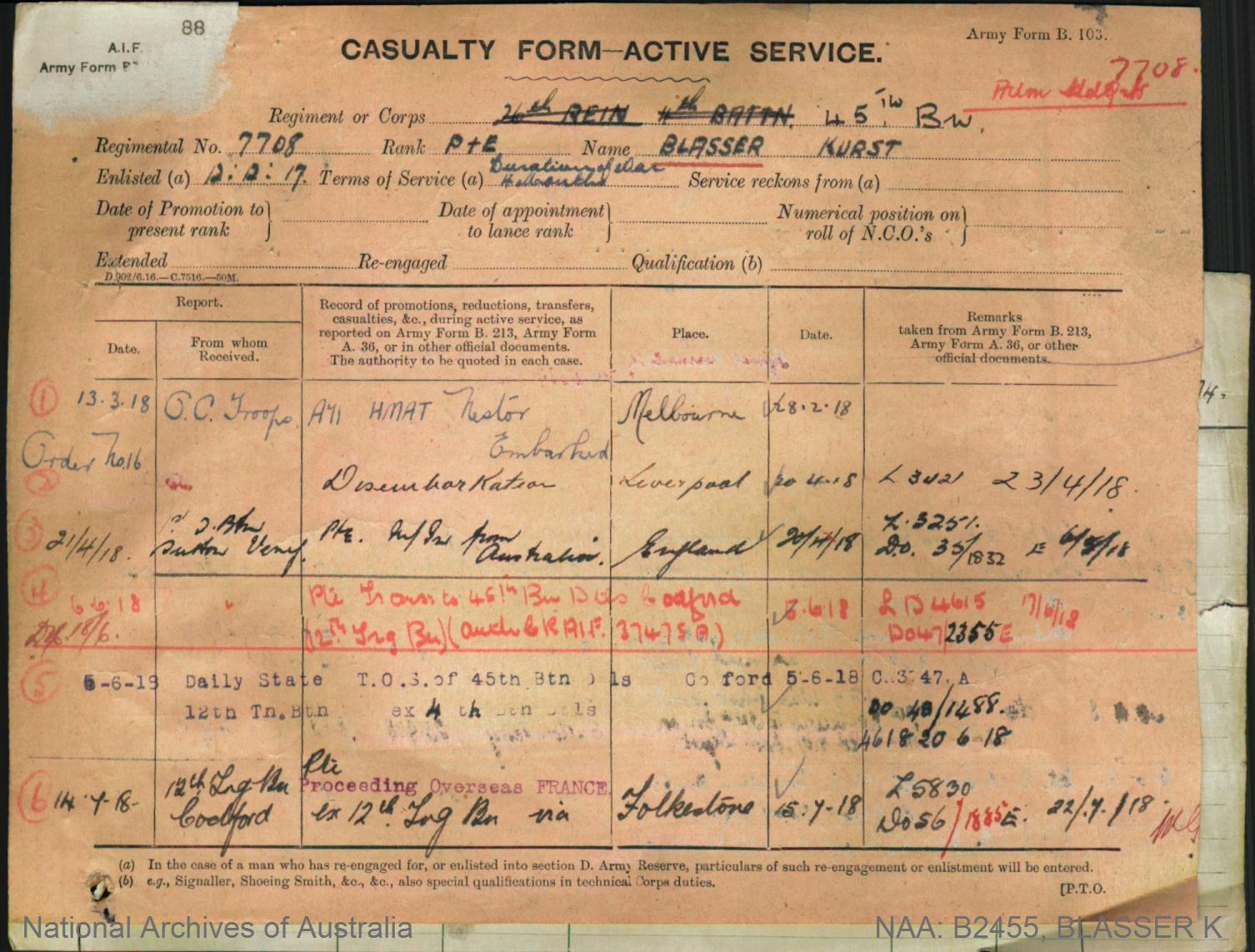
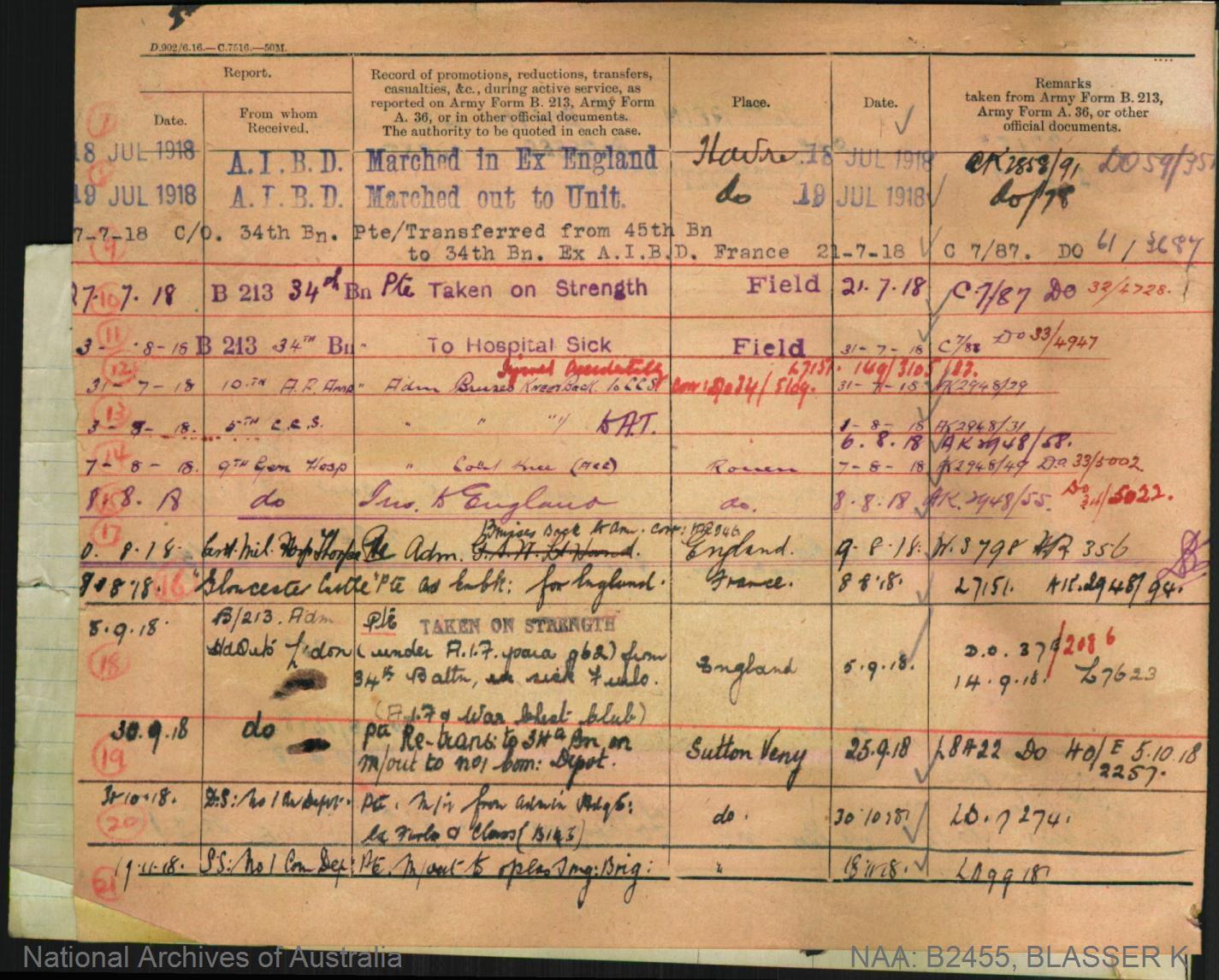
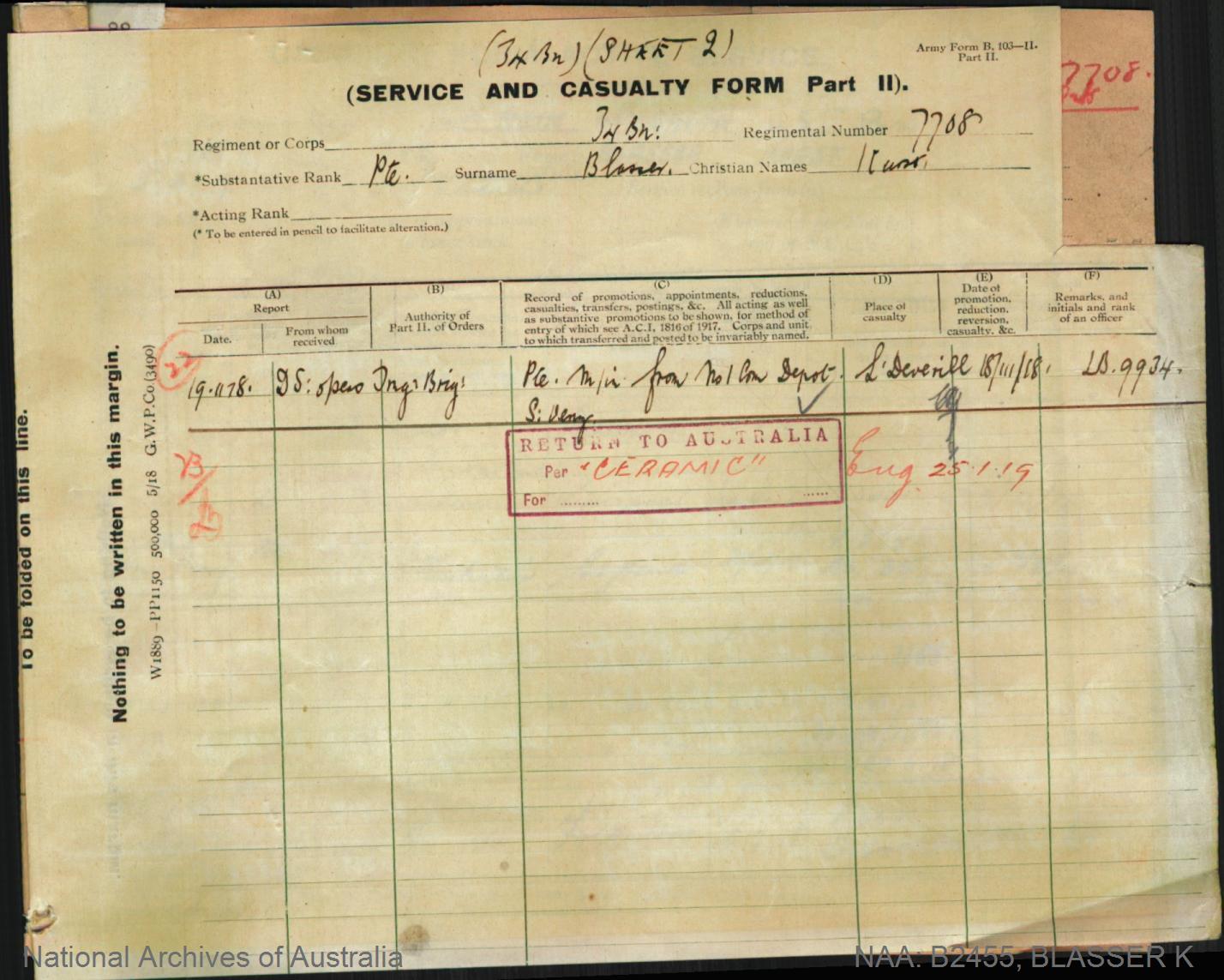

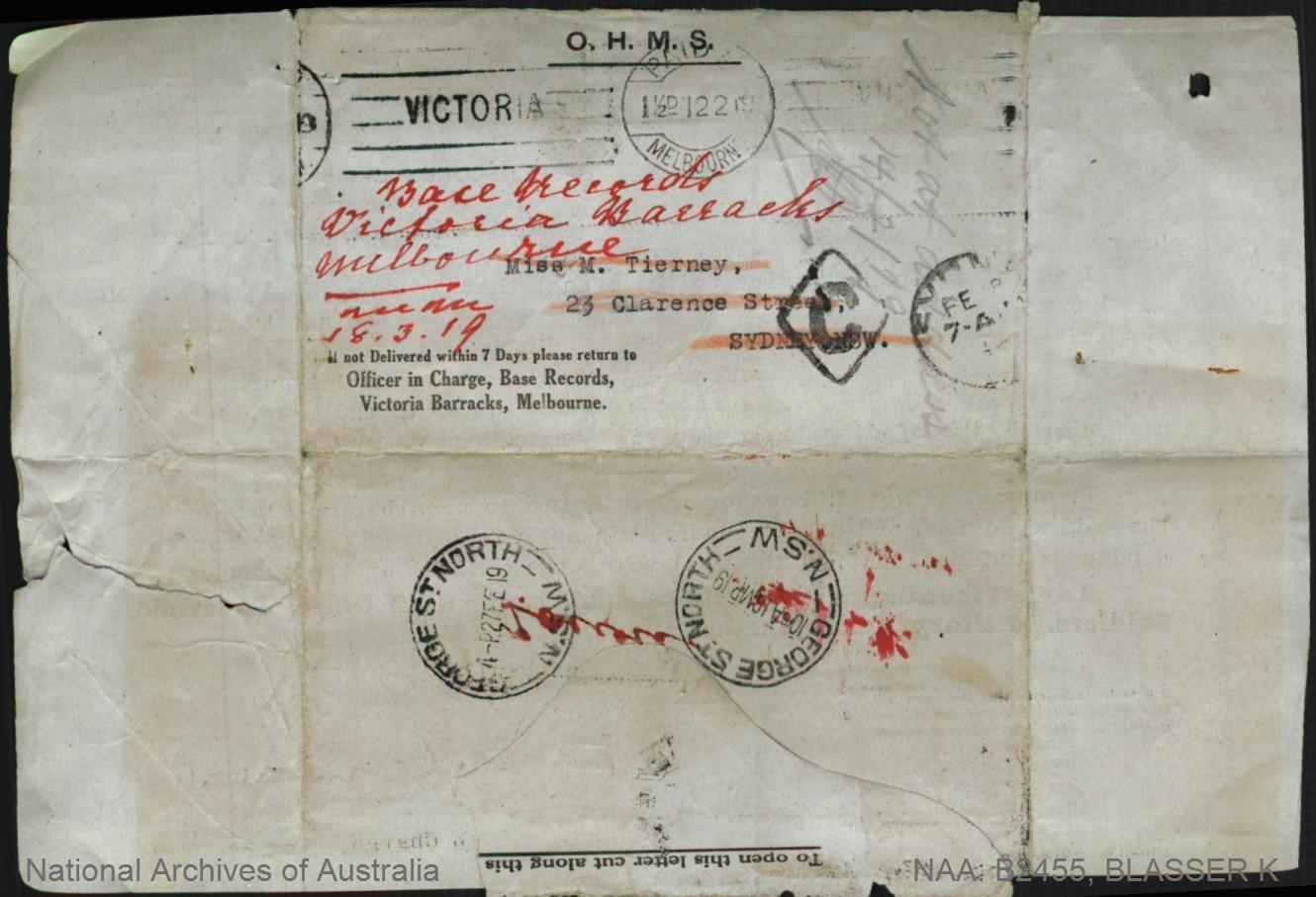

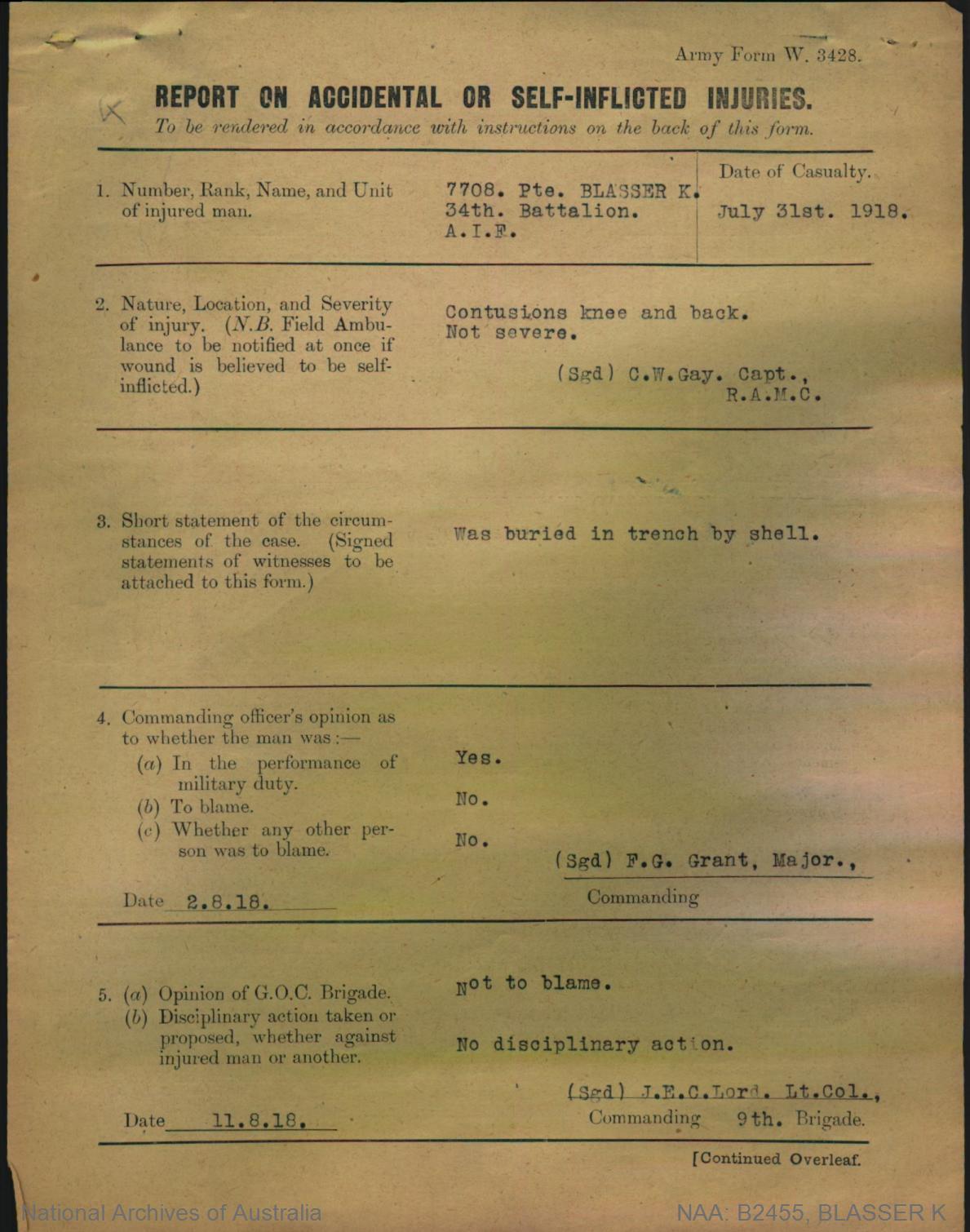
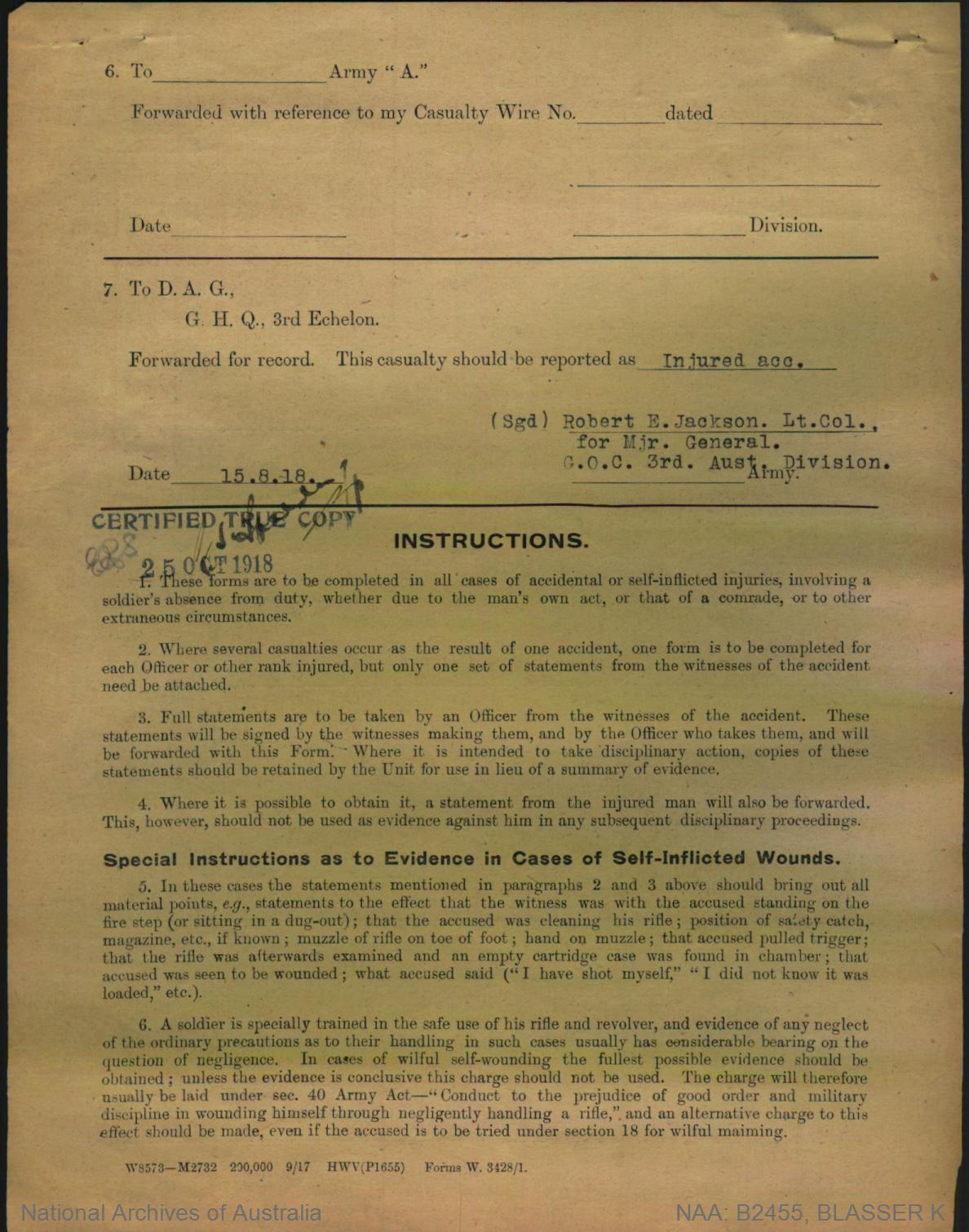
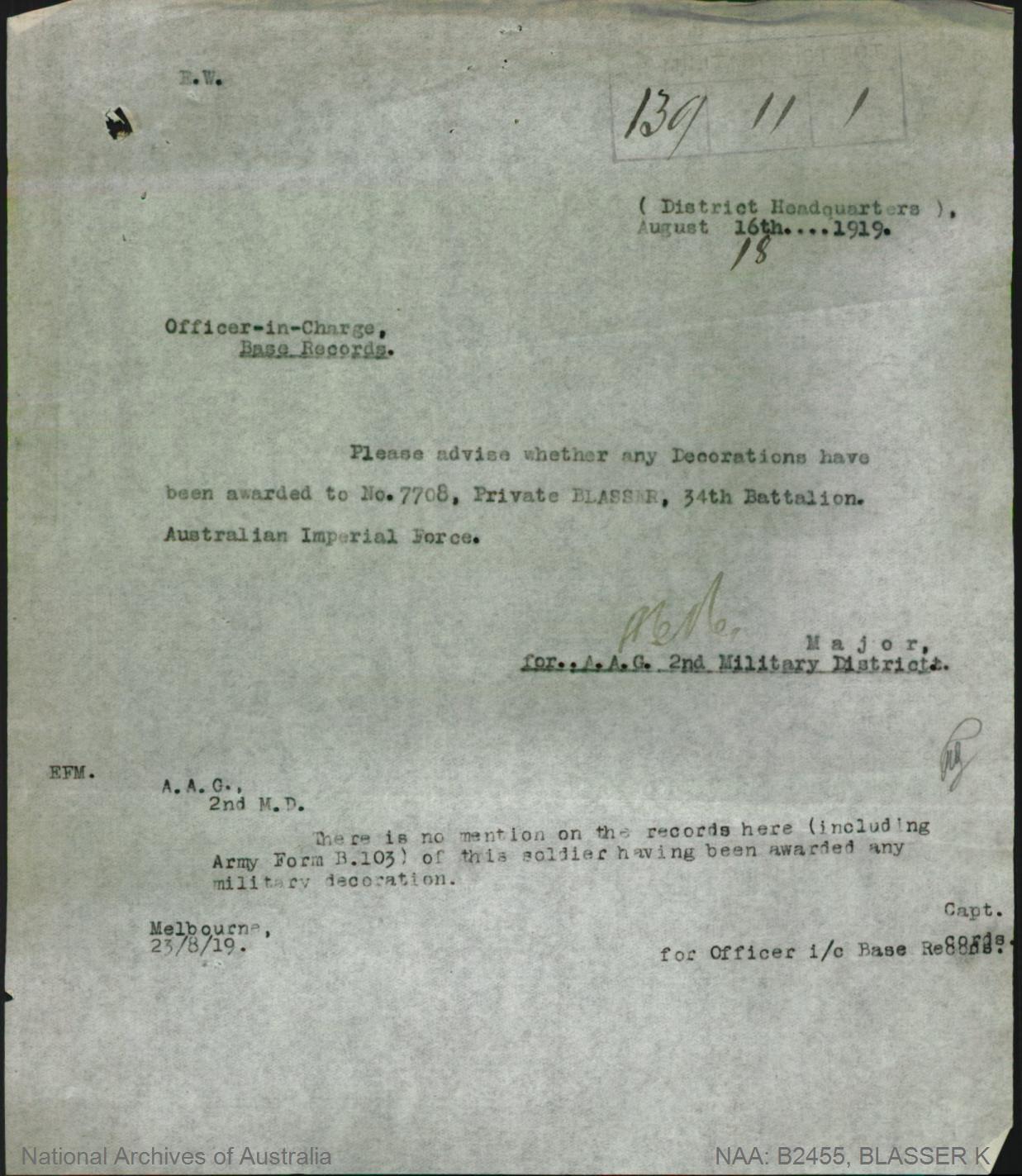




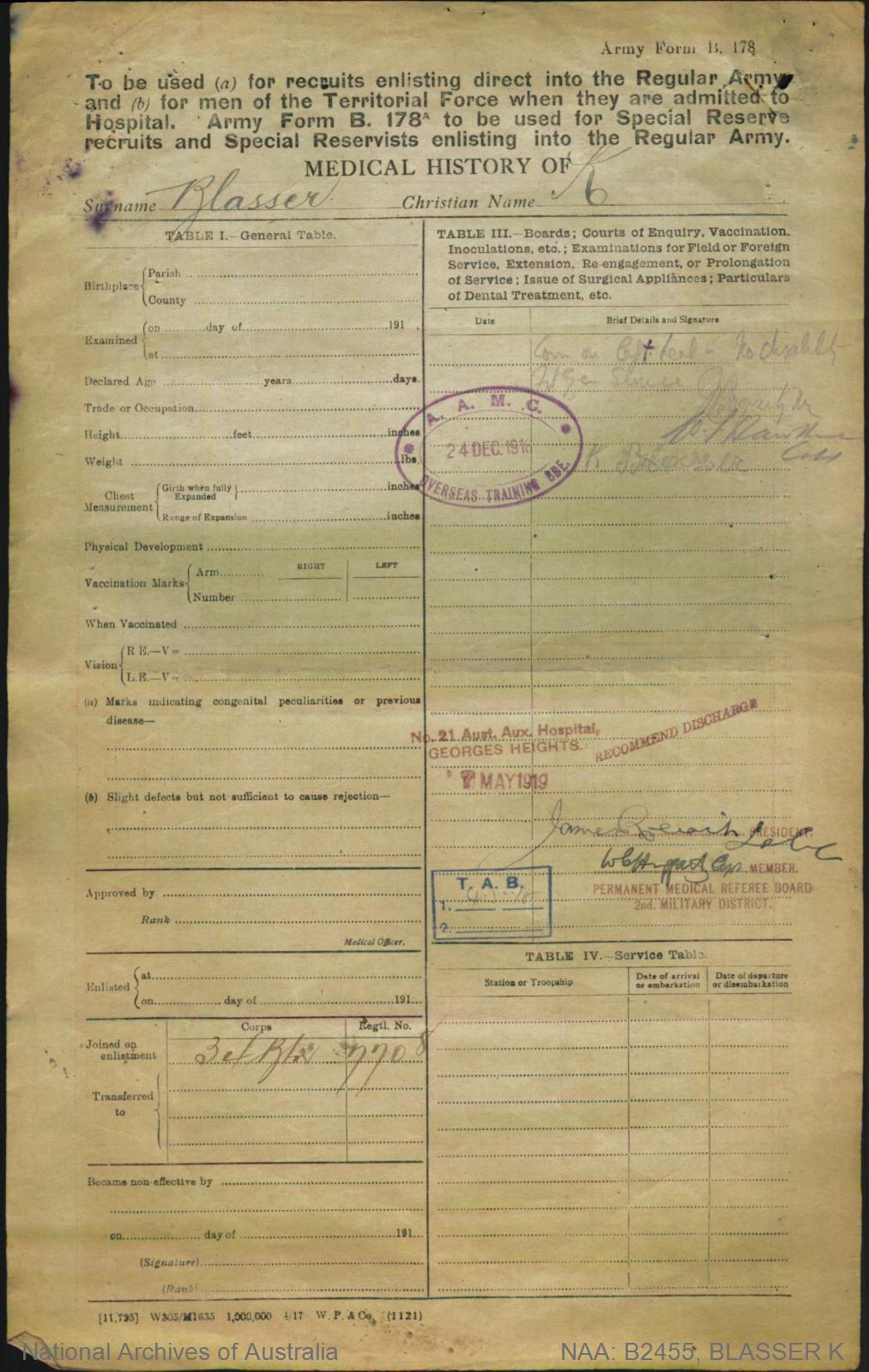

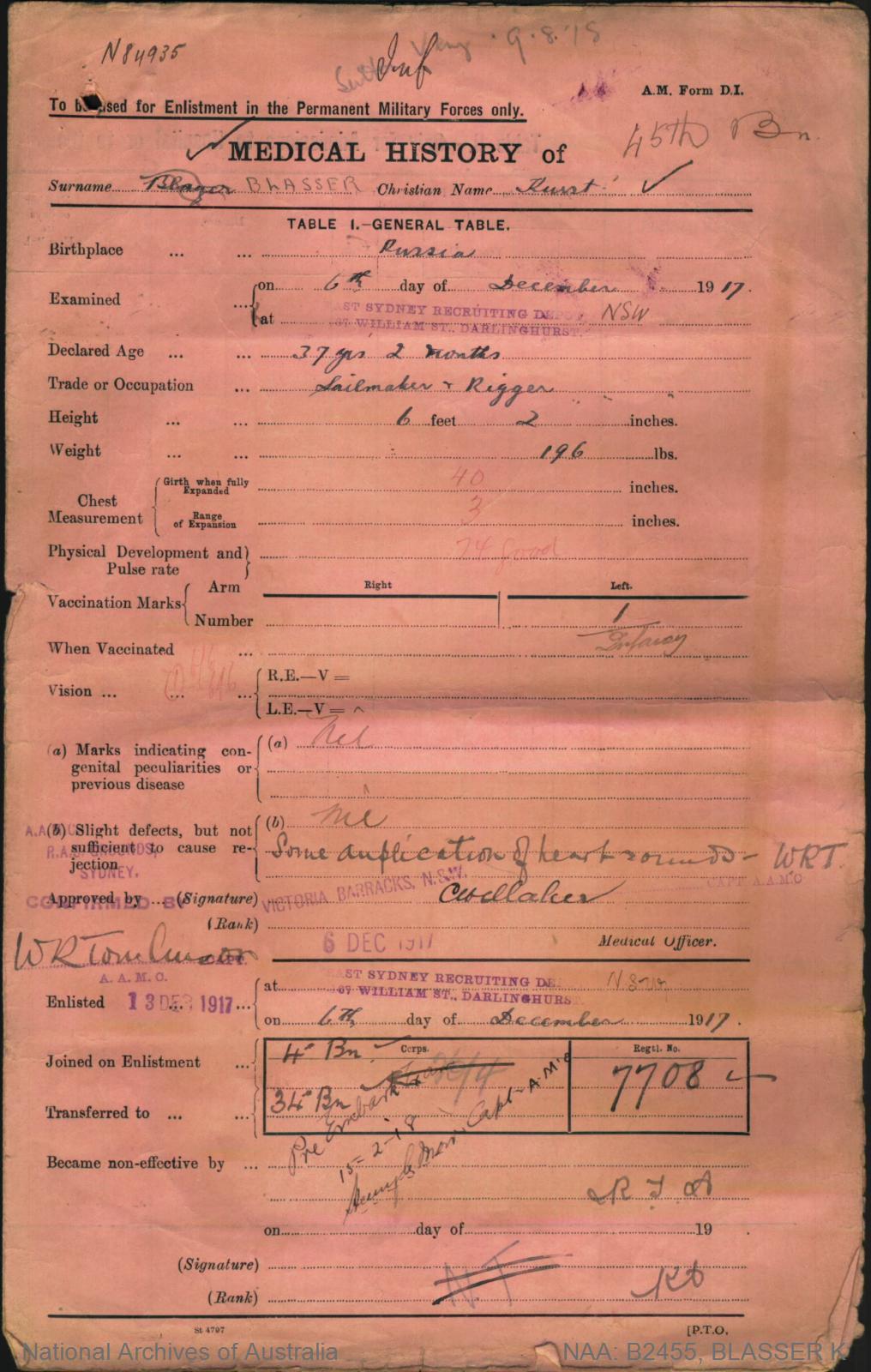

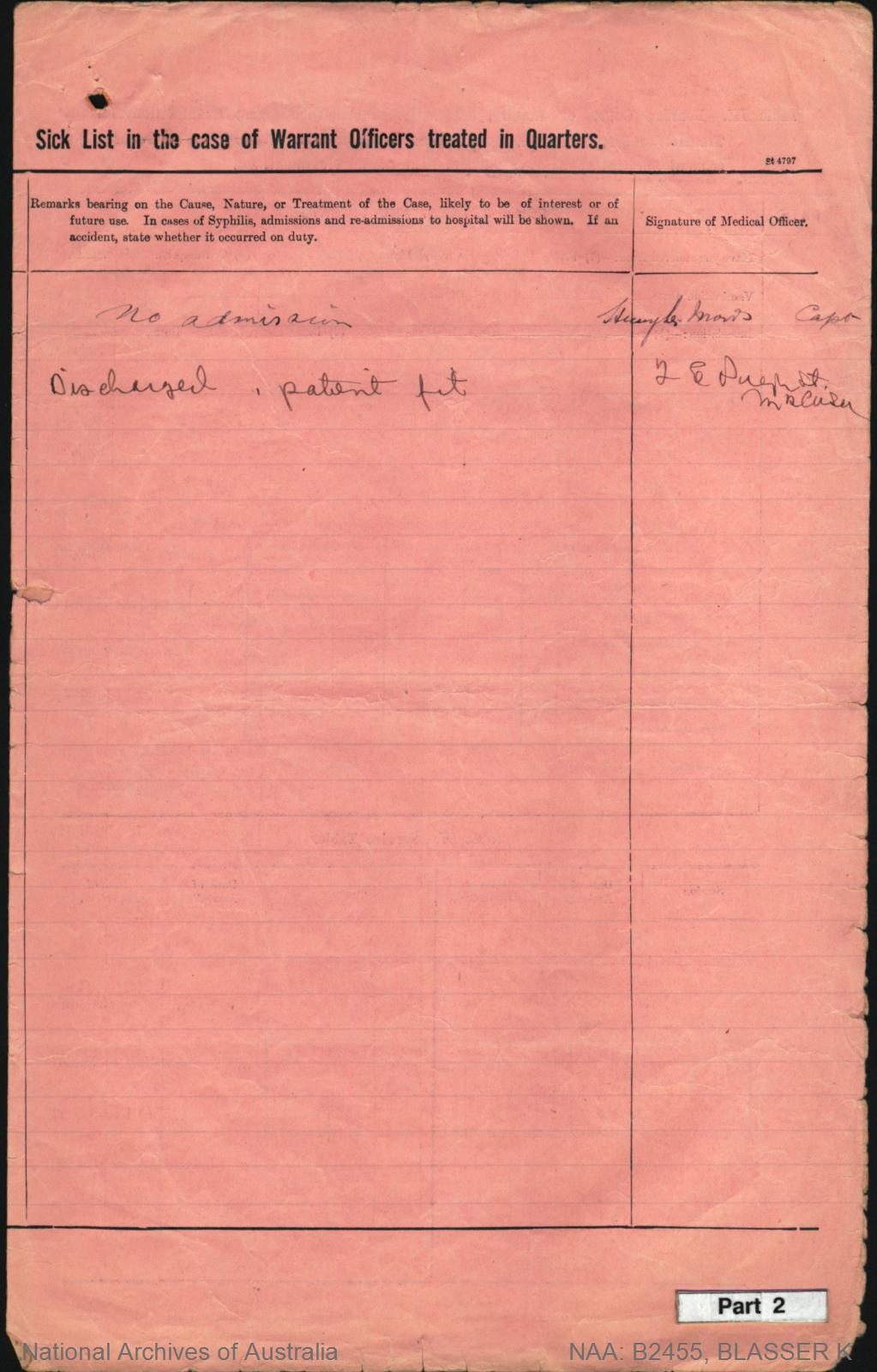
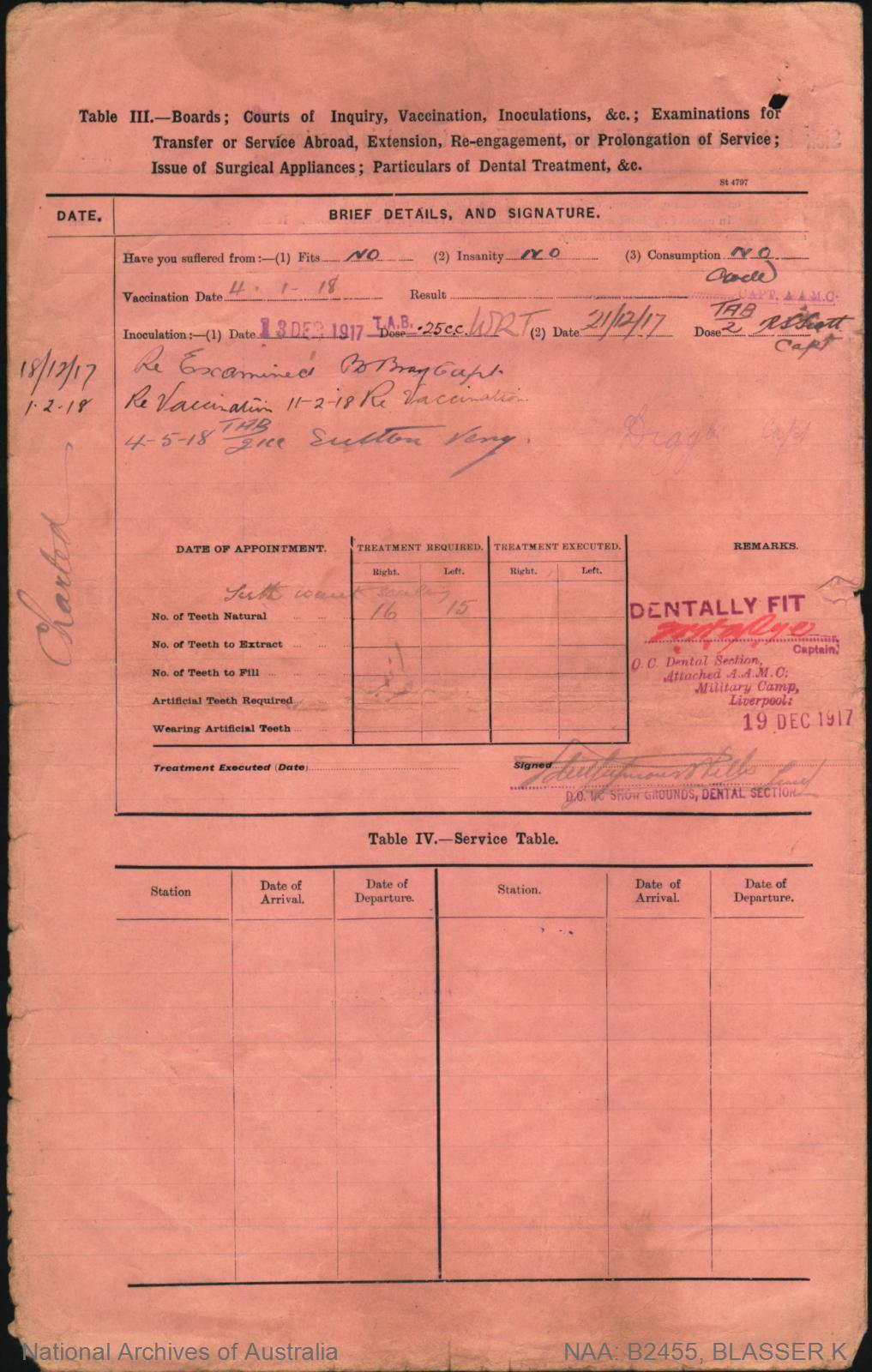
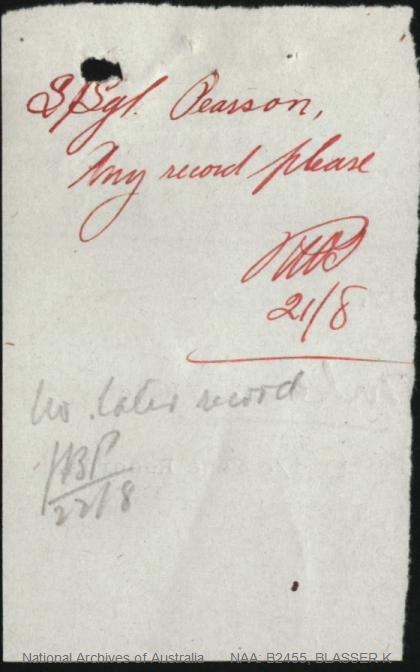




Re enlisted as a Concentration Camp Guard
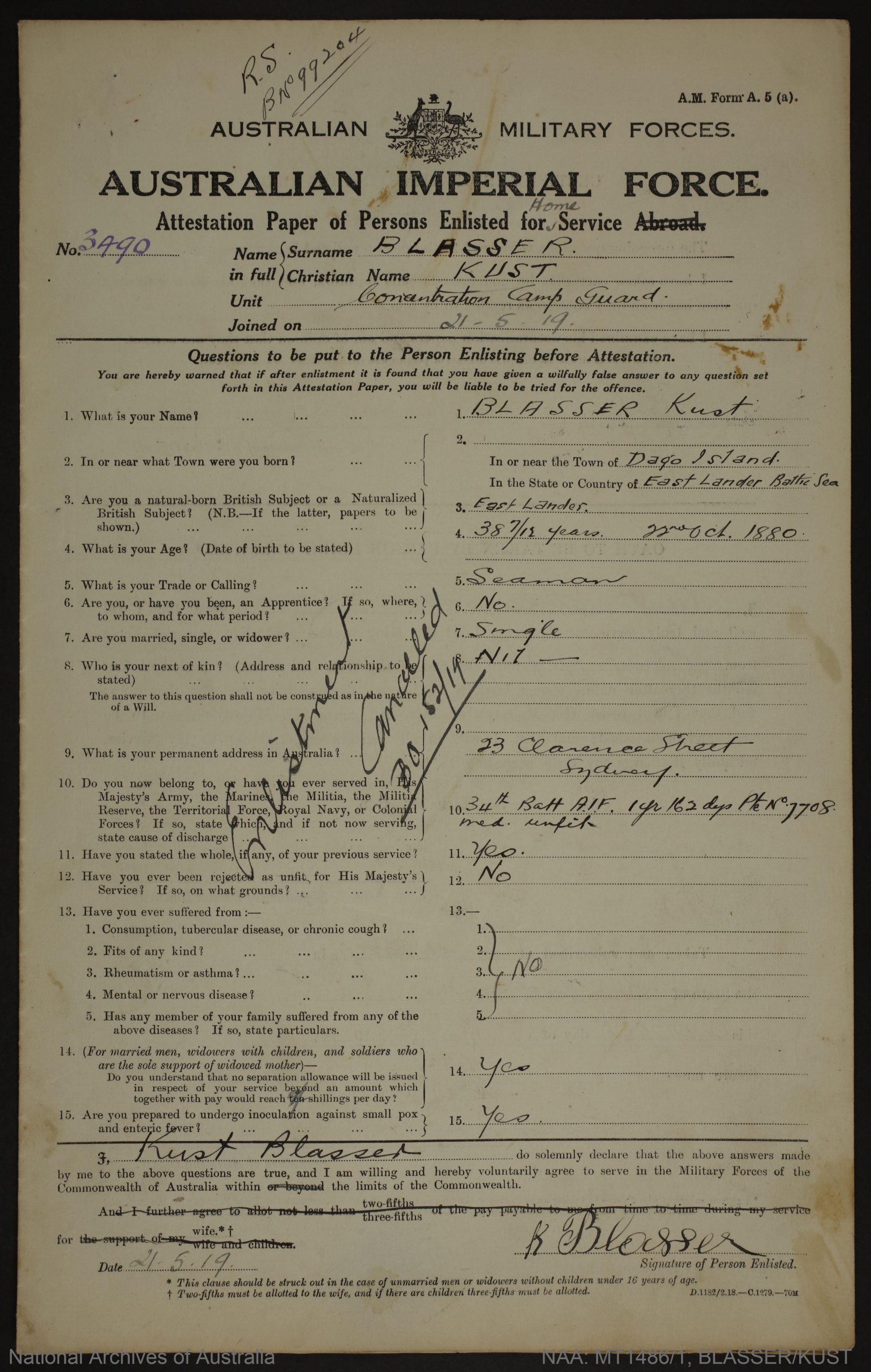
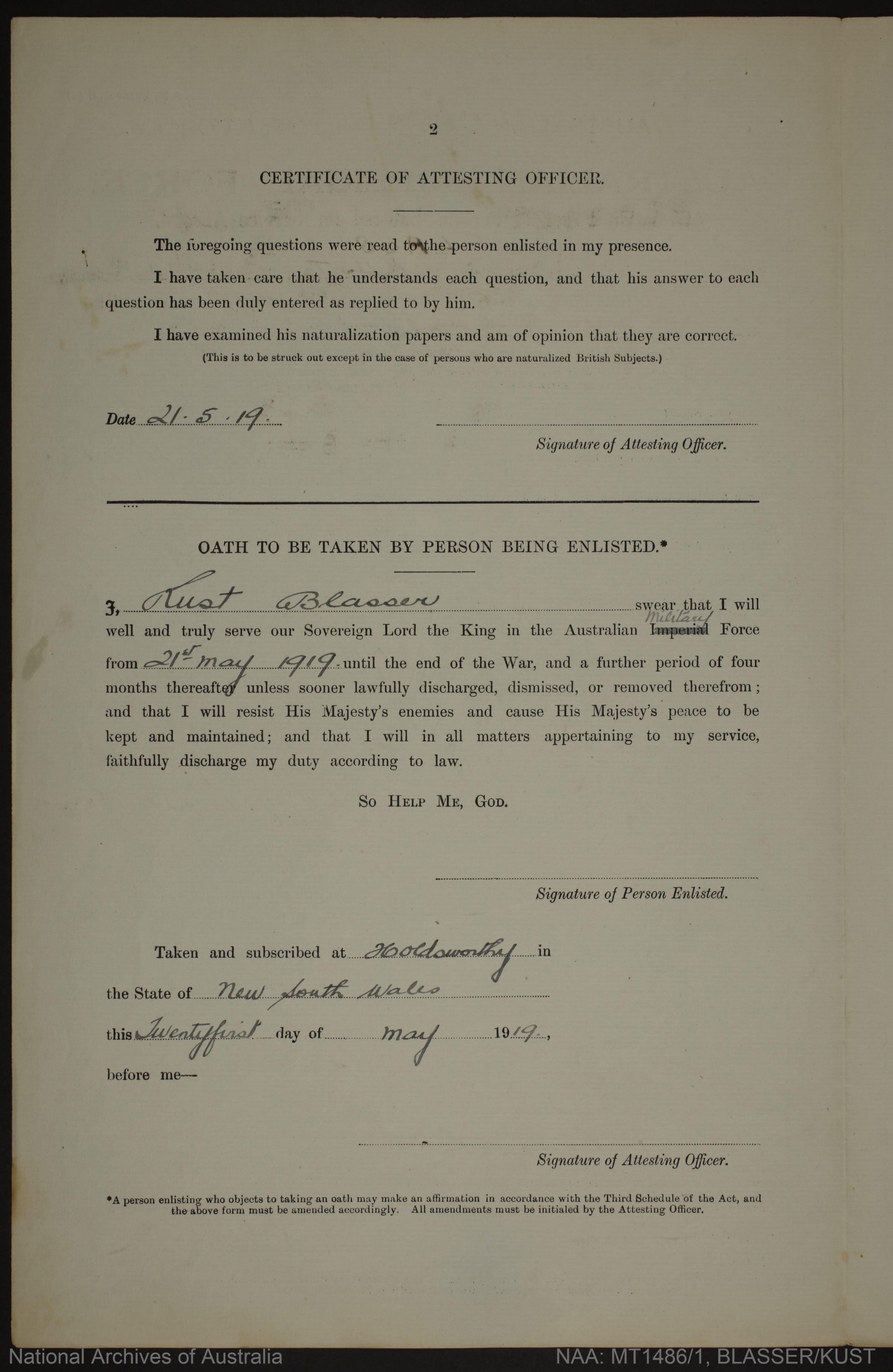
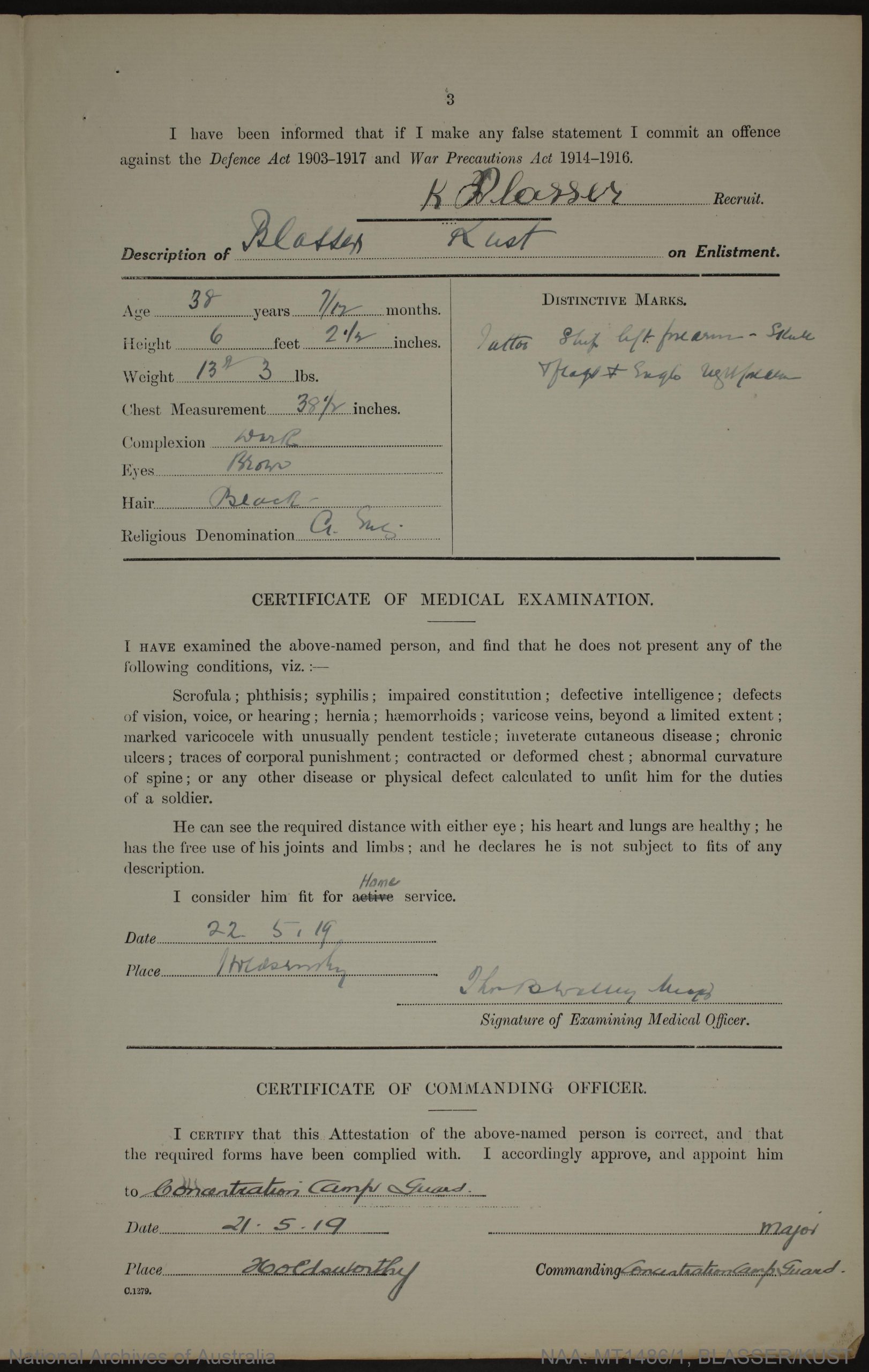
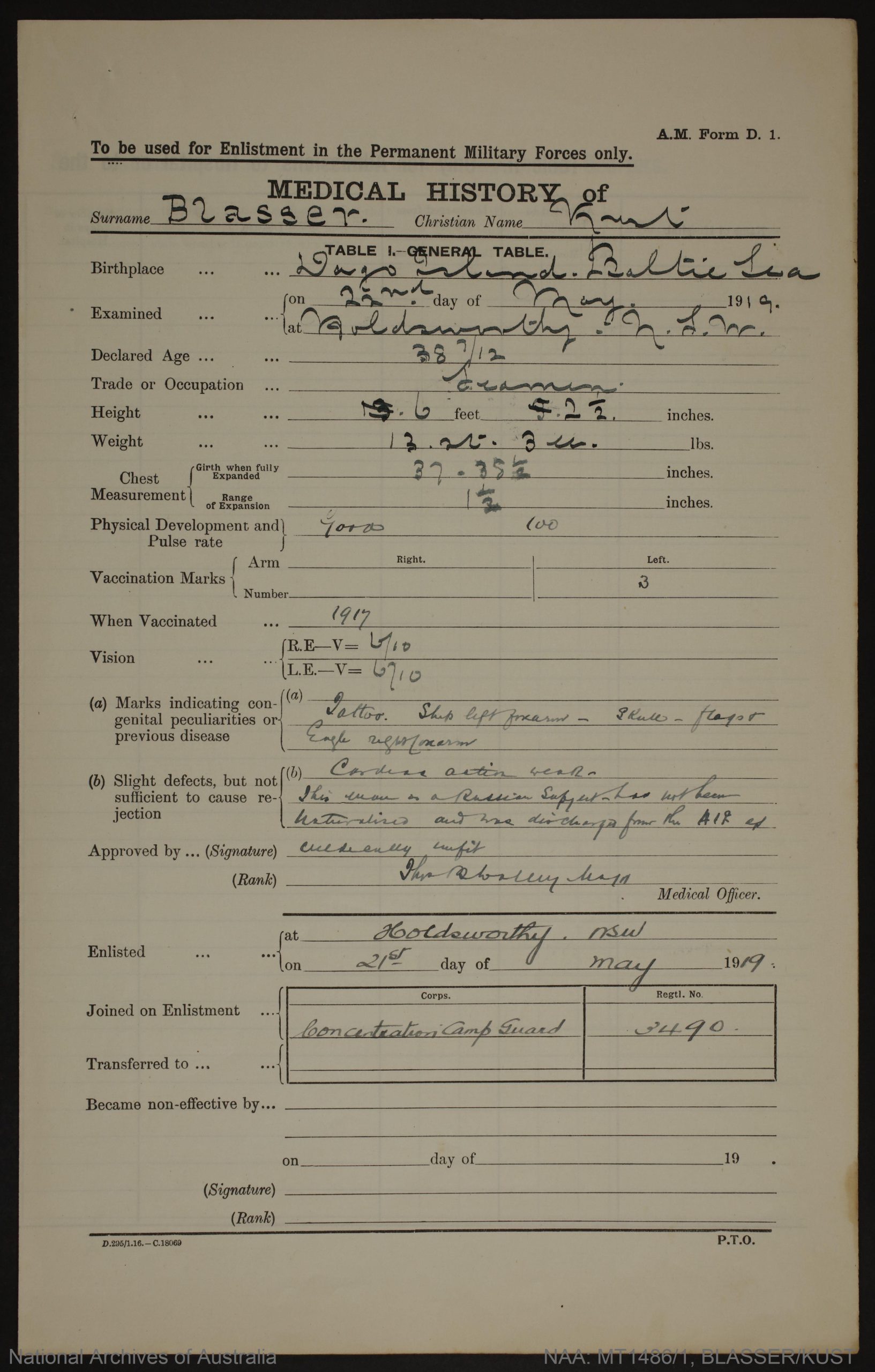

© Commonwealth of Australia (National Archives of Australia)
Under Construction: 03/11/2023-29/11/2023.
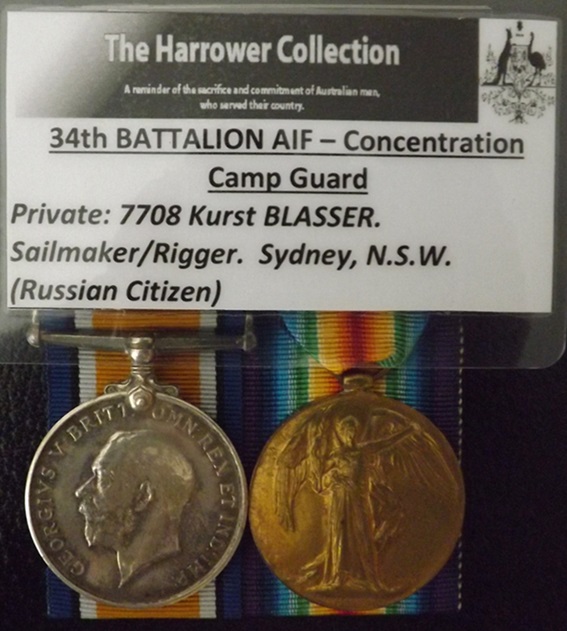
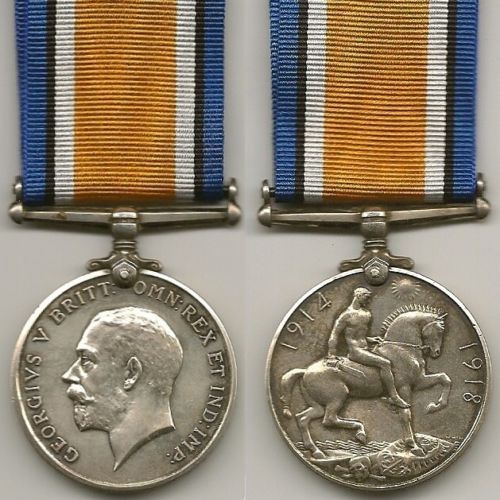
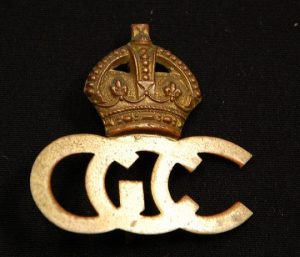
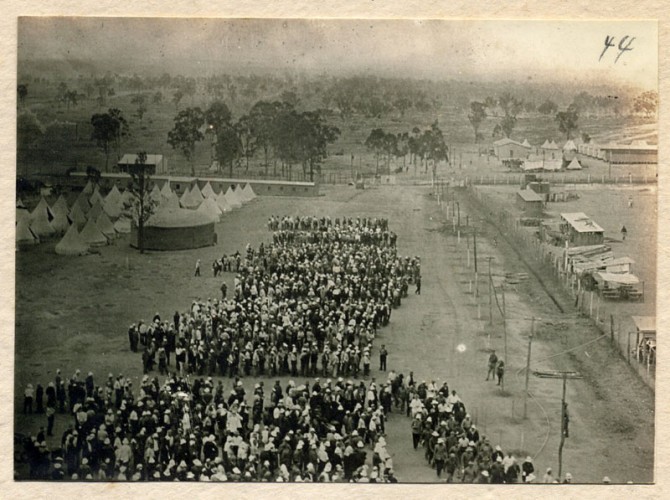
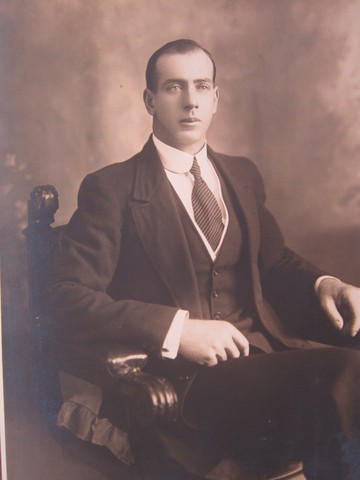


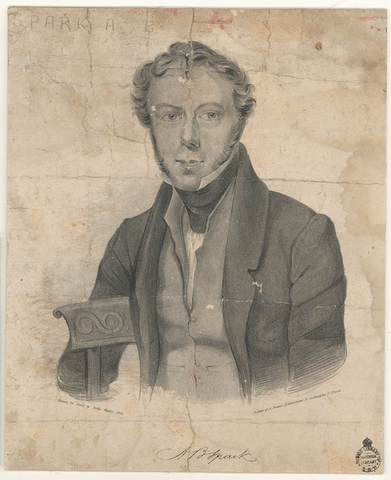


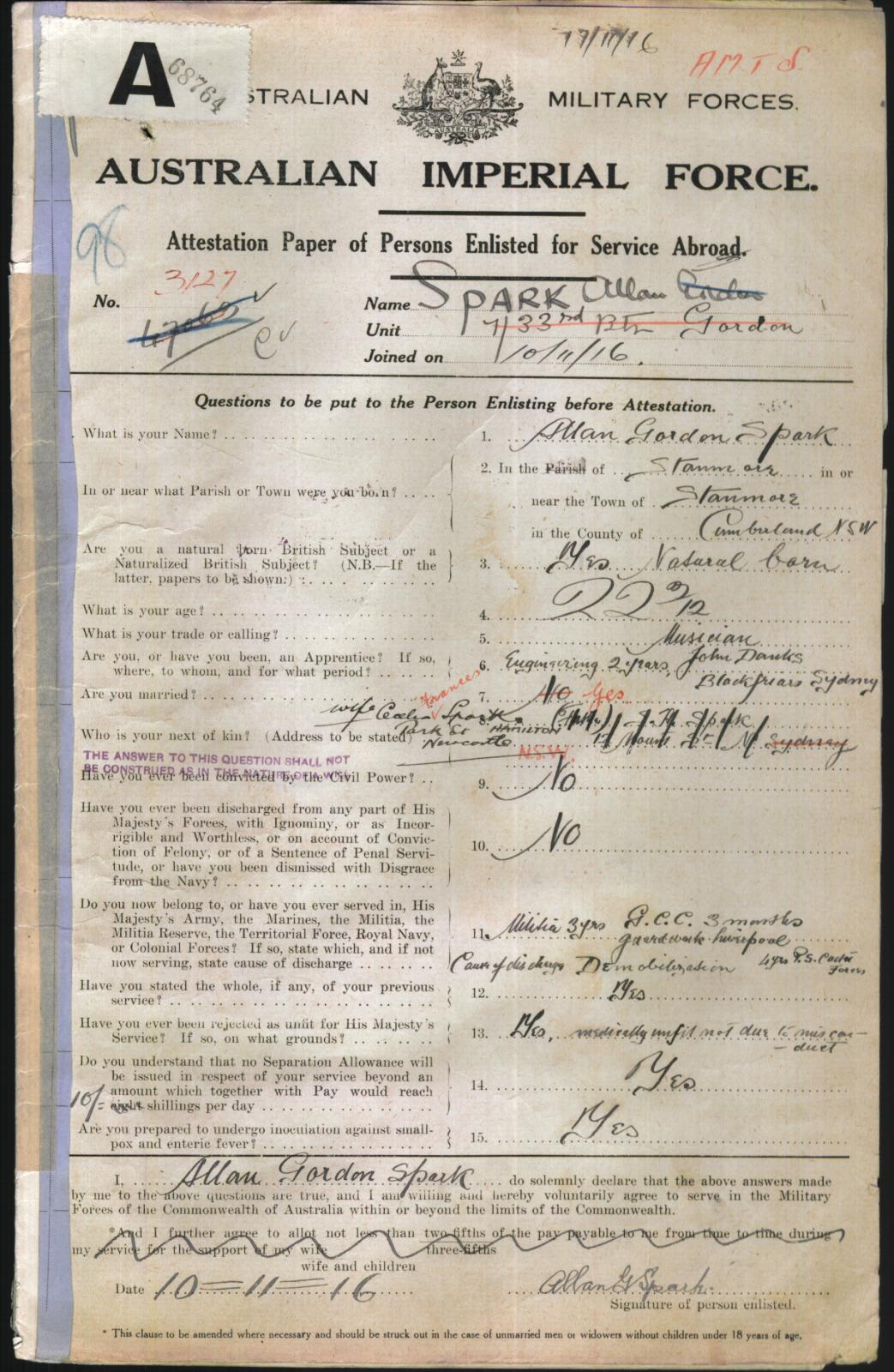
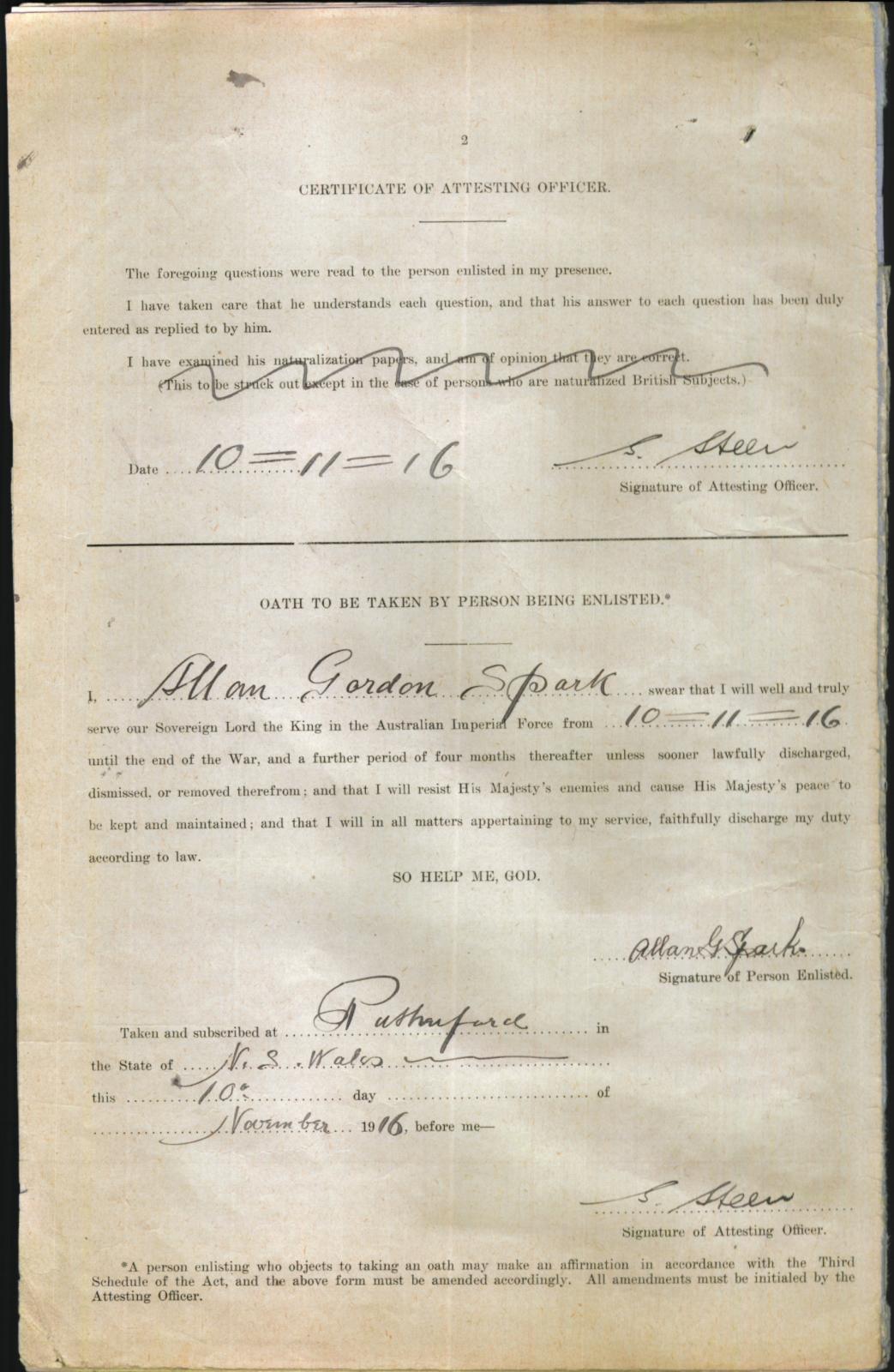

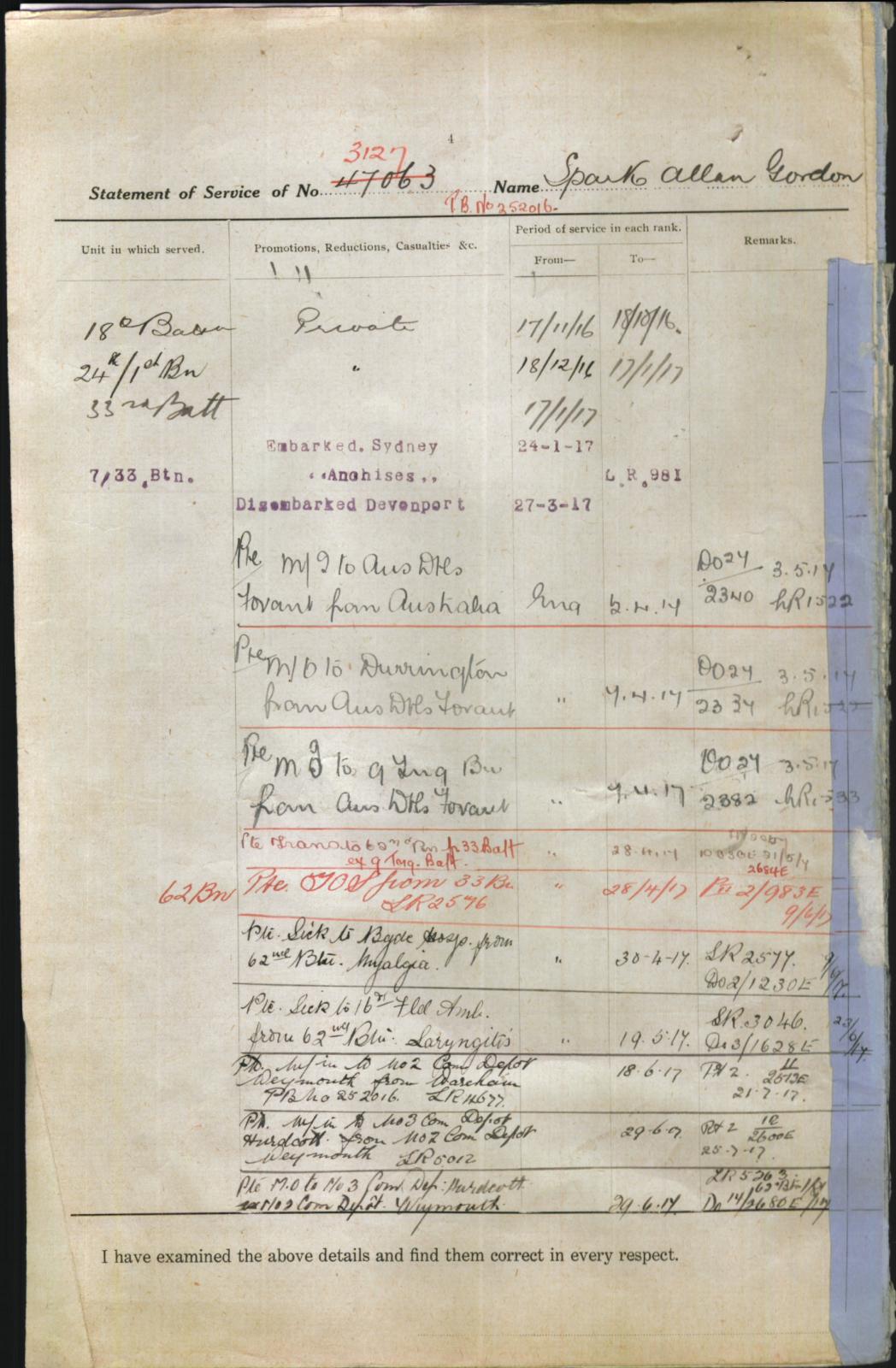
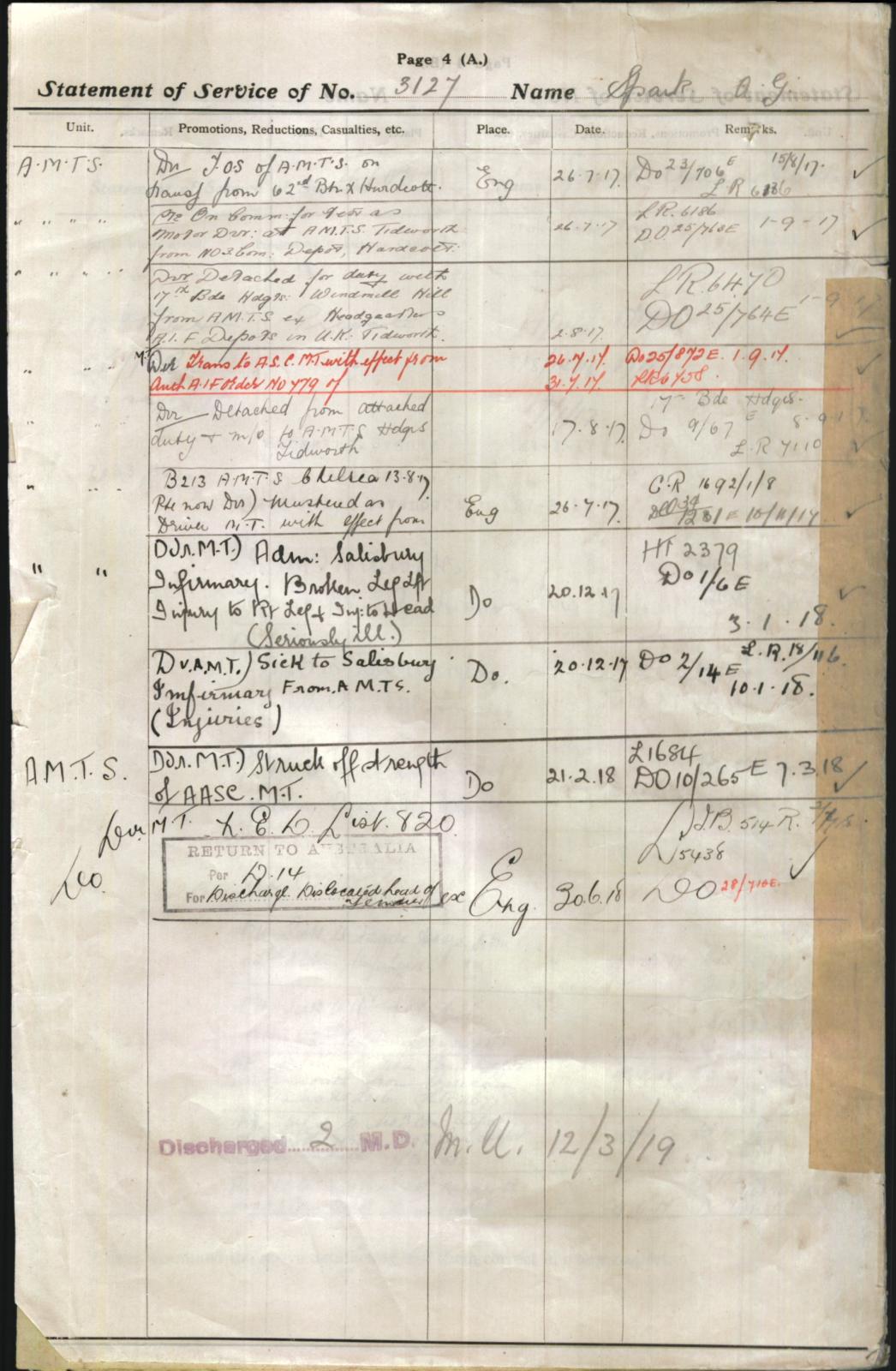


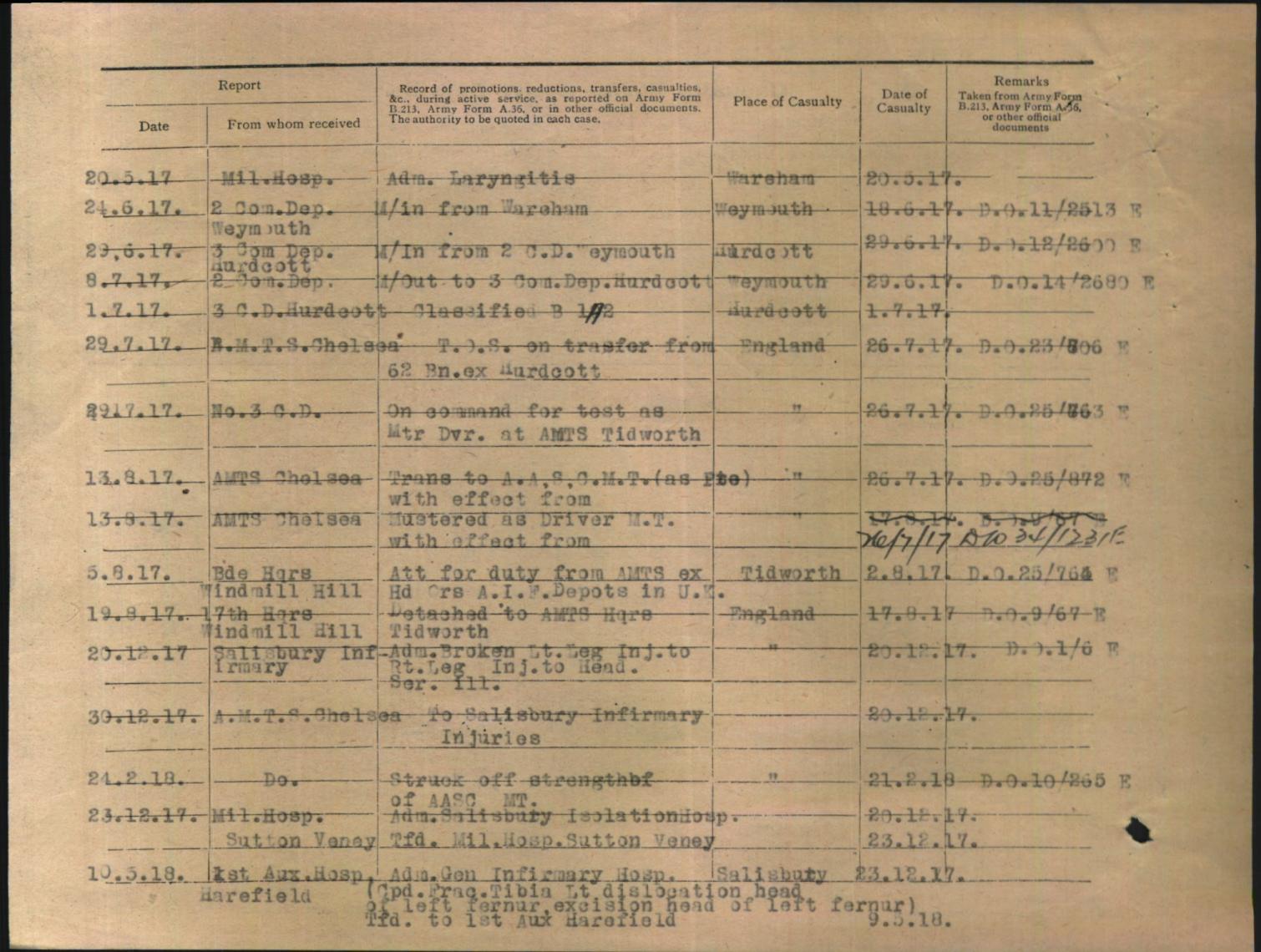
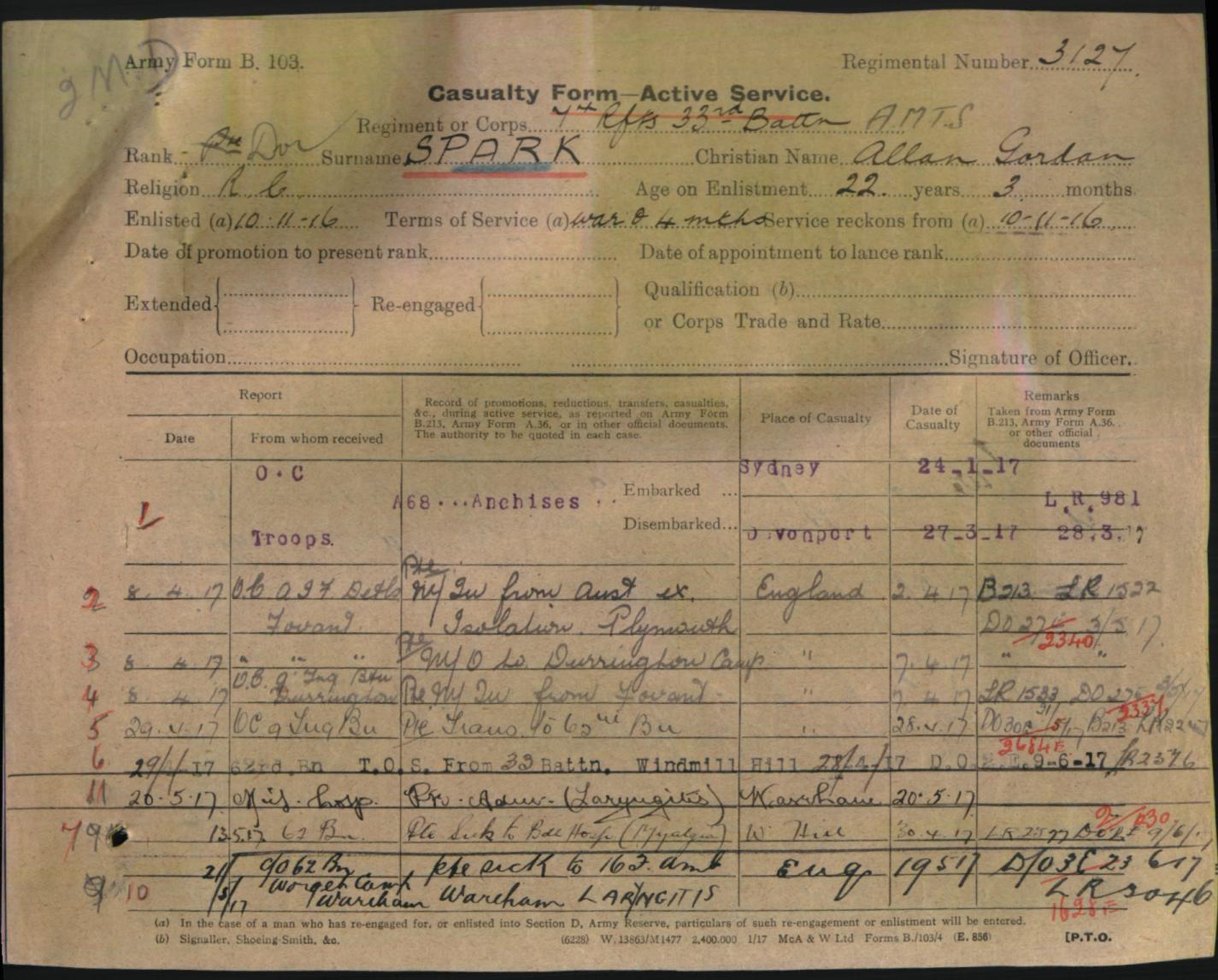
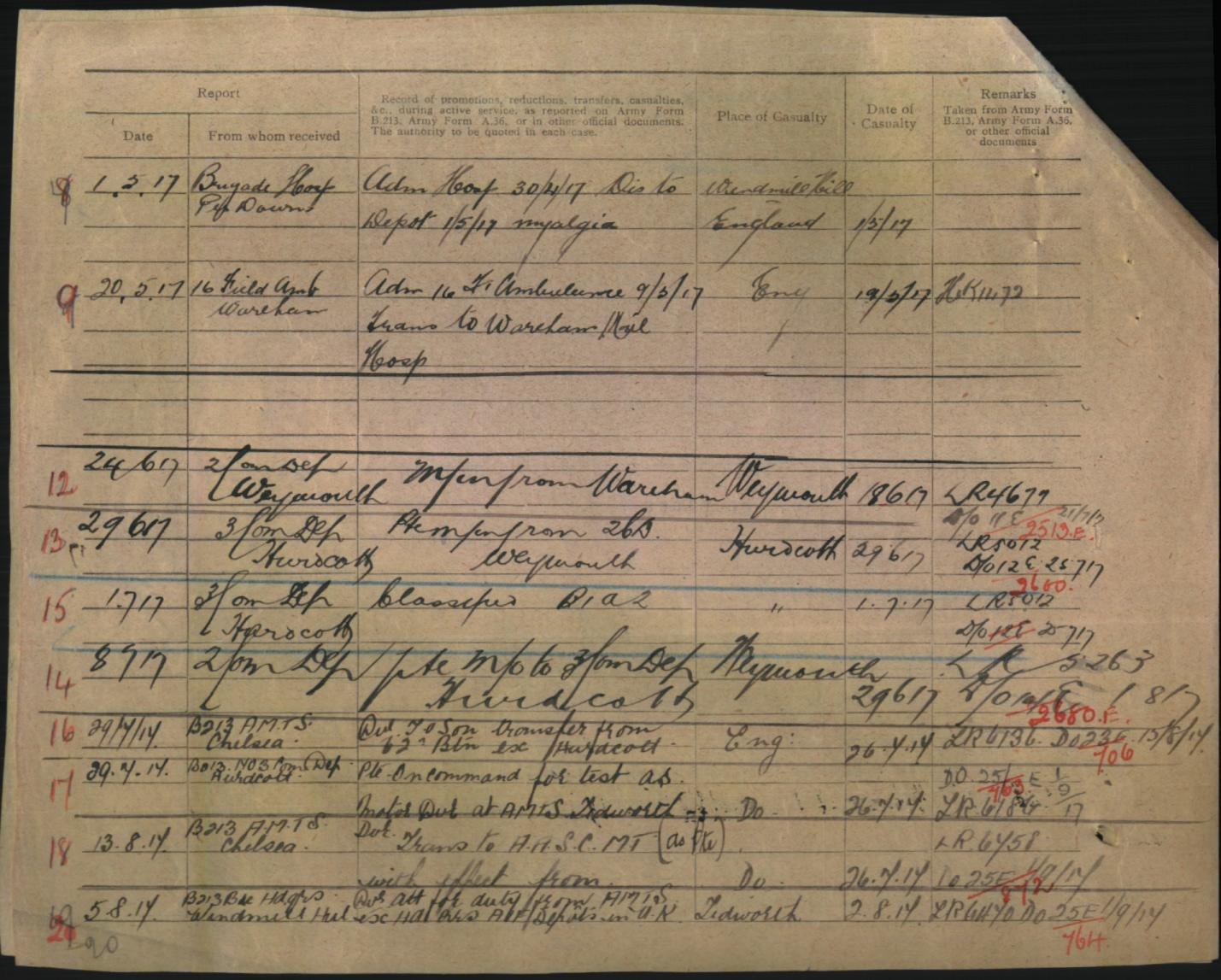
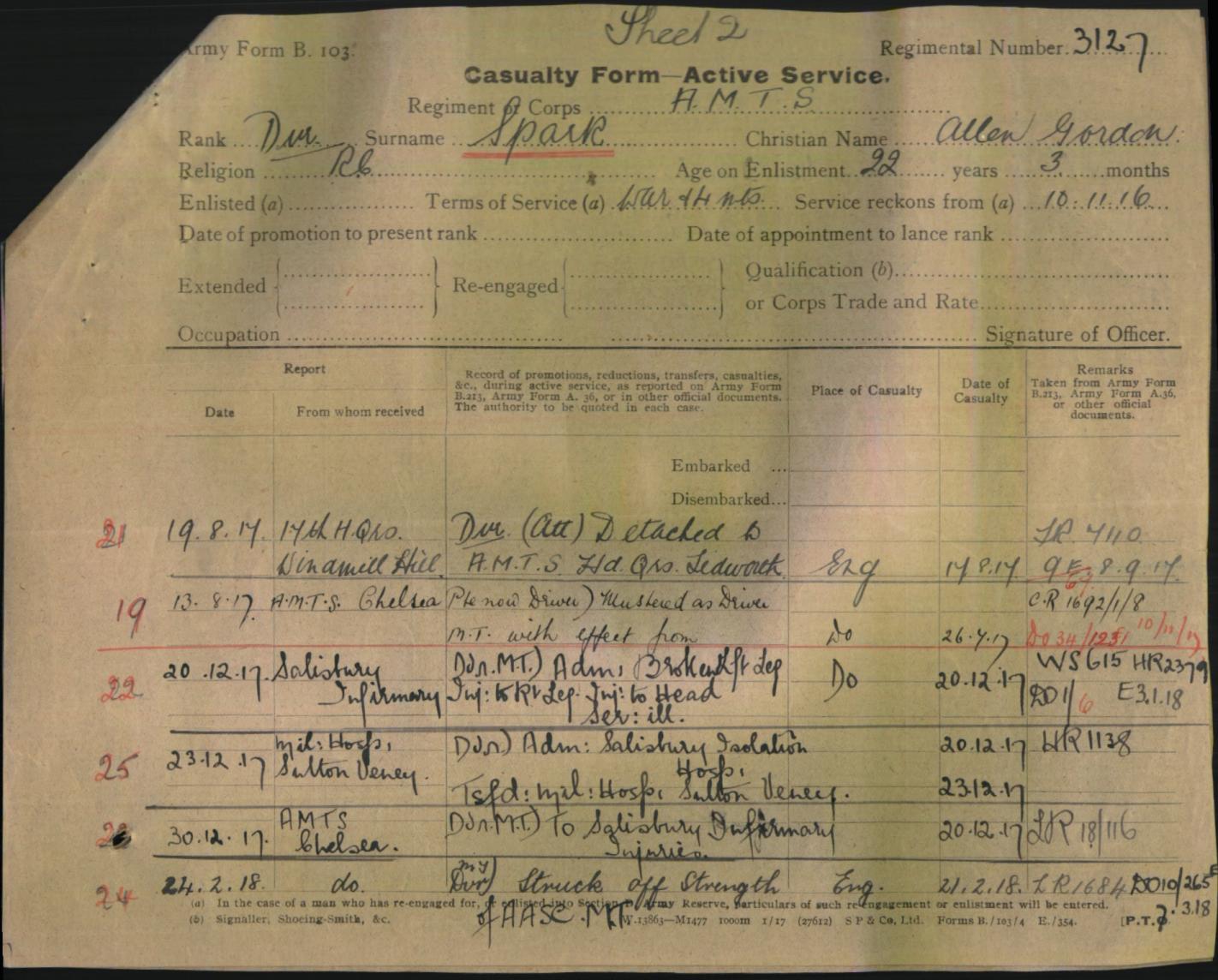
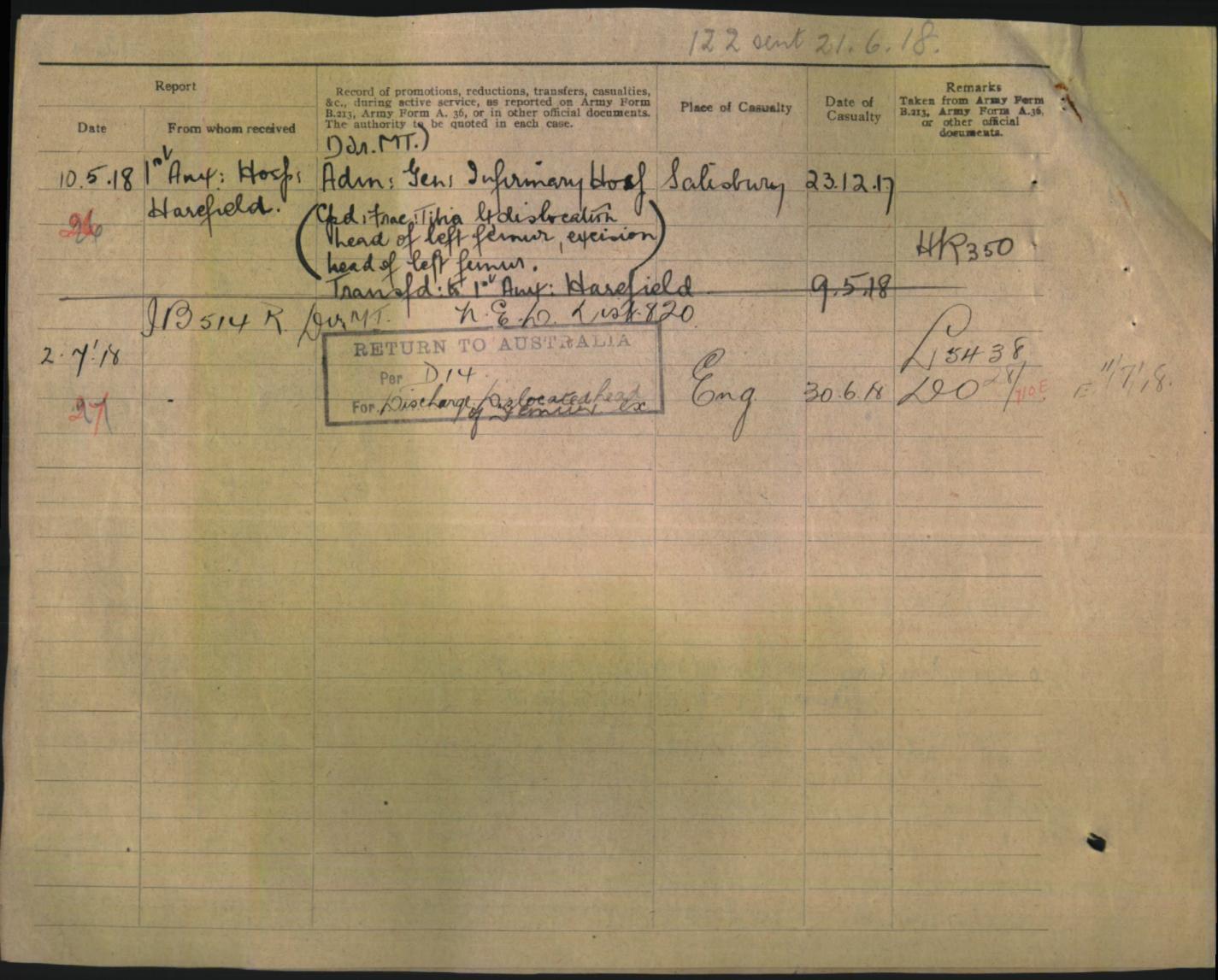
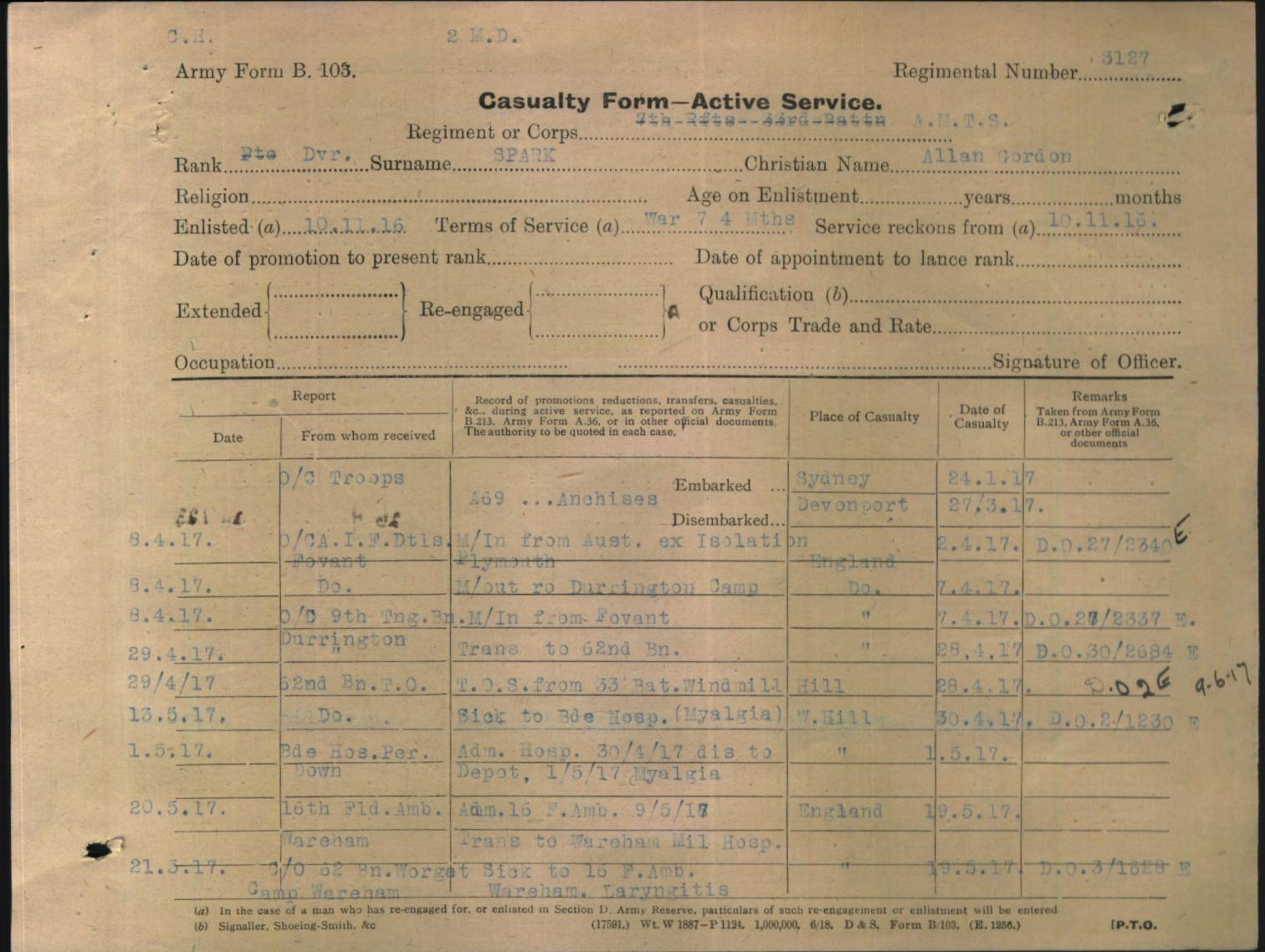
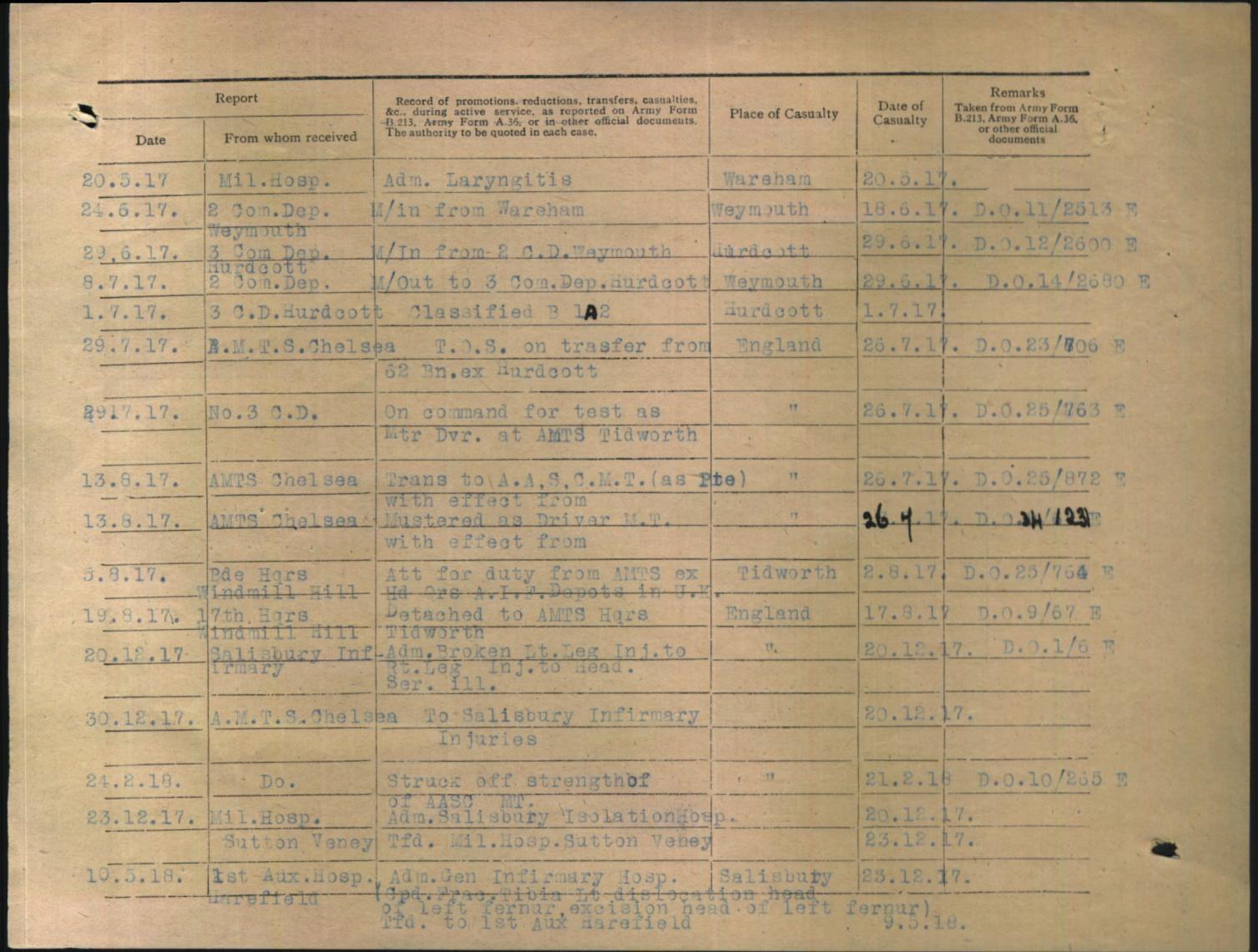
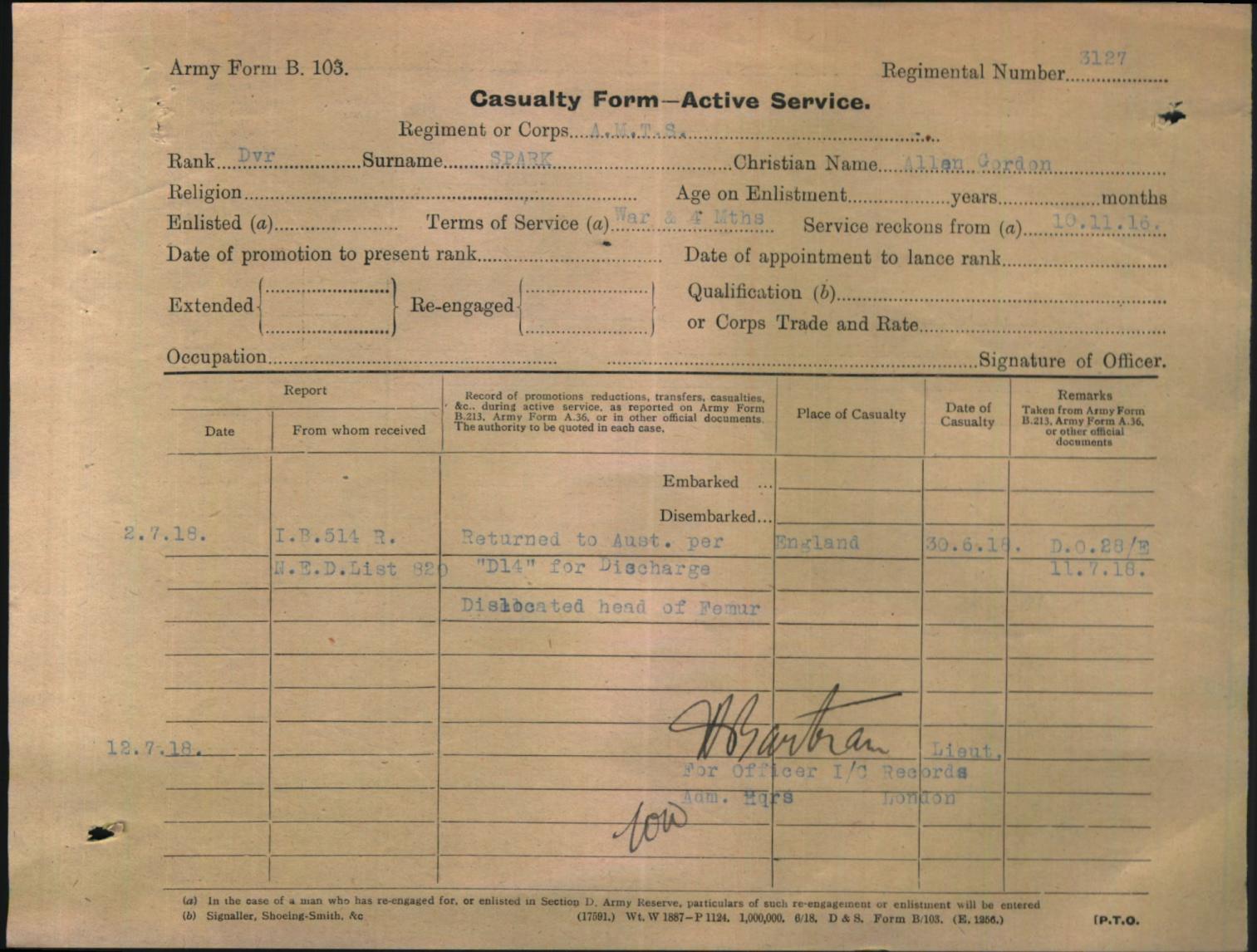

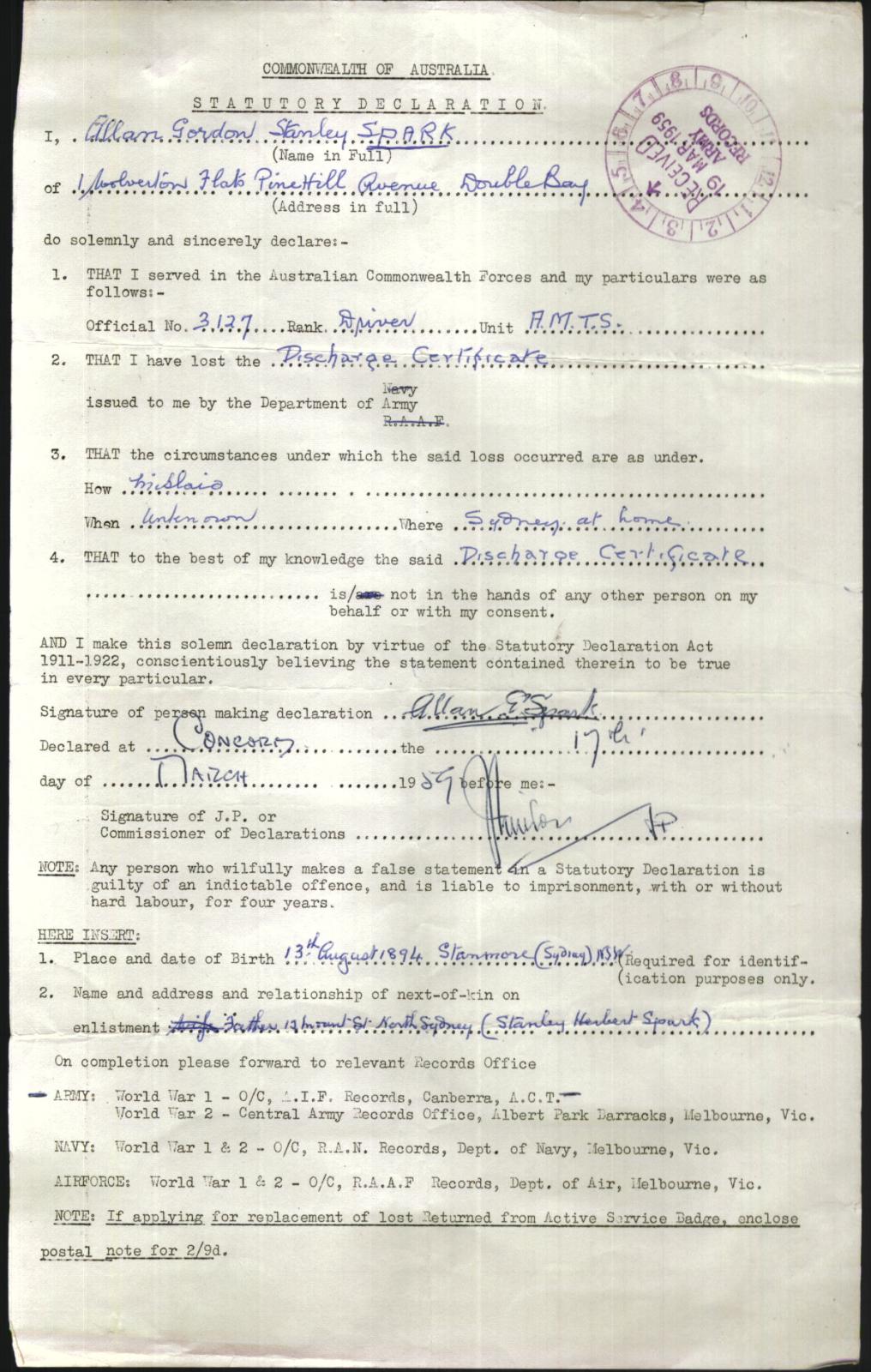

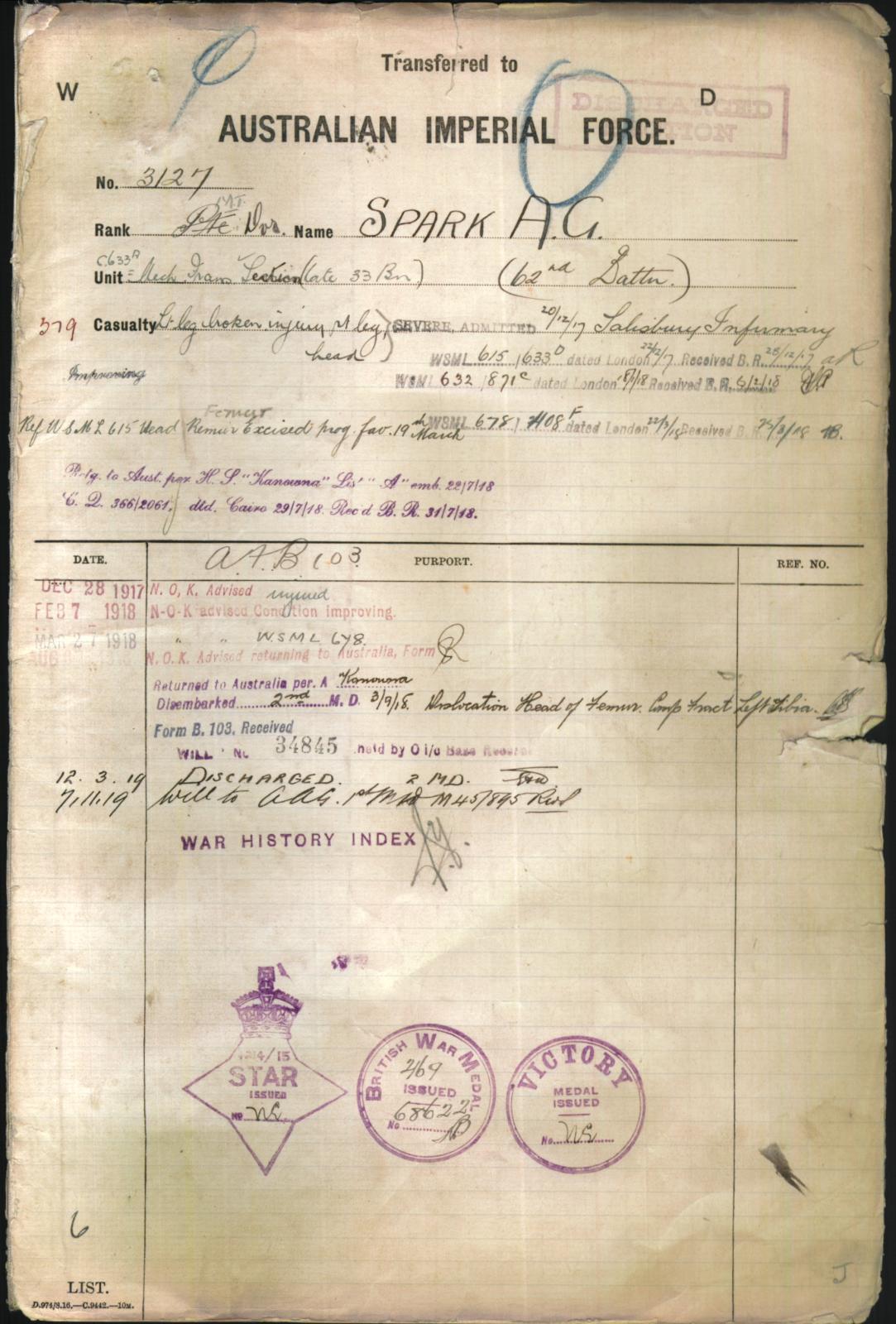

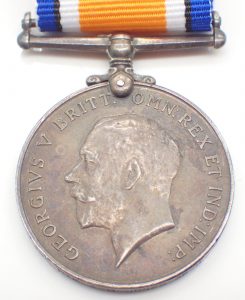



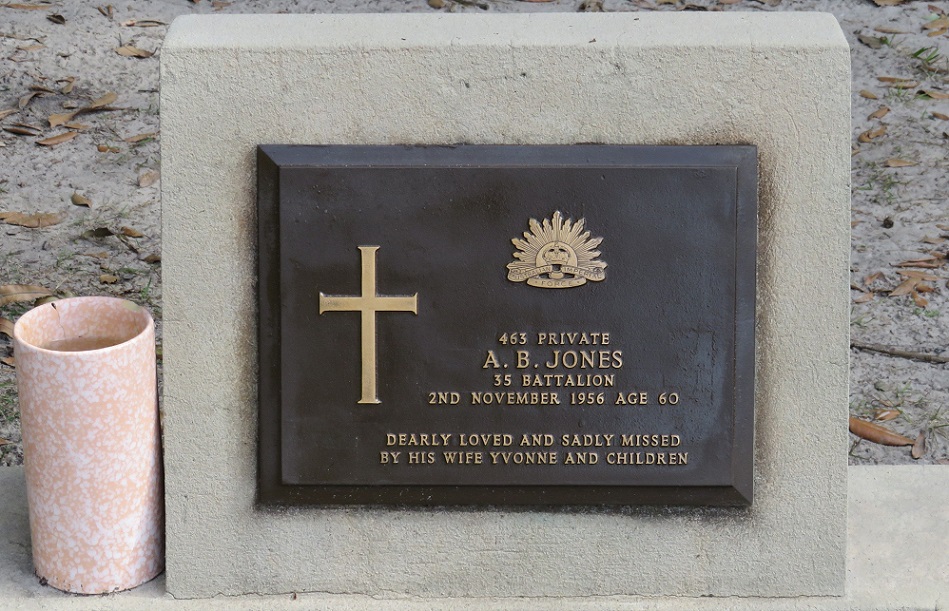

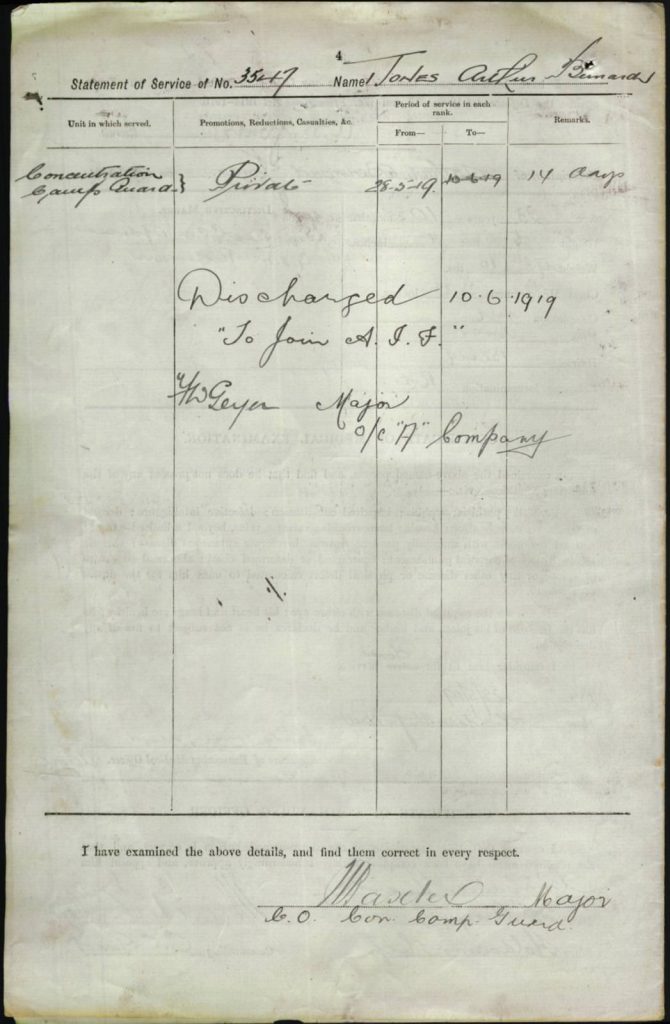


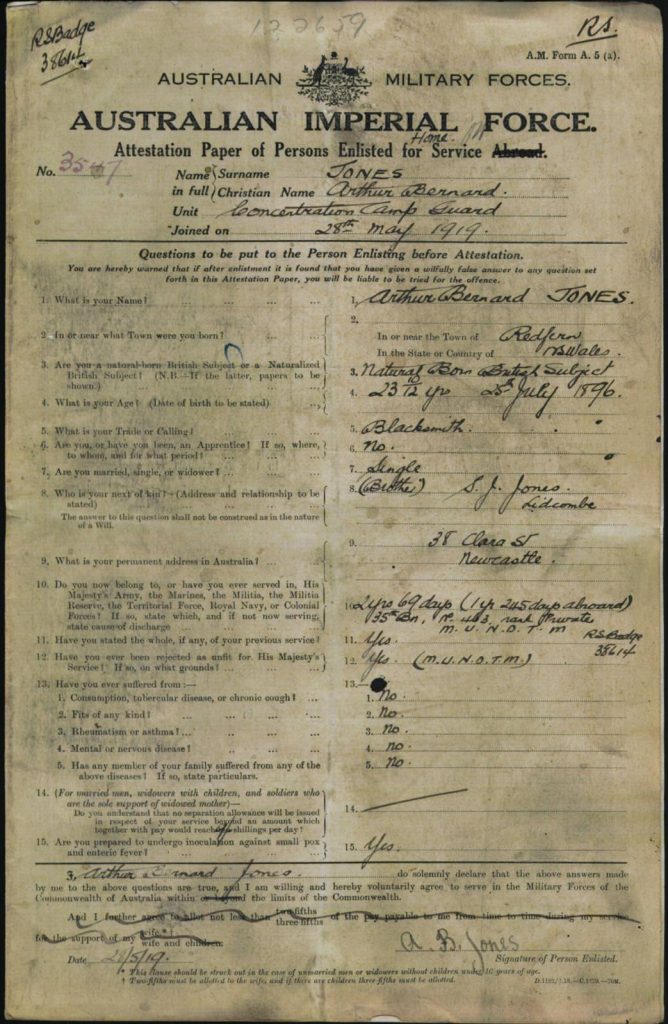

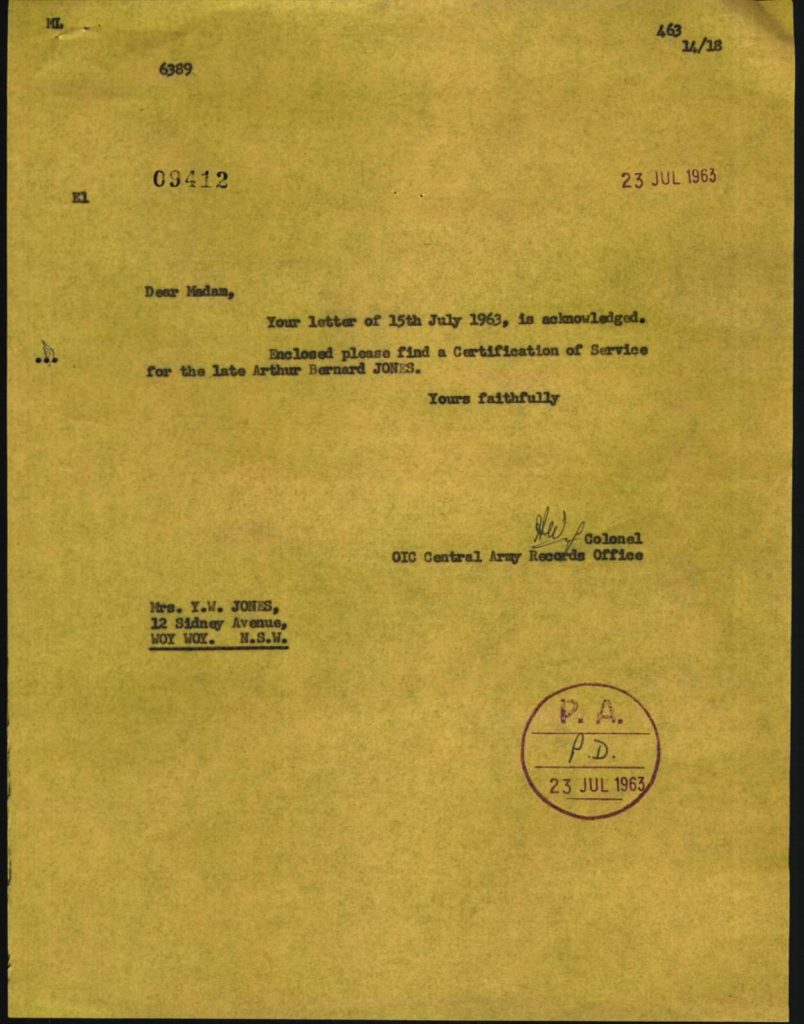





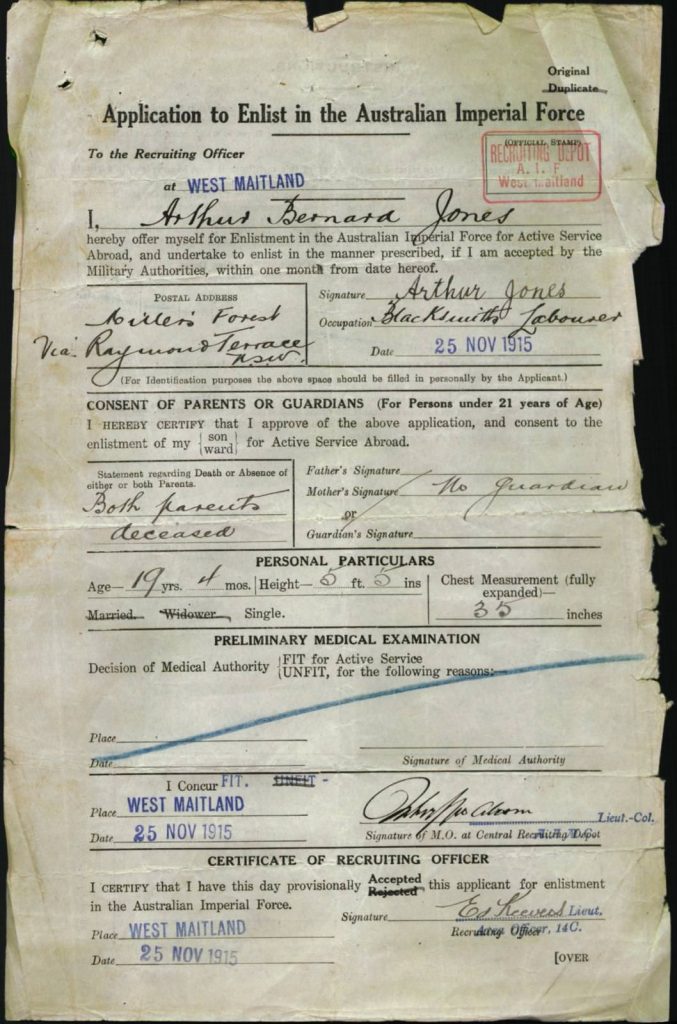
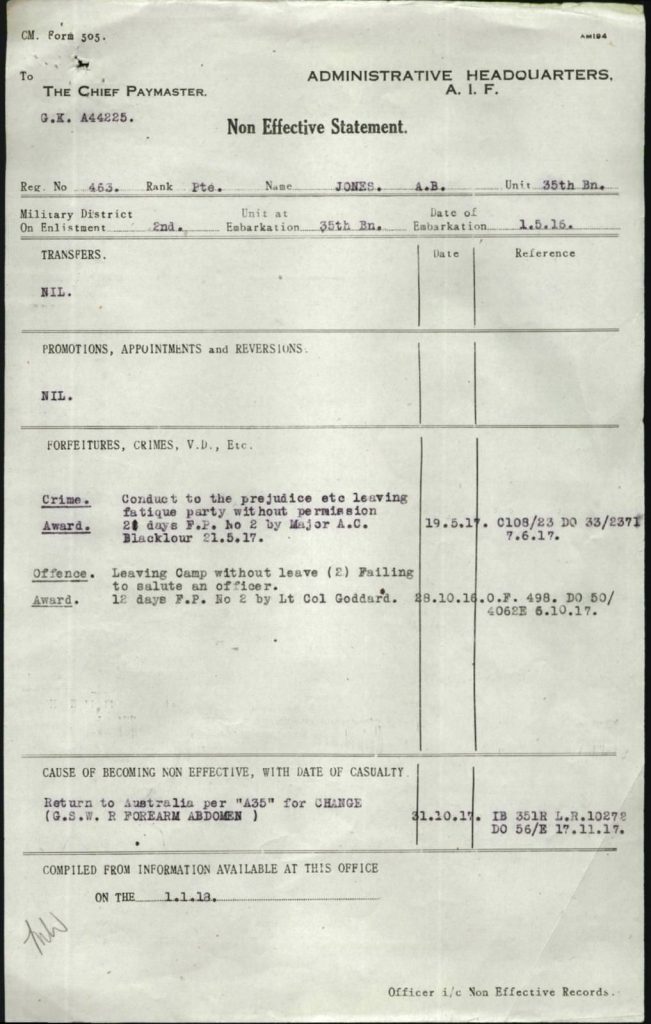
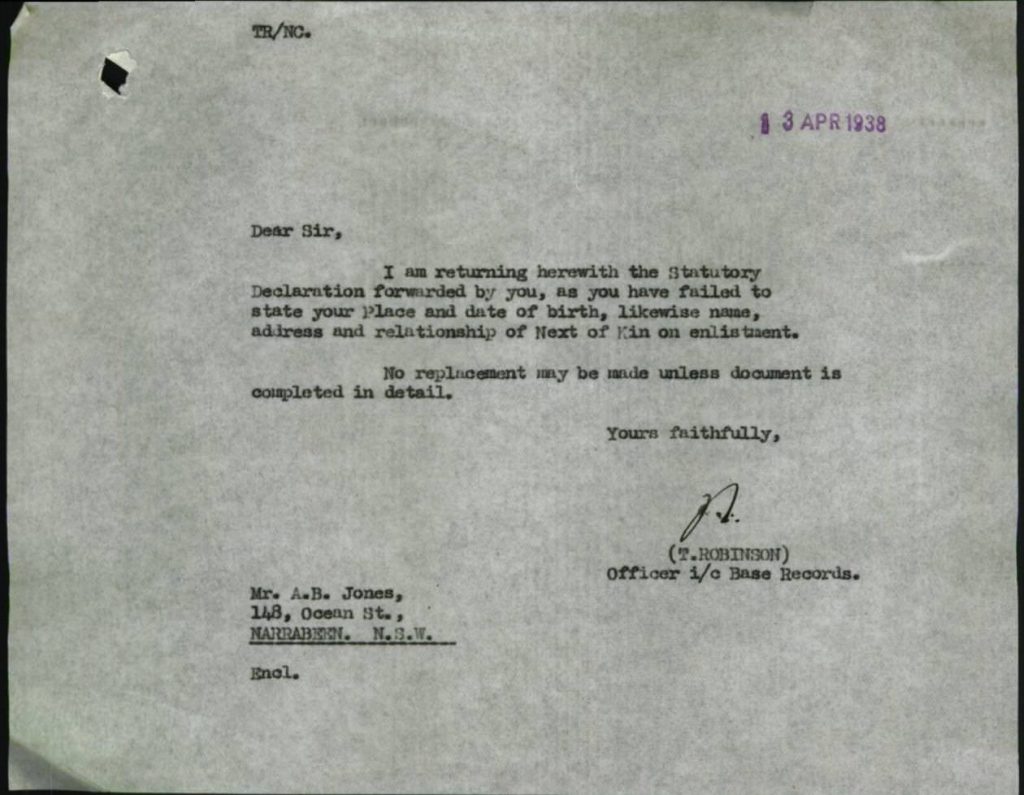



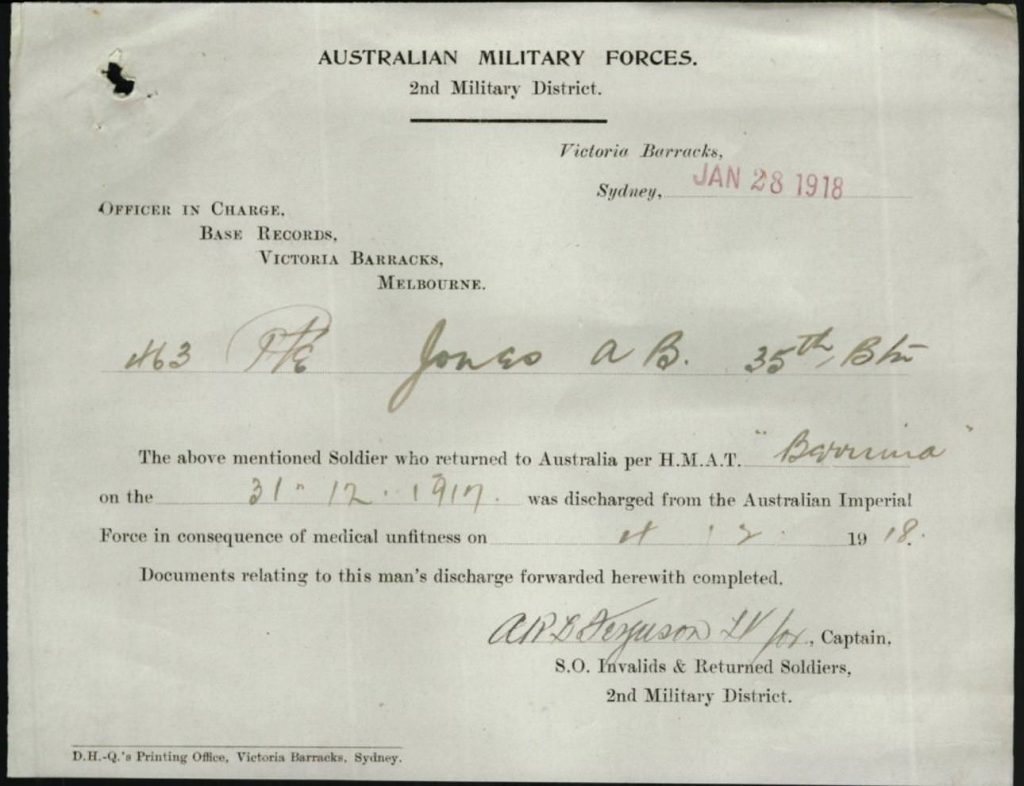


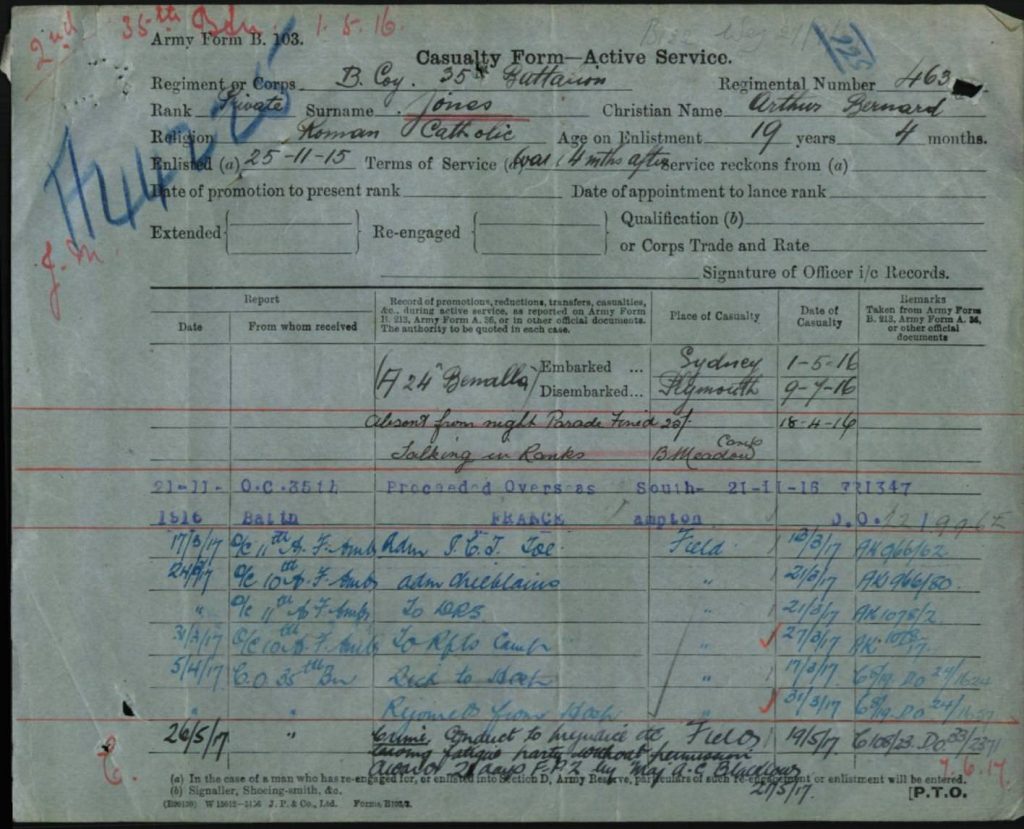
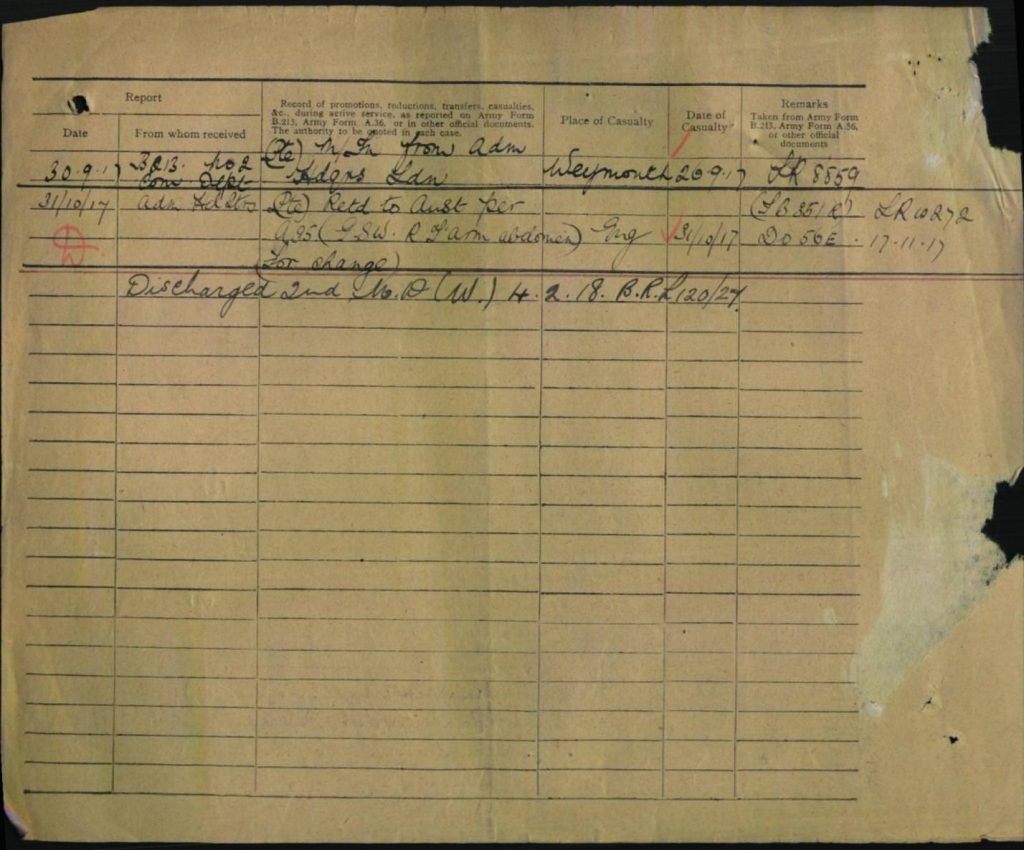

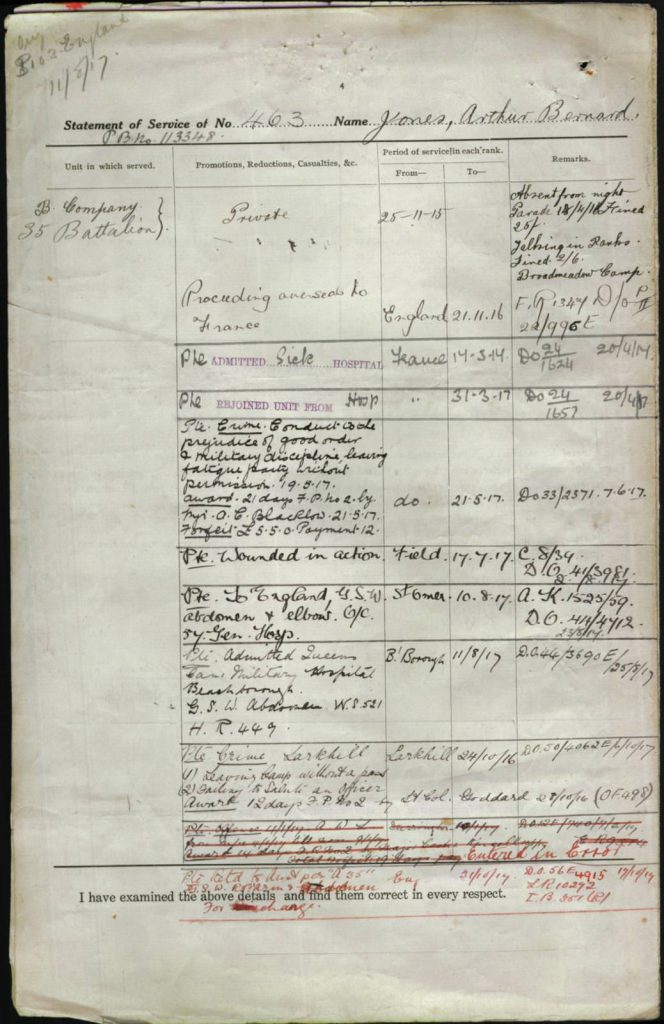
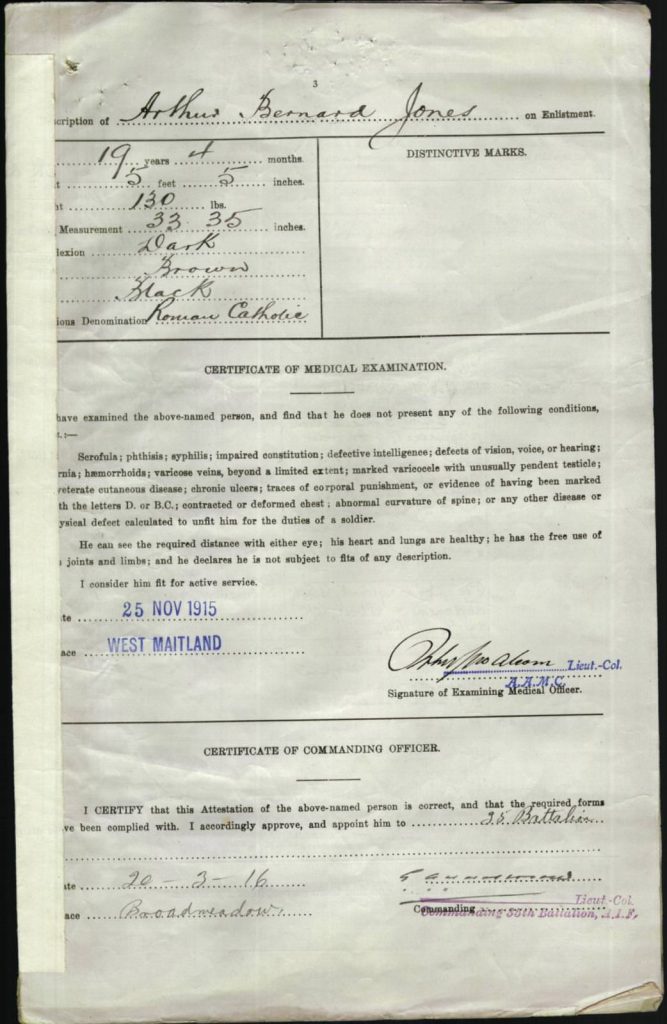
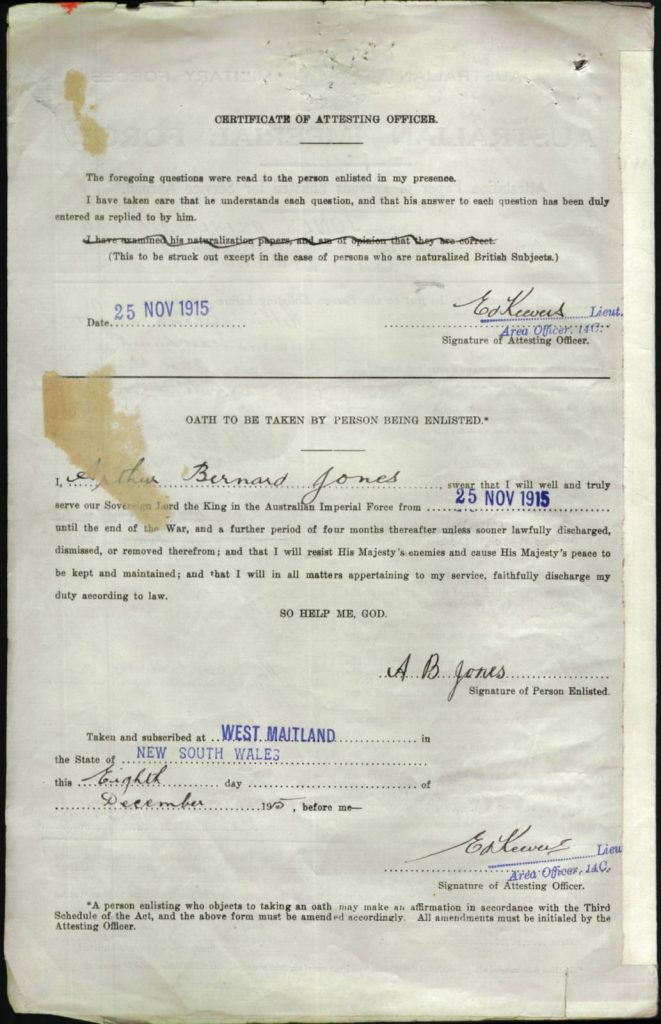
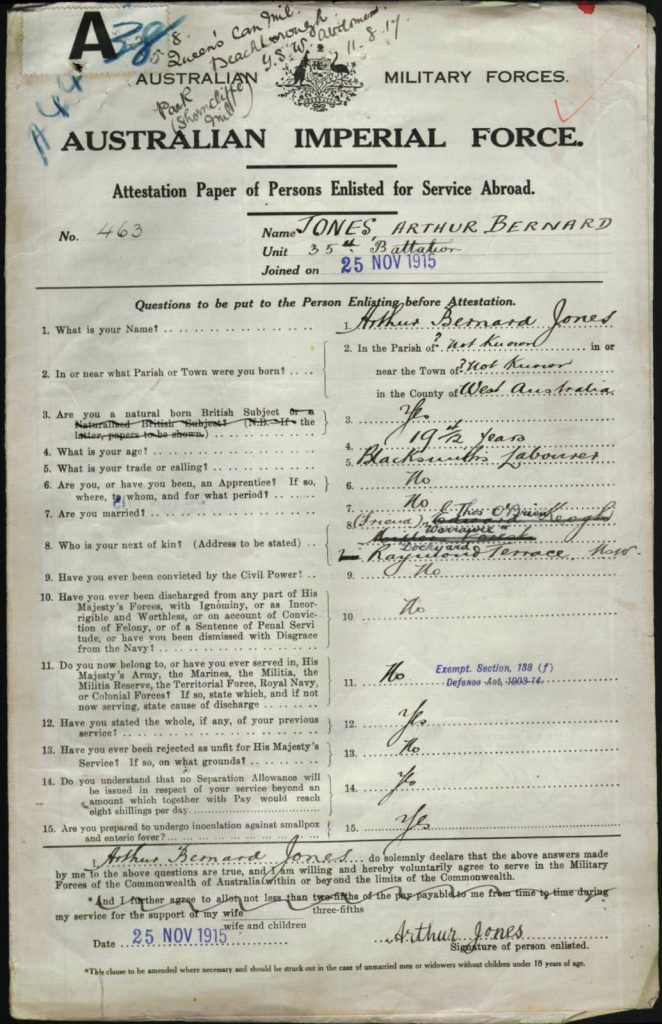
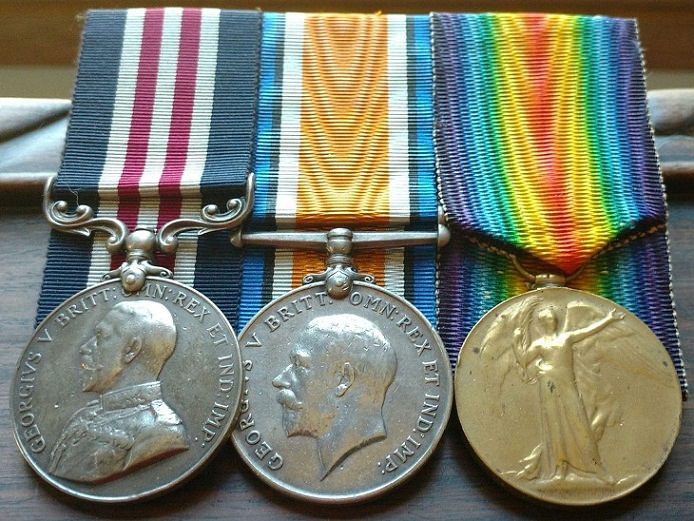

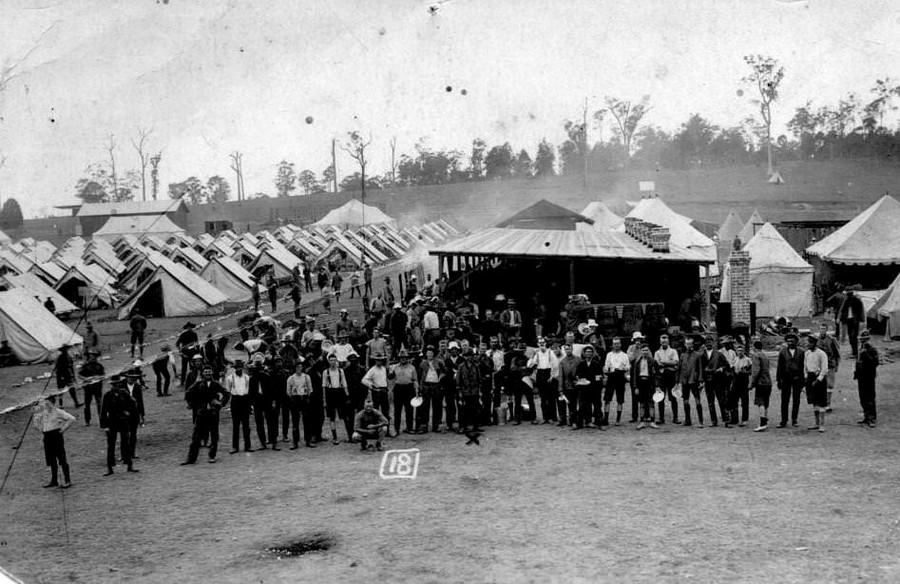
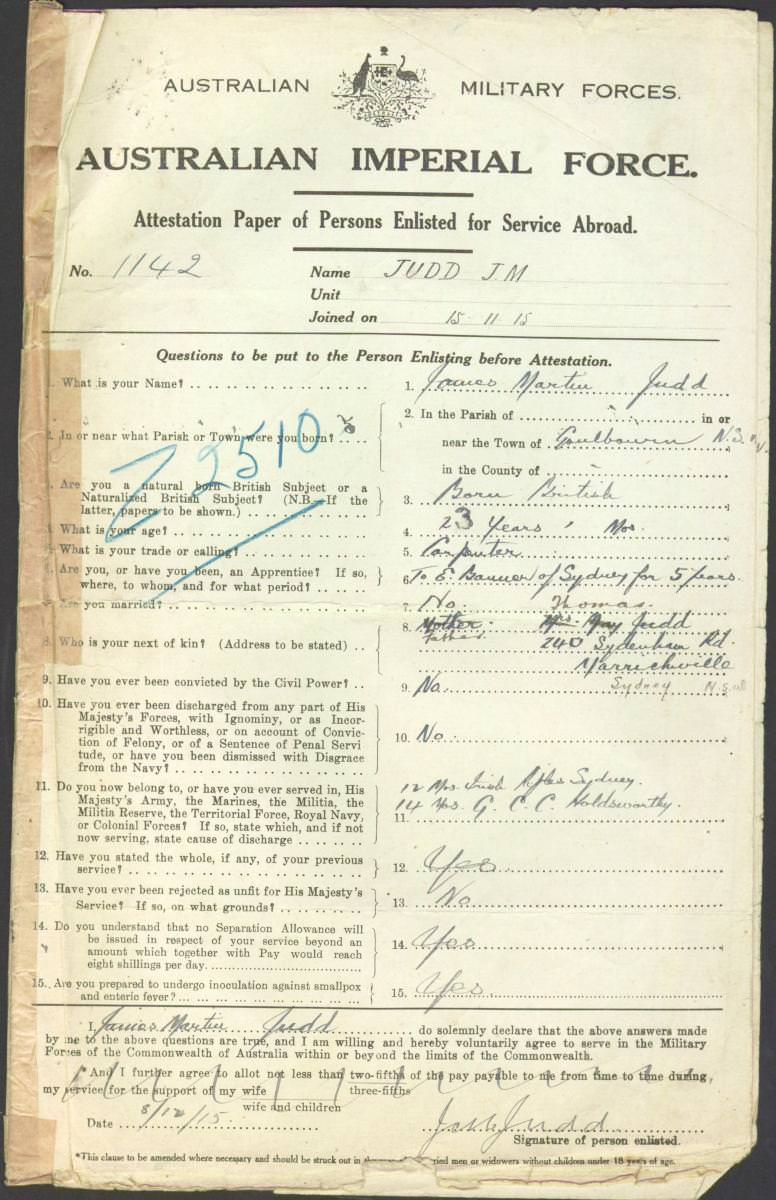

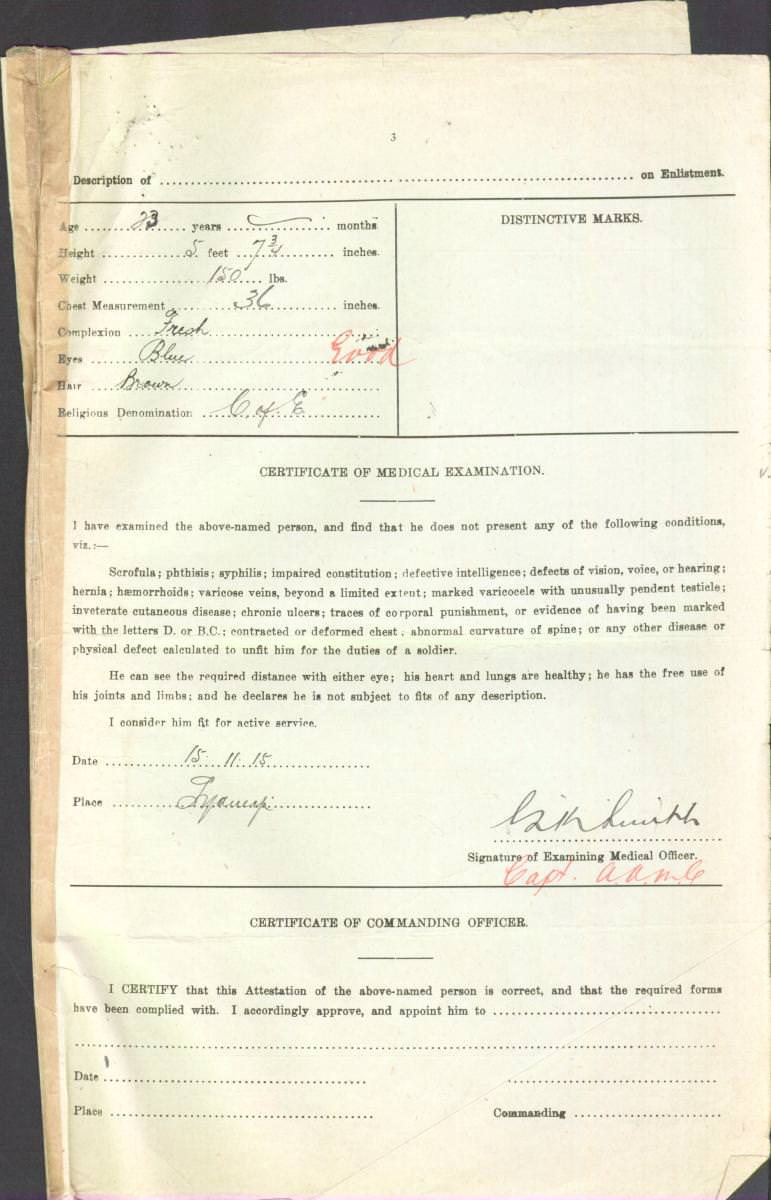
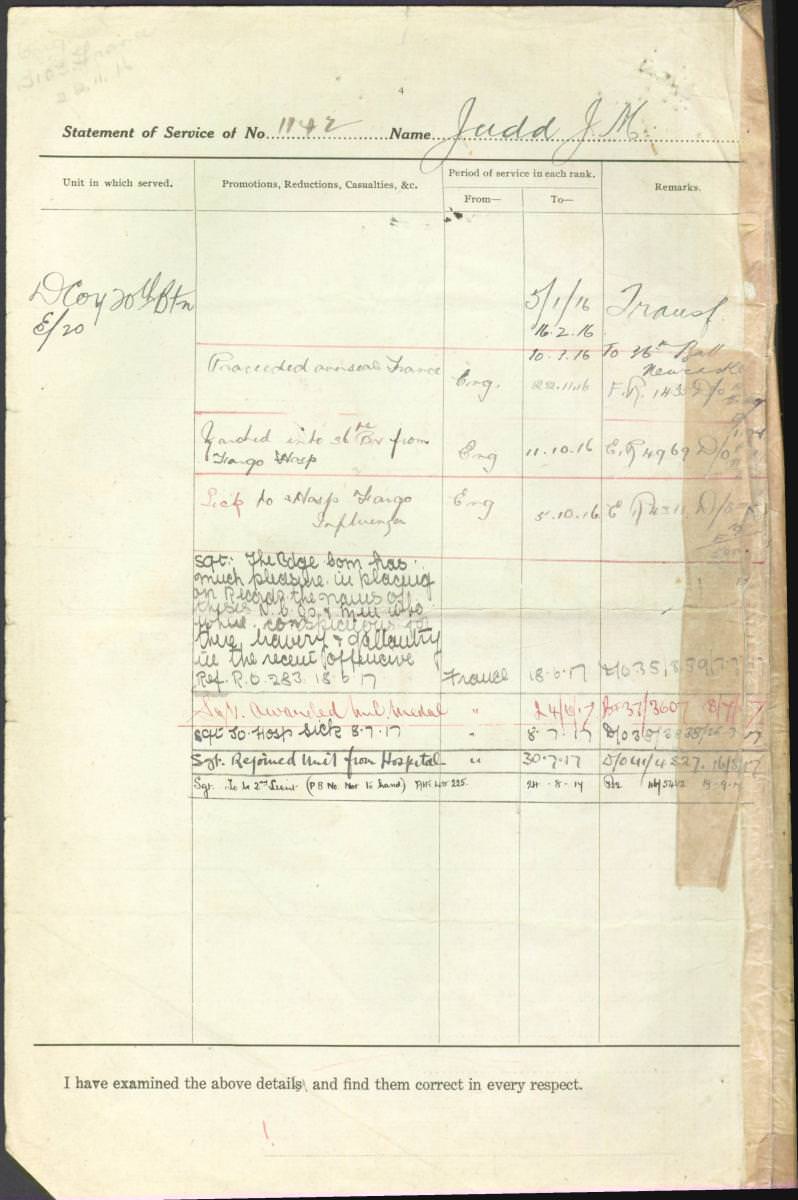
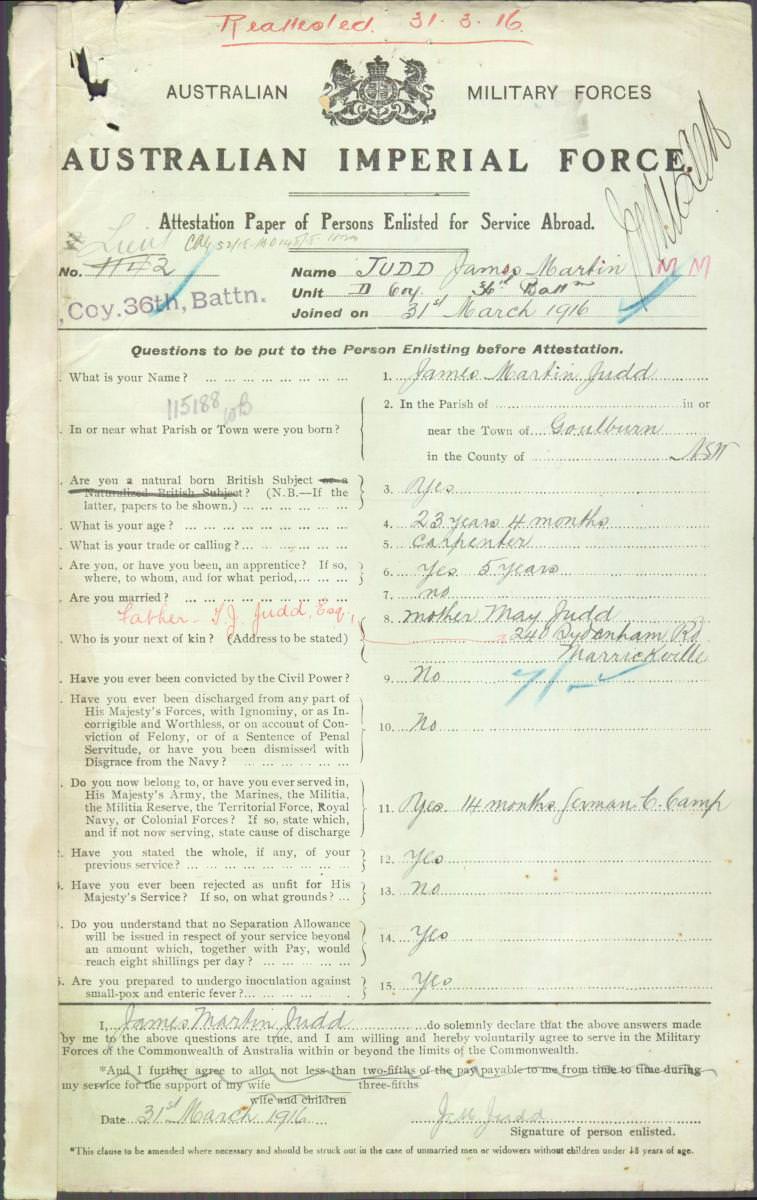
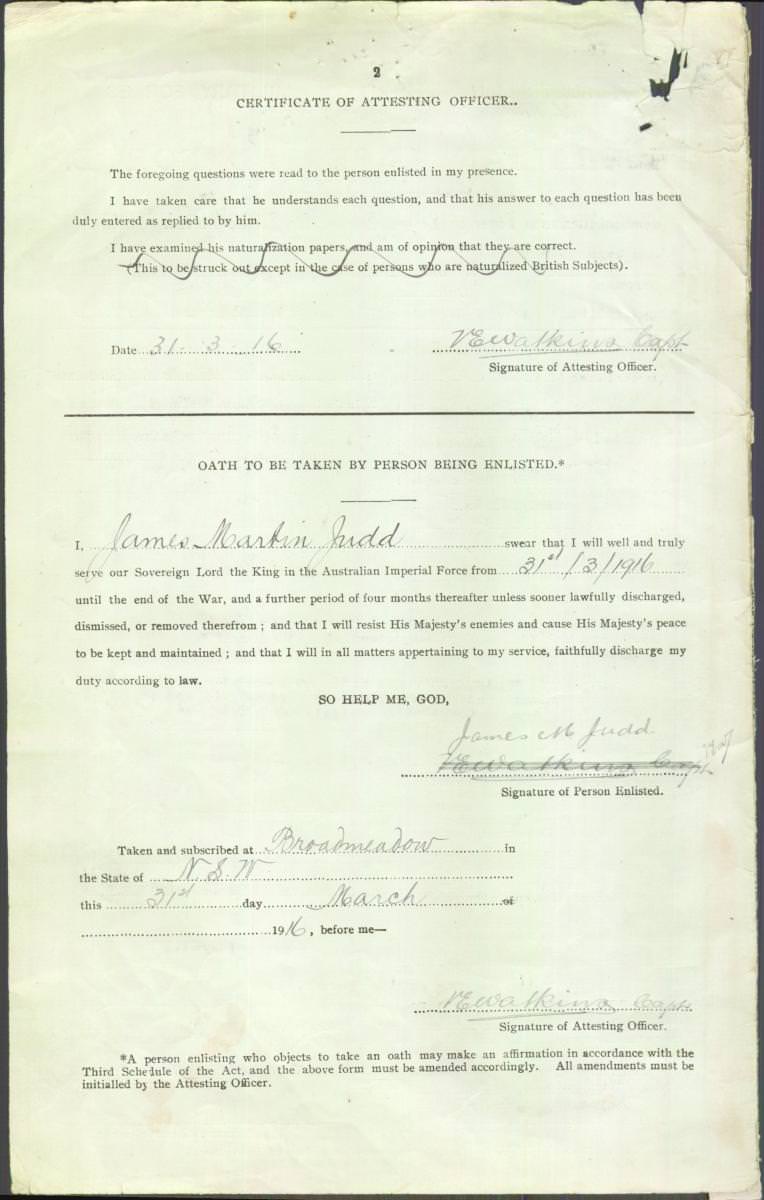
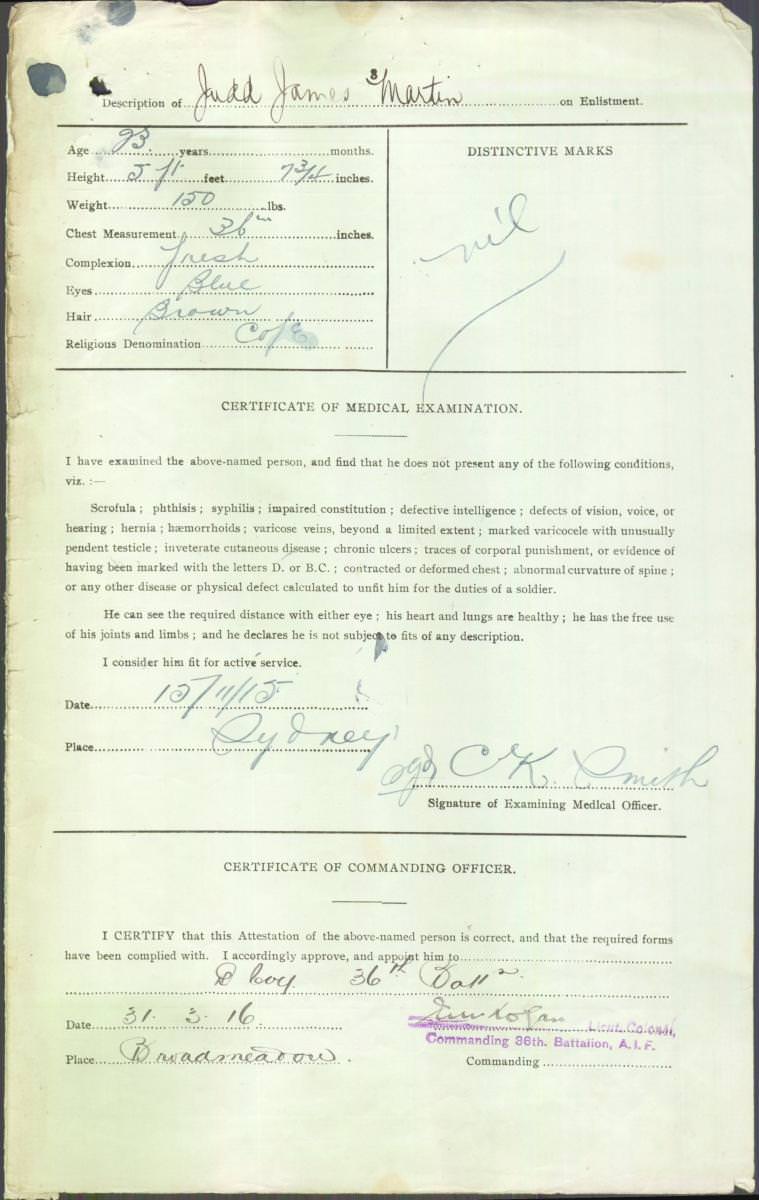
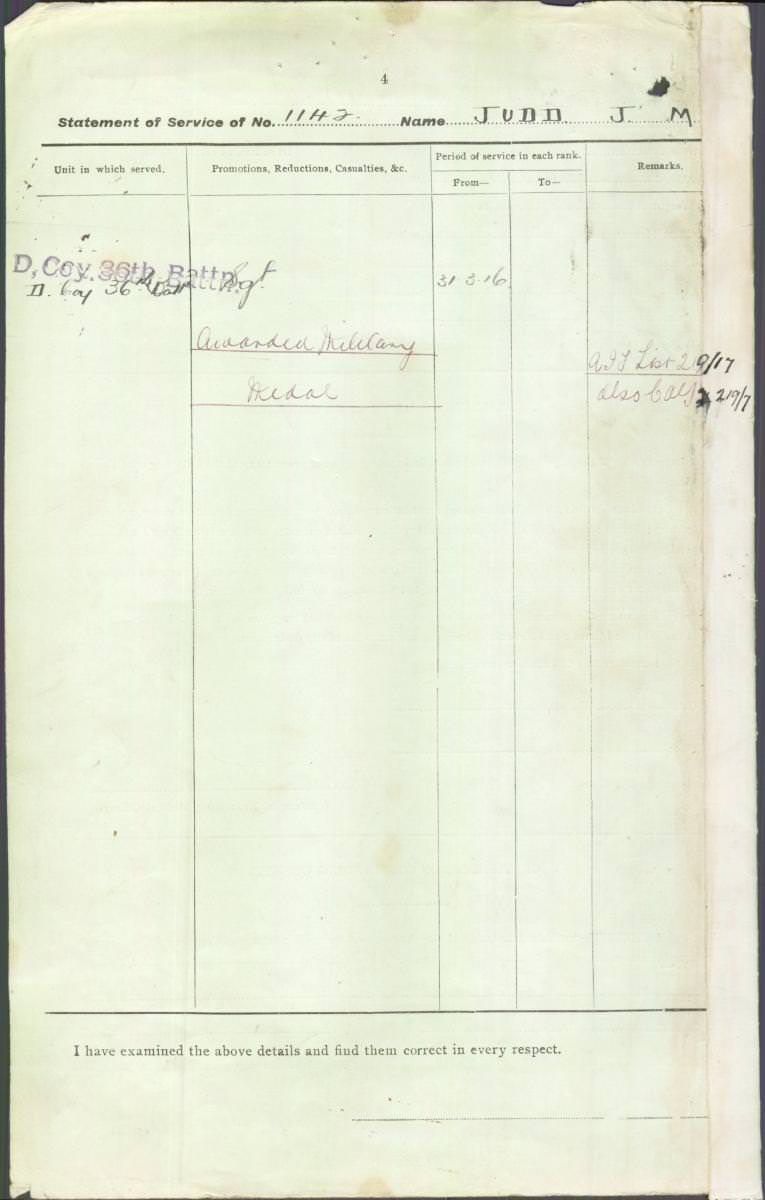
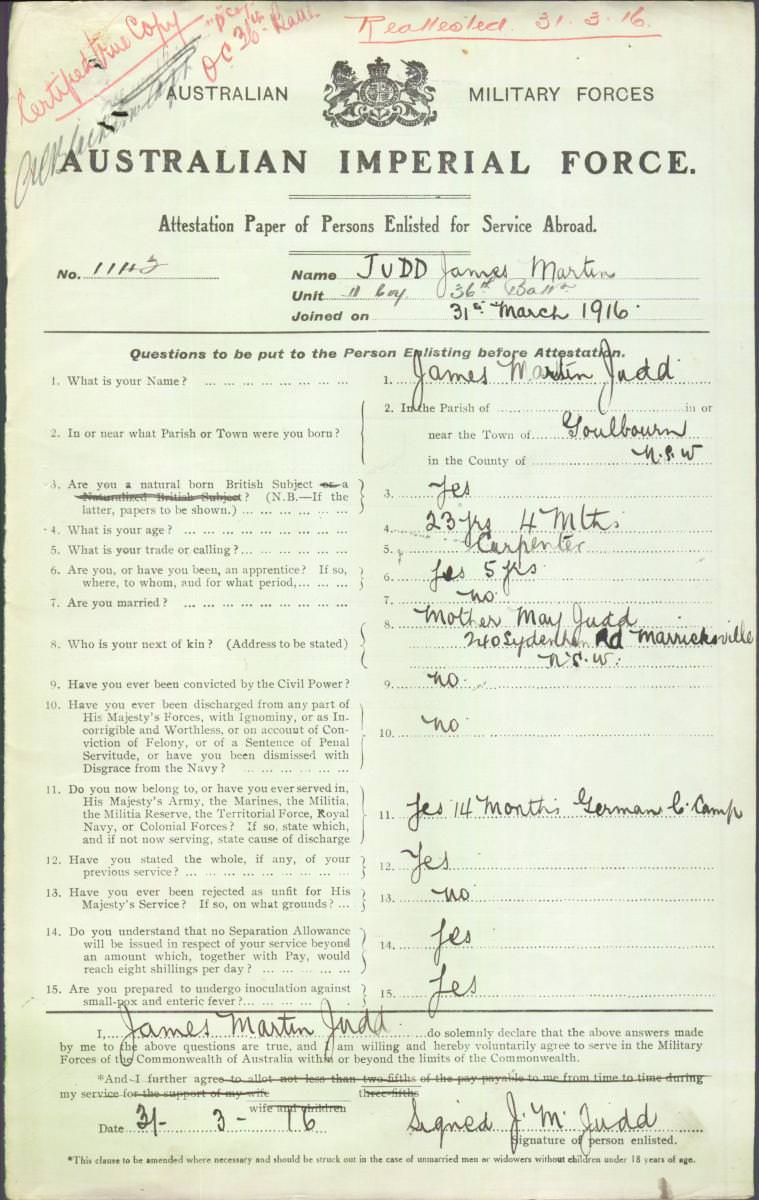
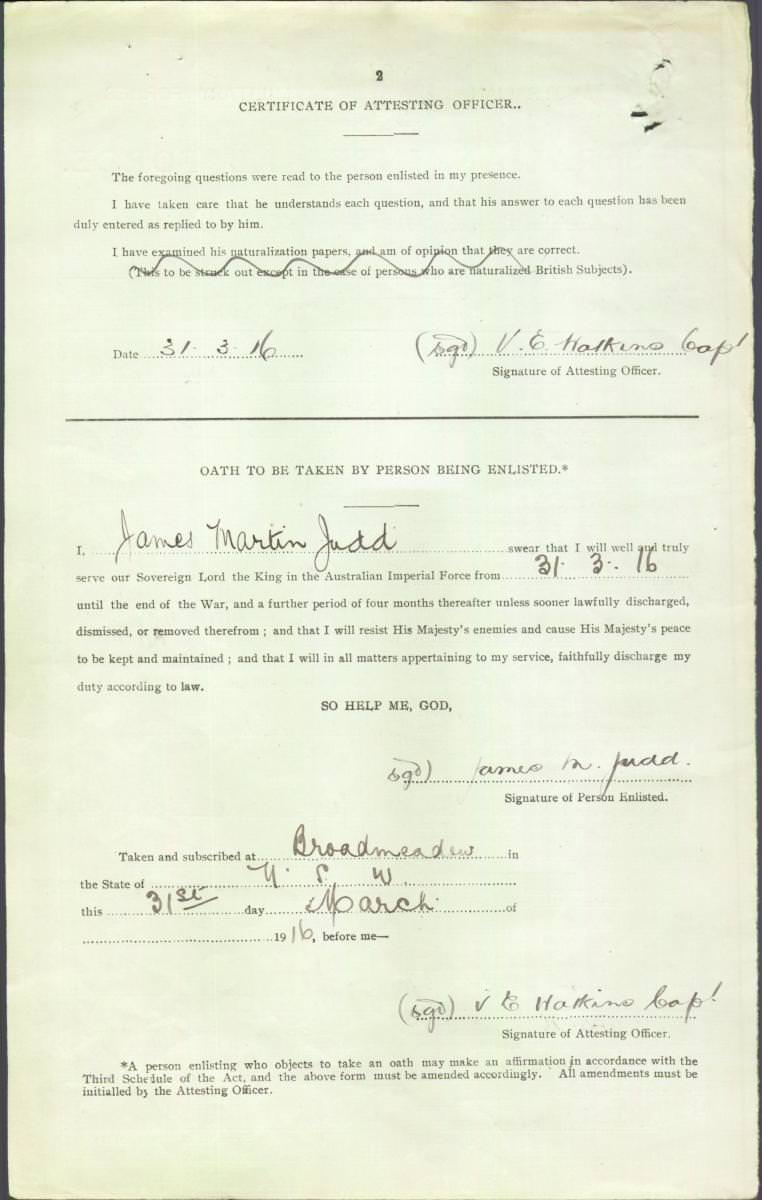
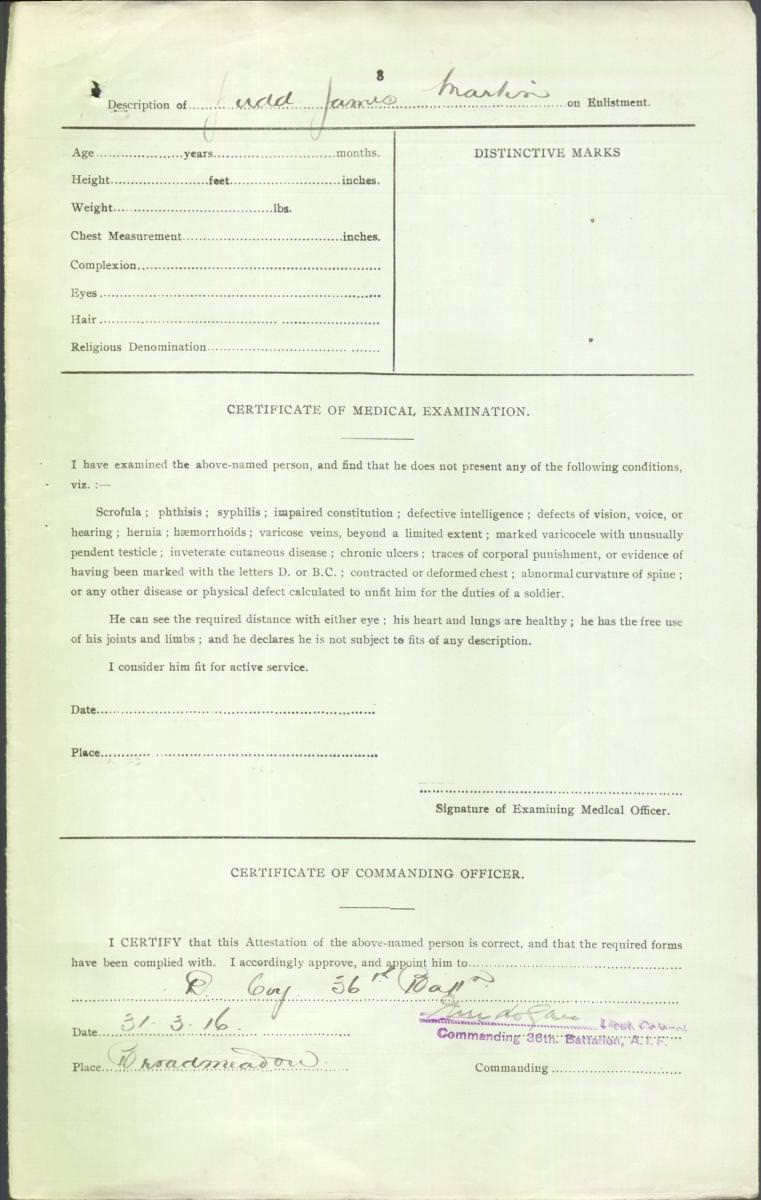
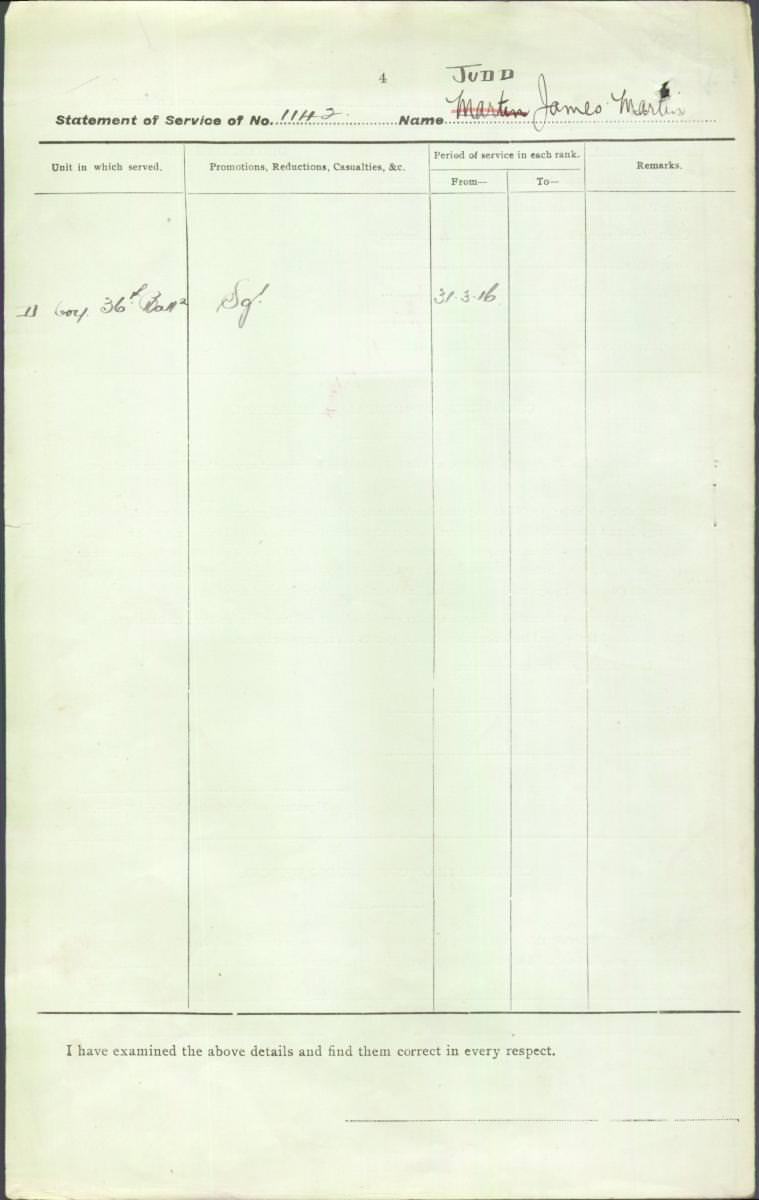
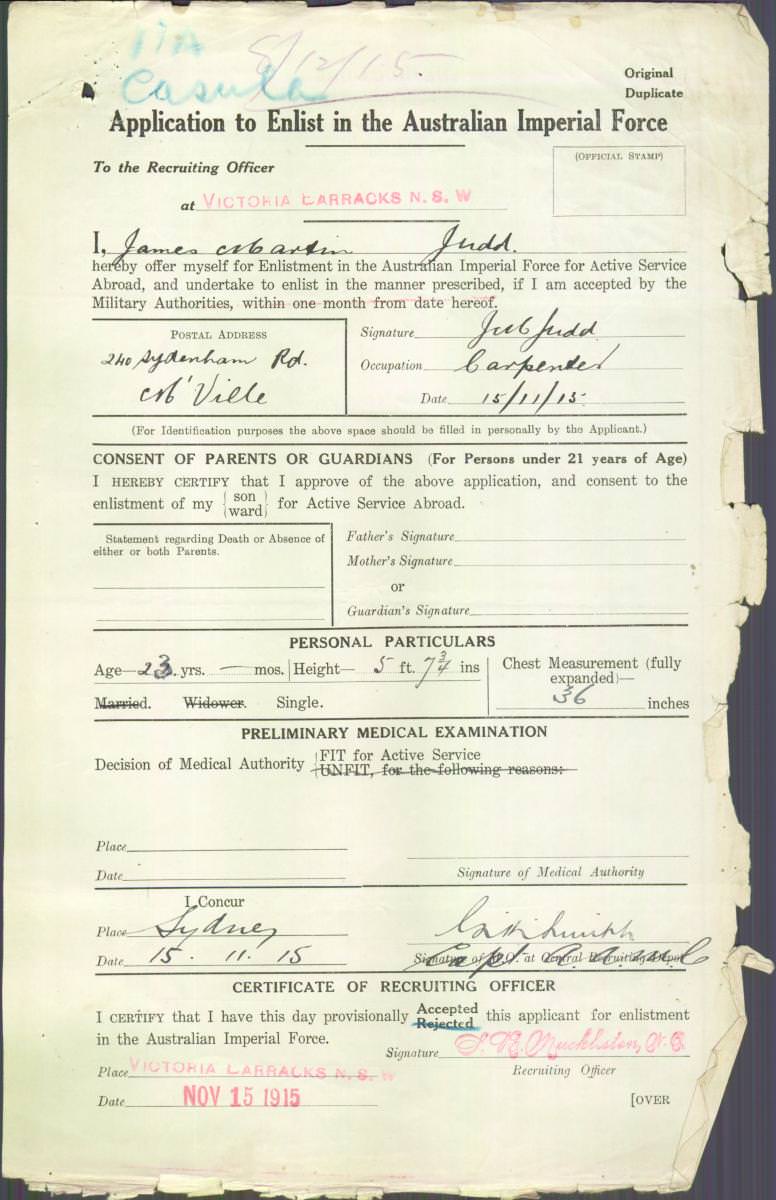



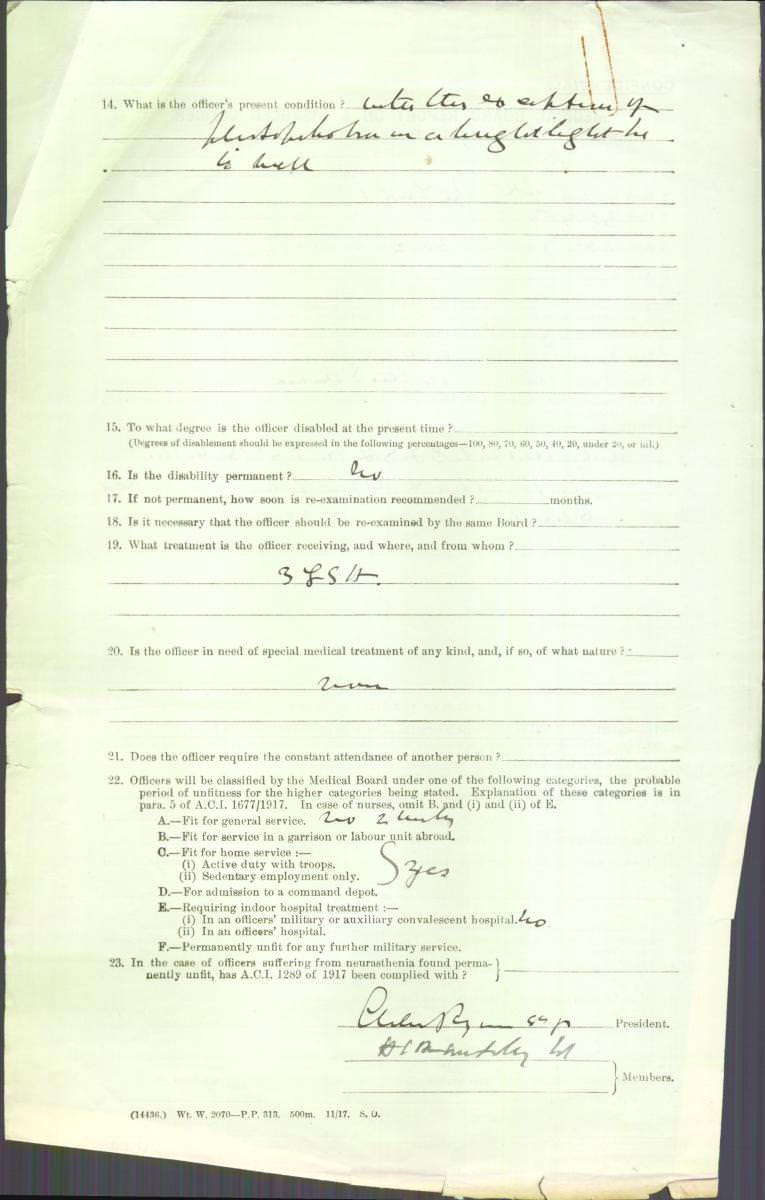
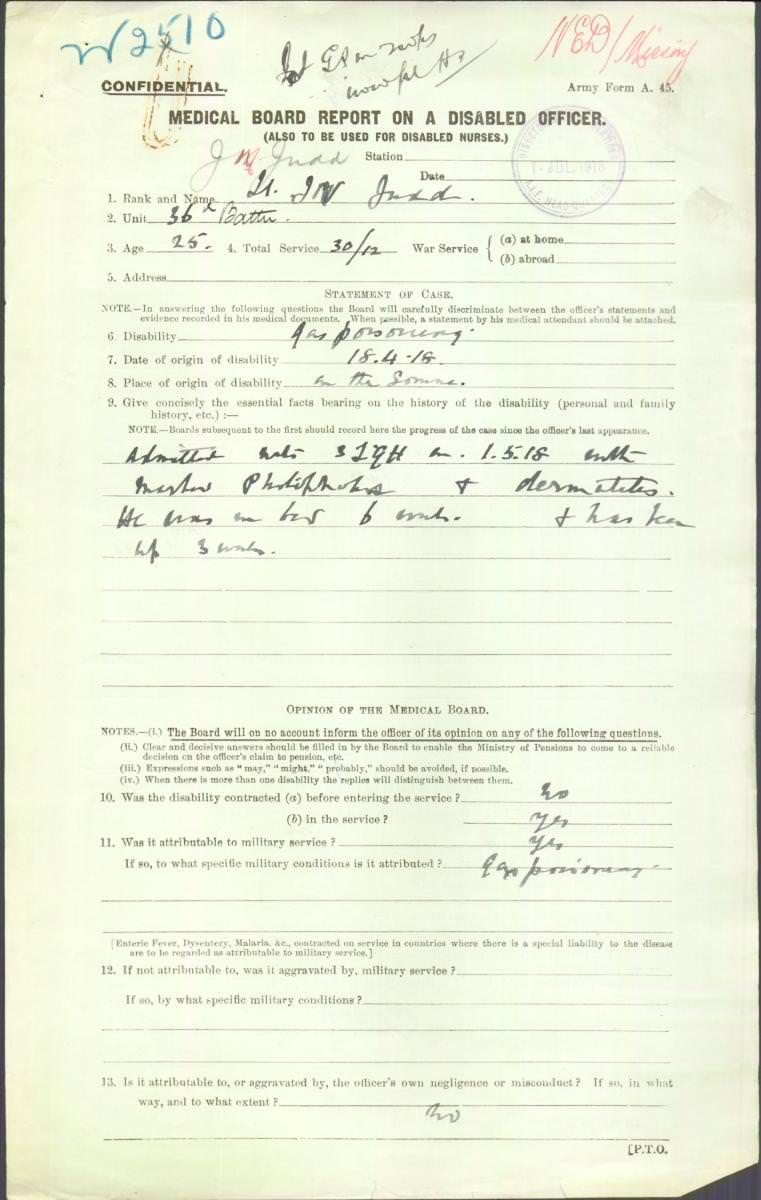
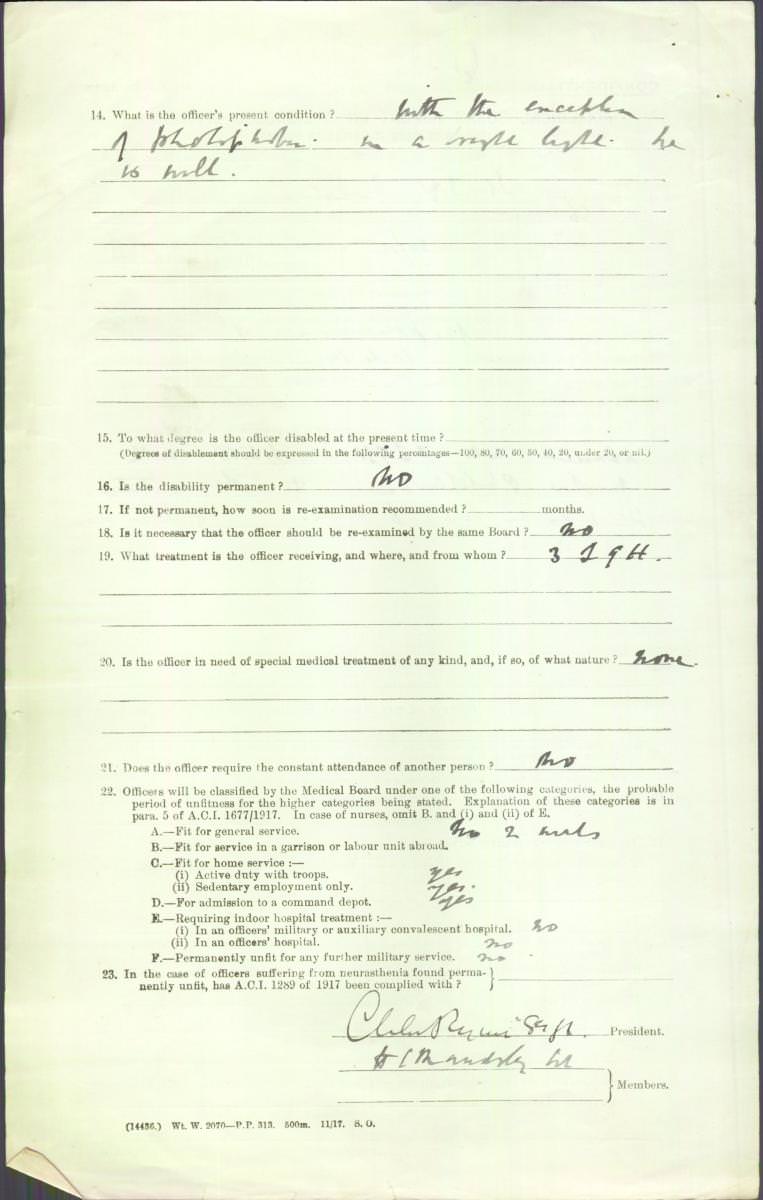
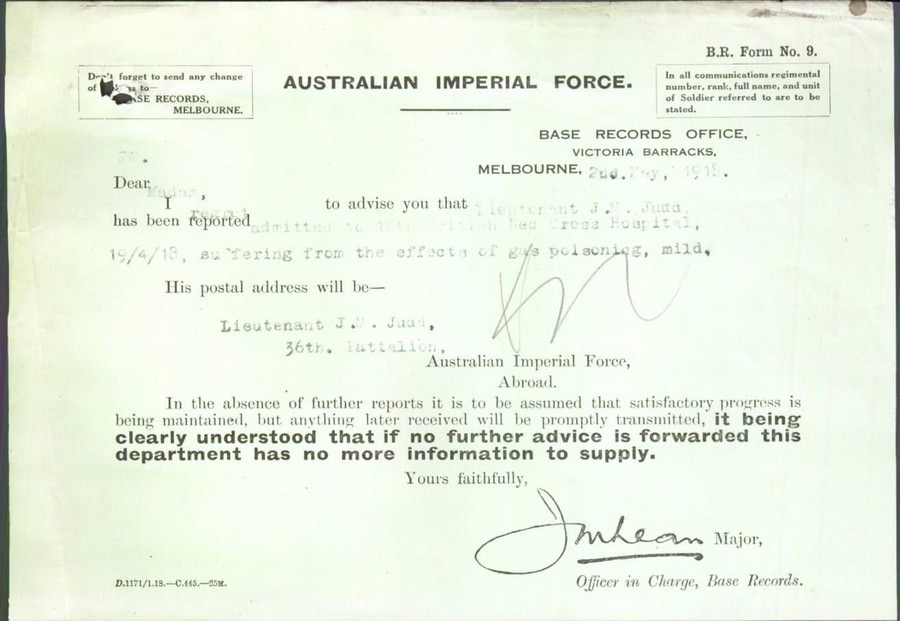
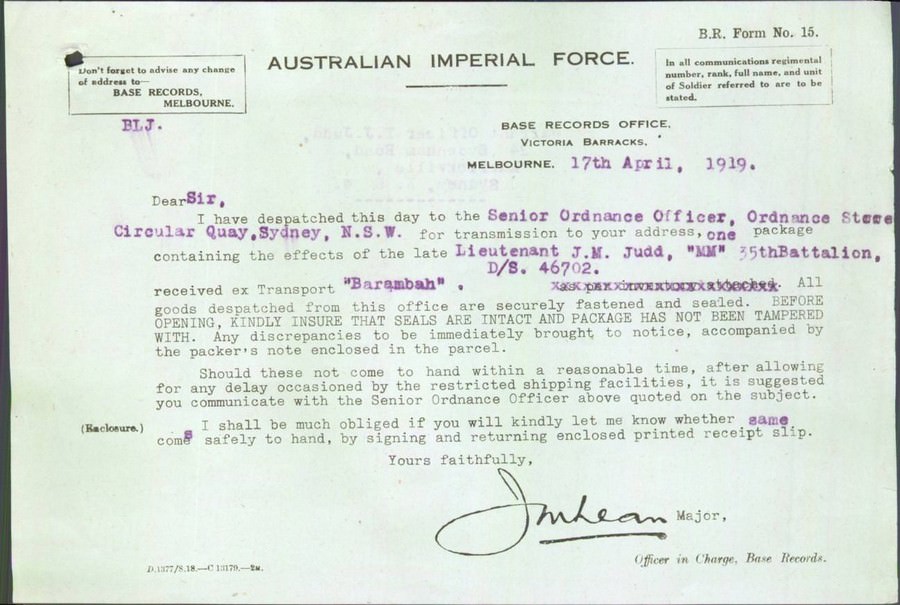
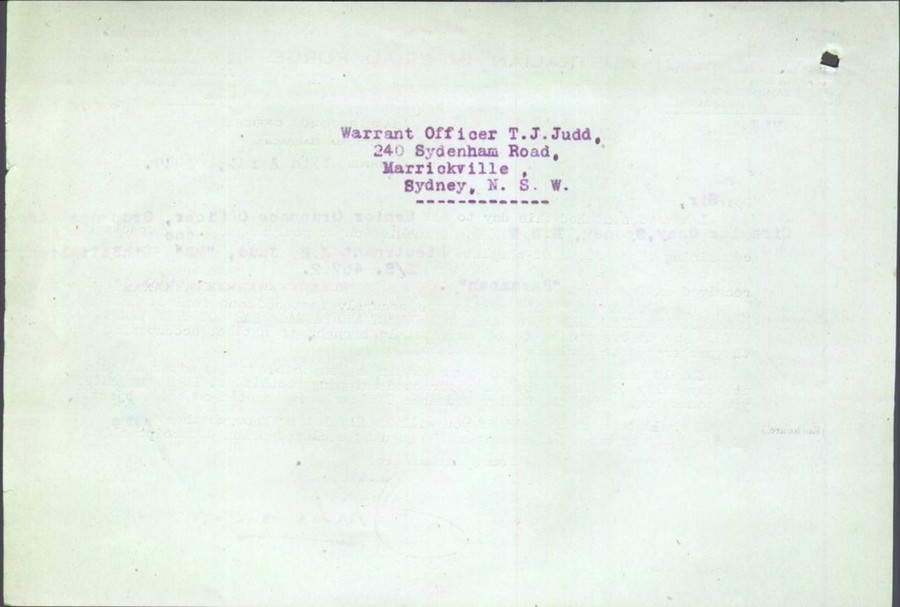
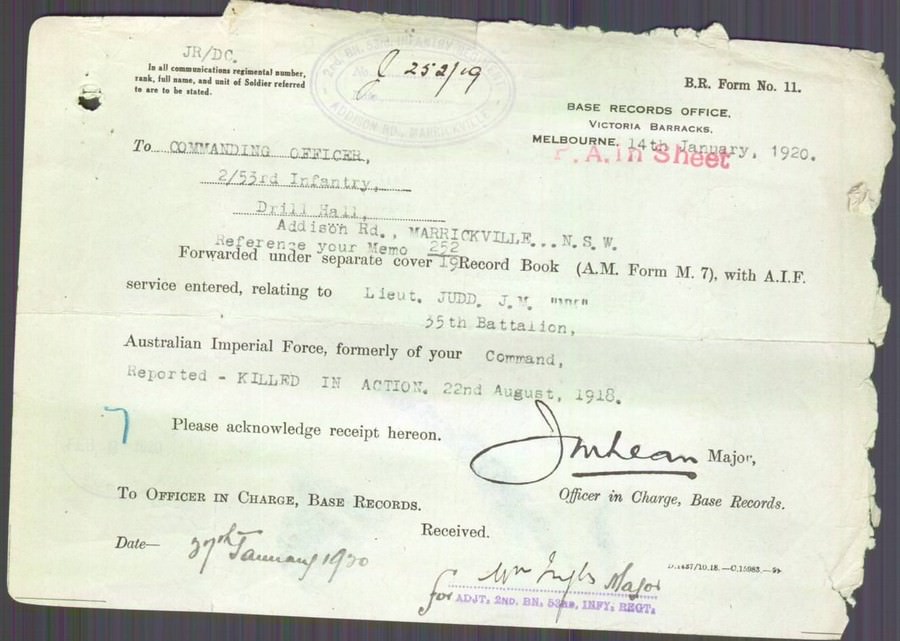
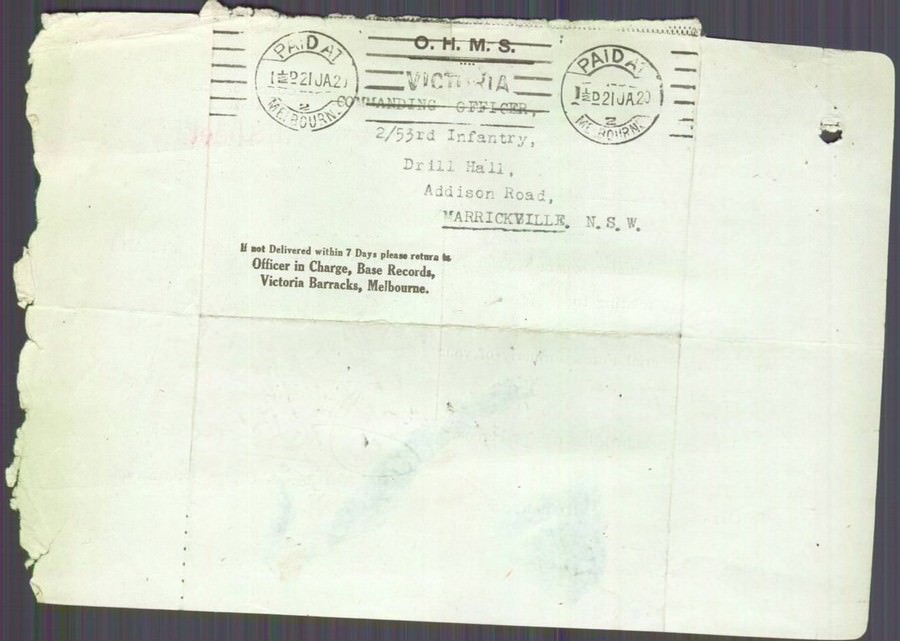
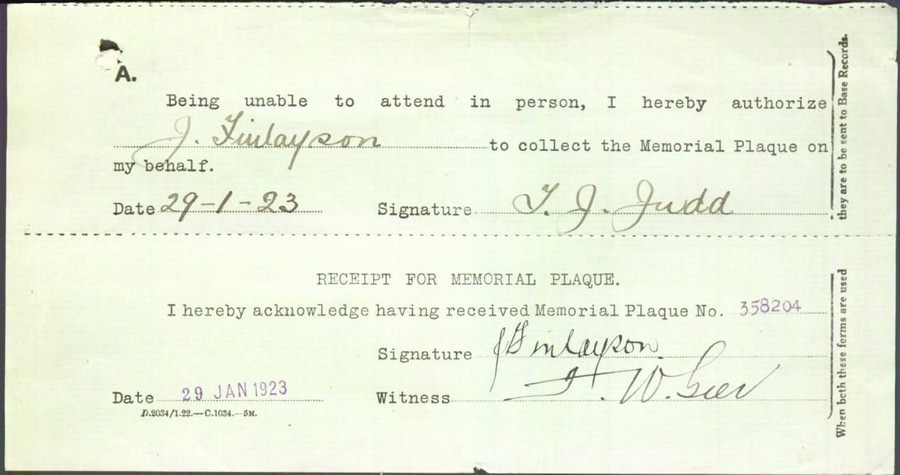
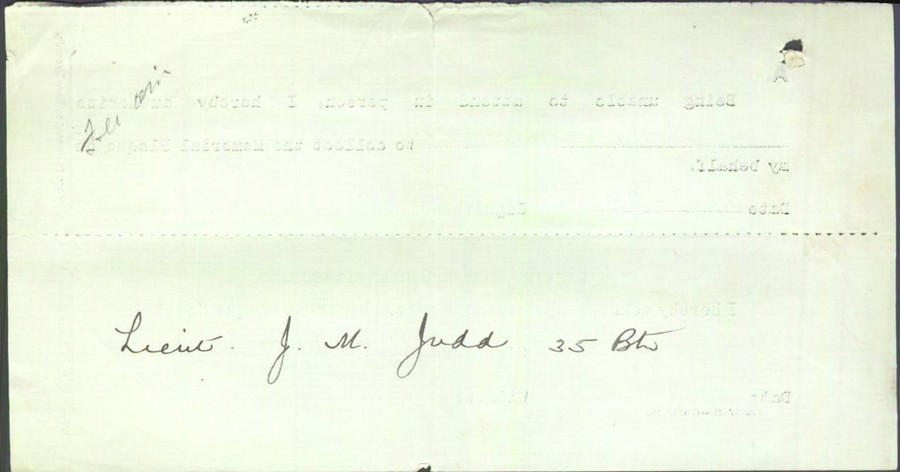
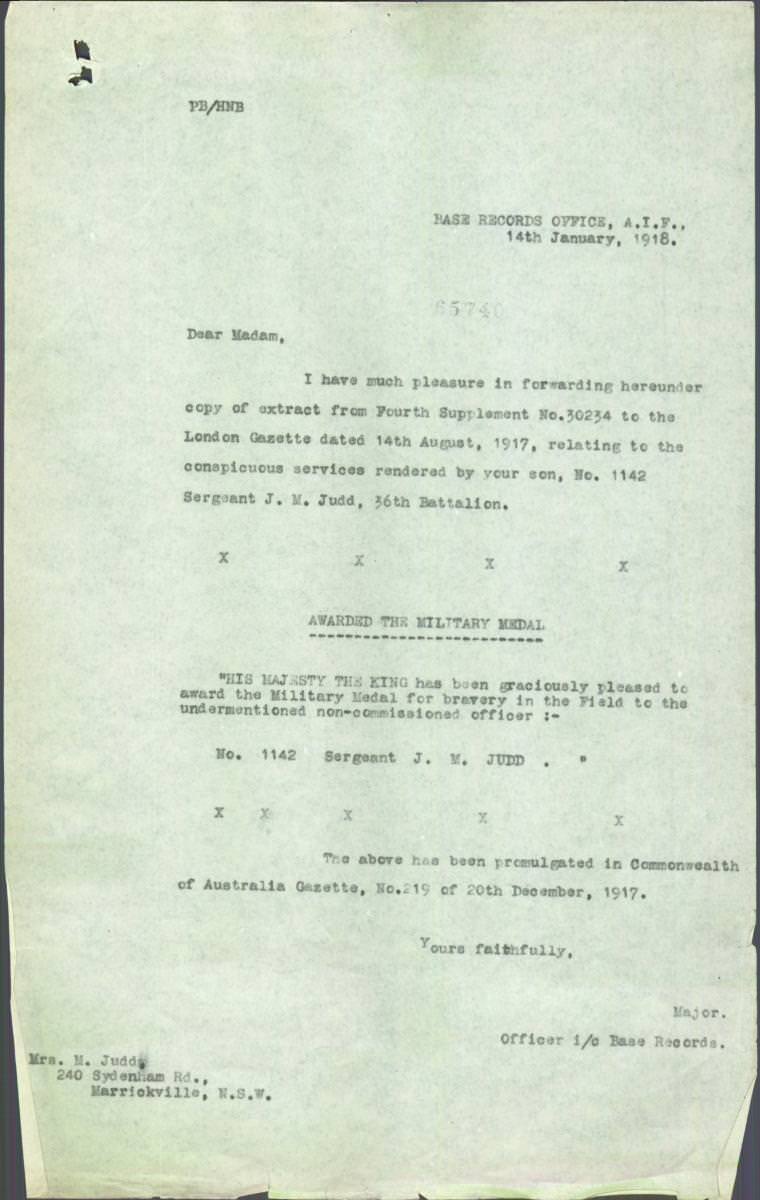
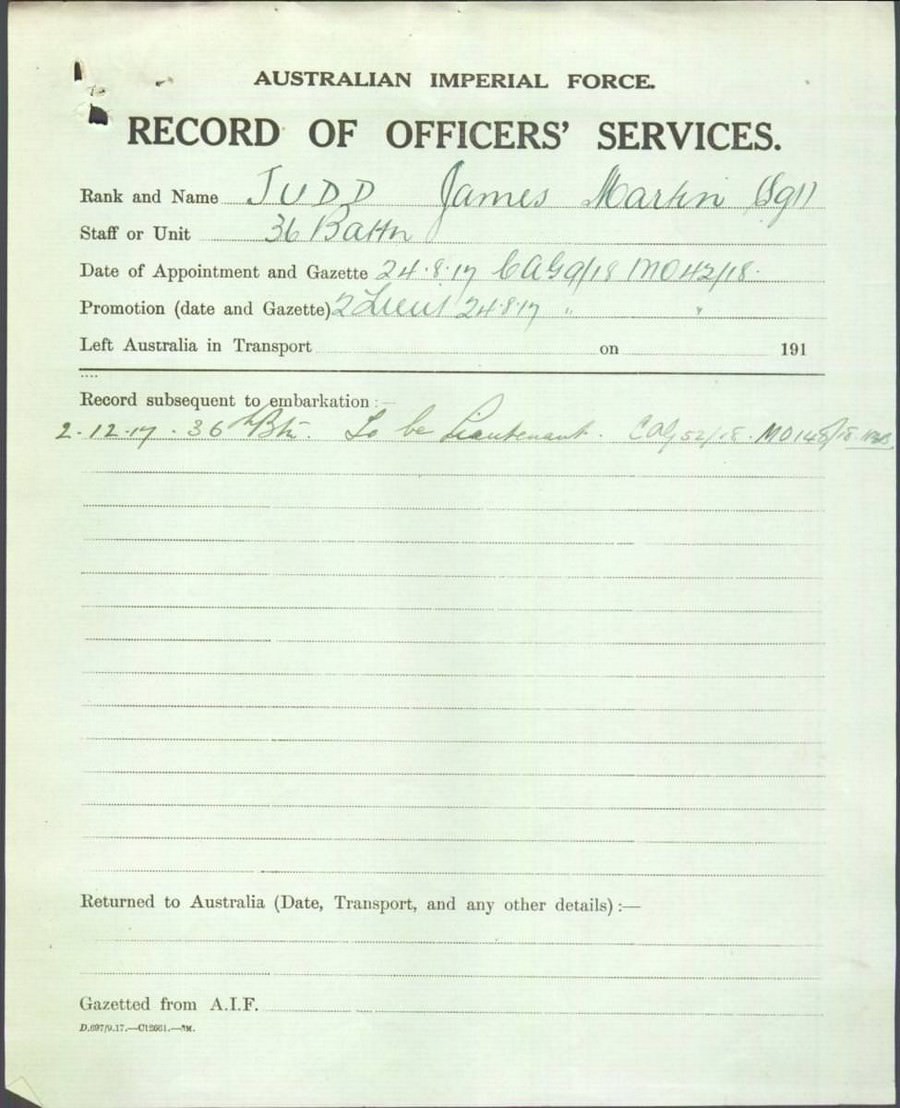
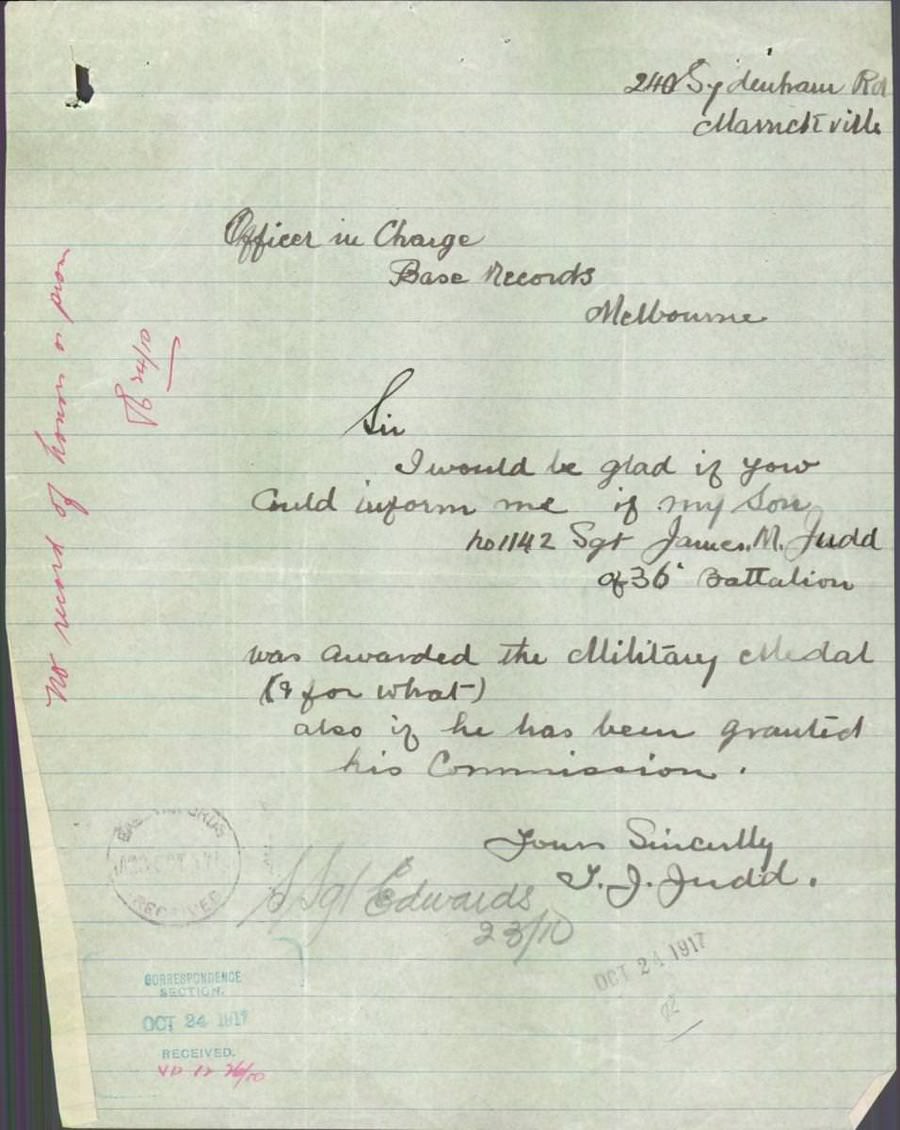
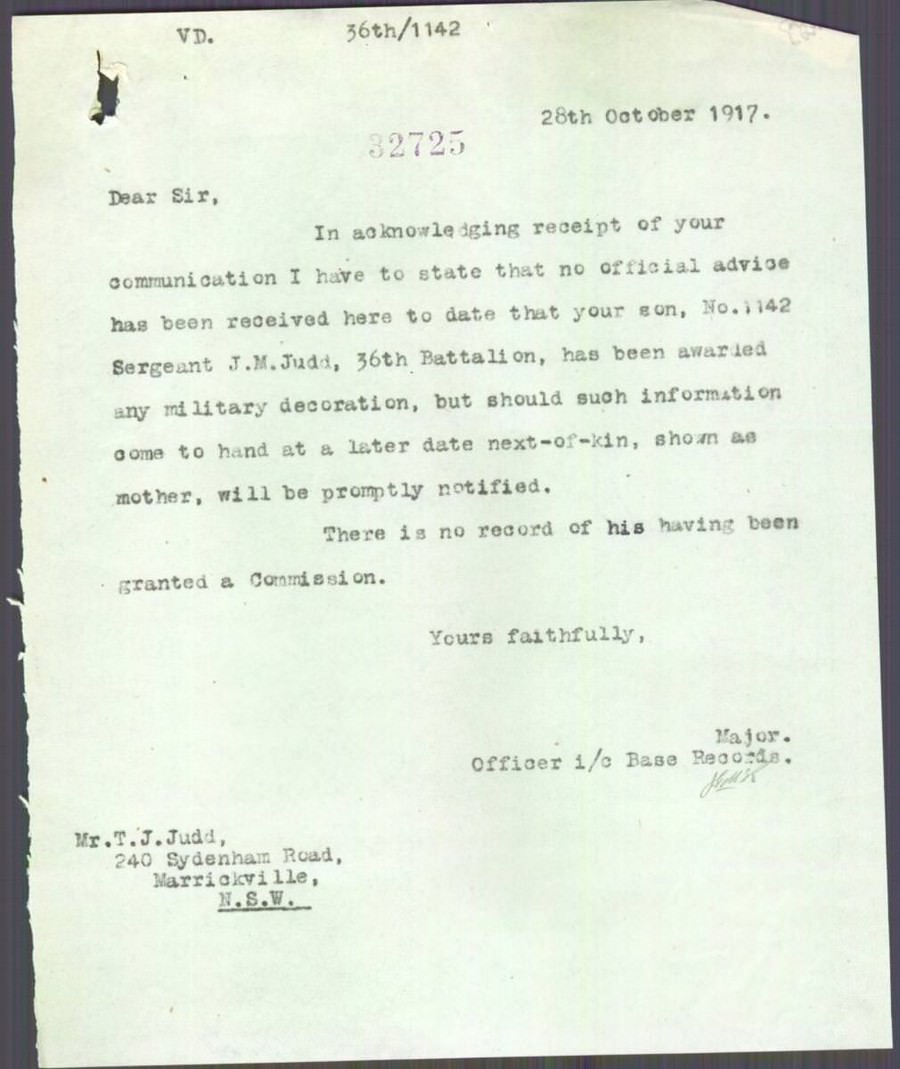
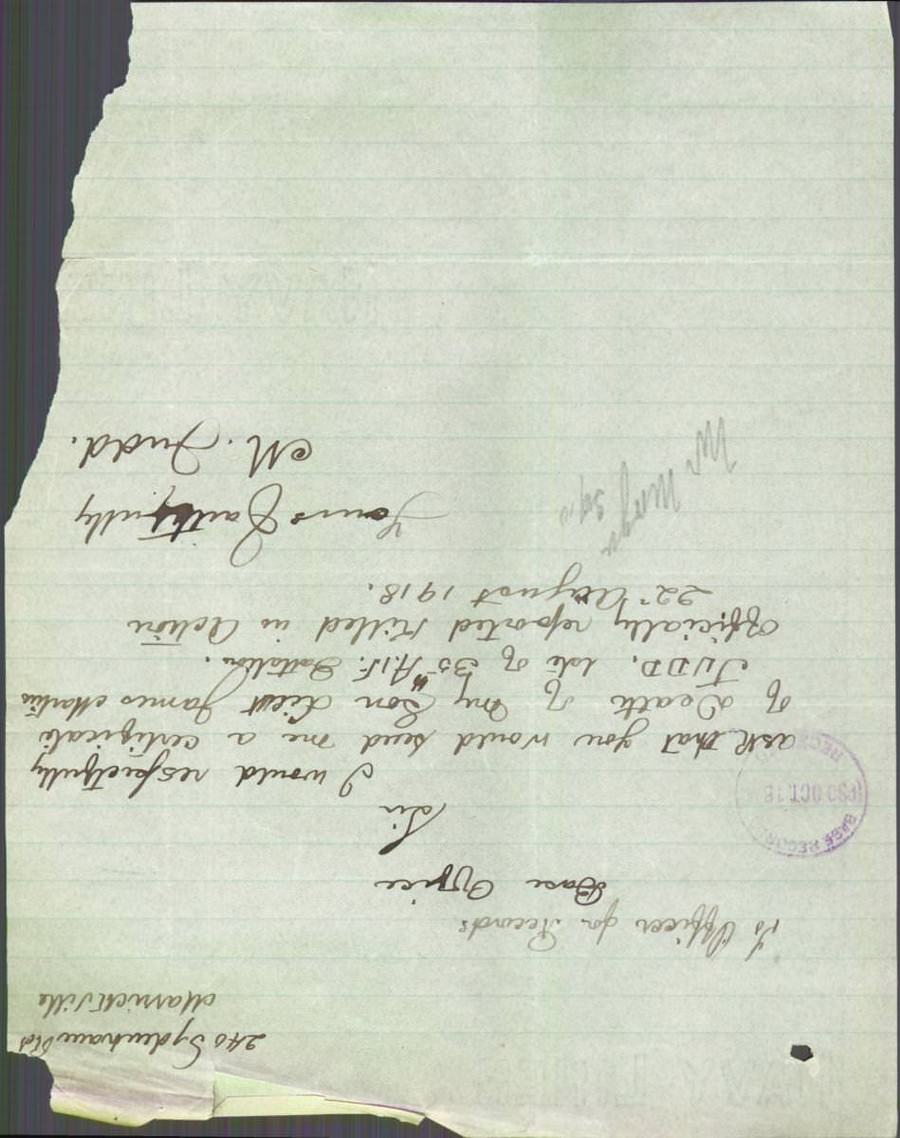
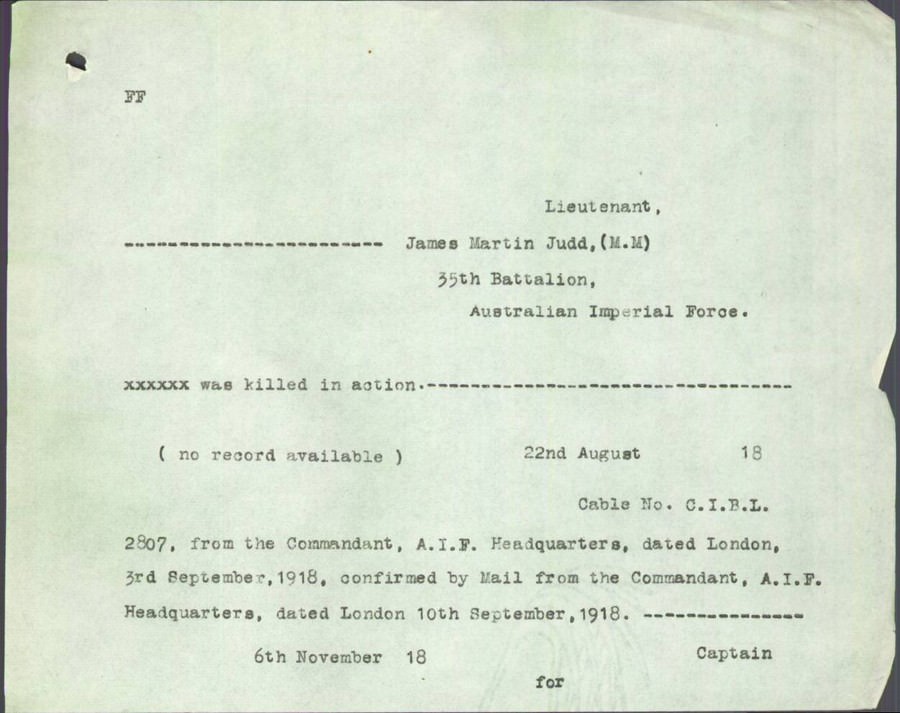

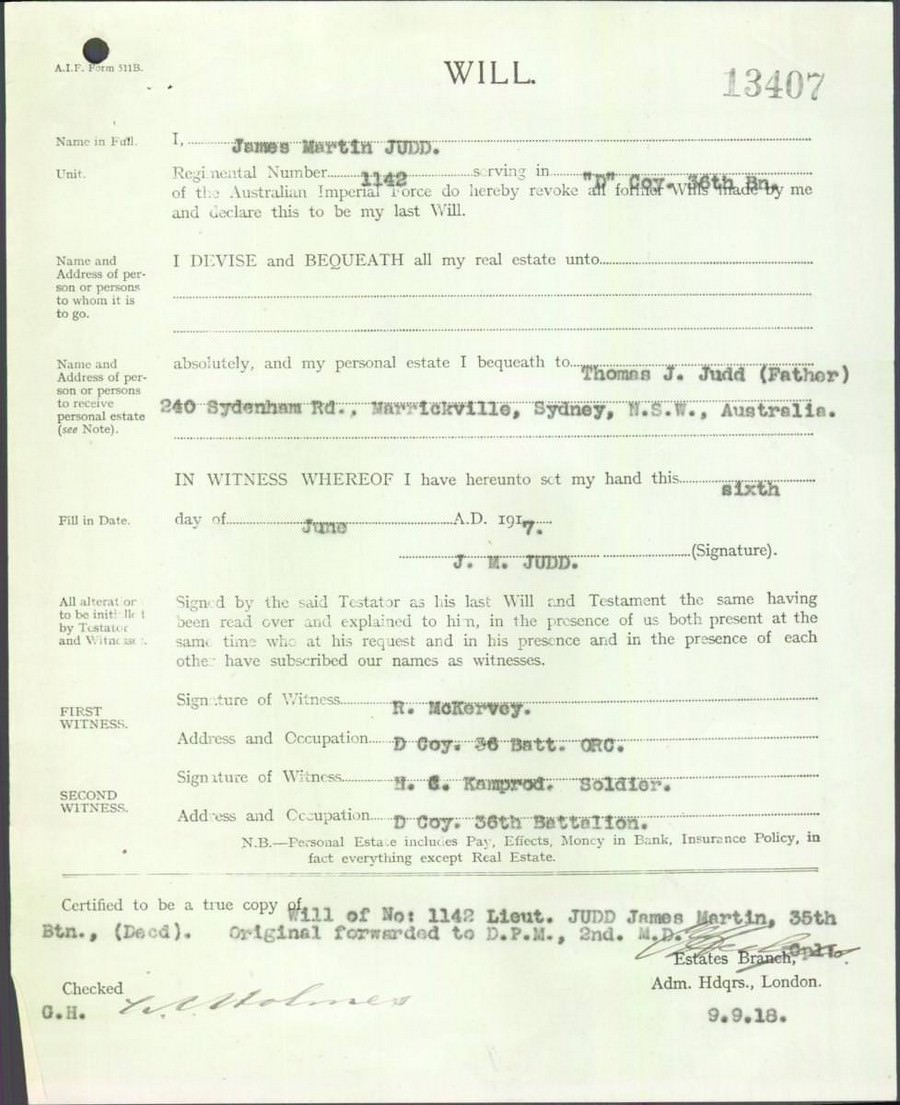
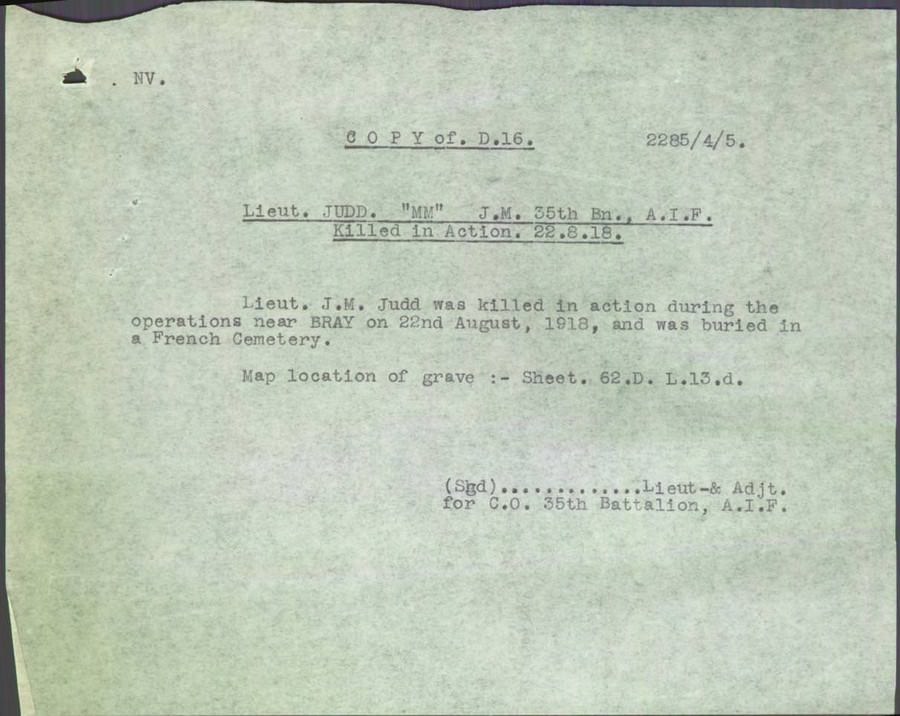
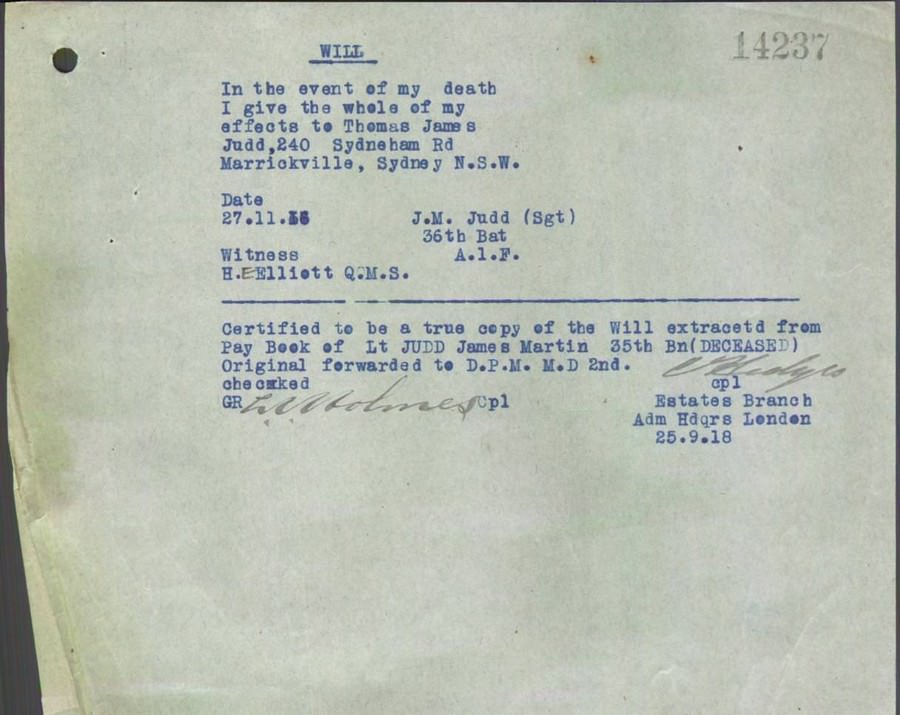
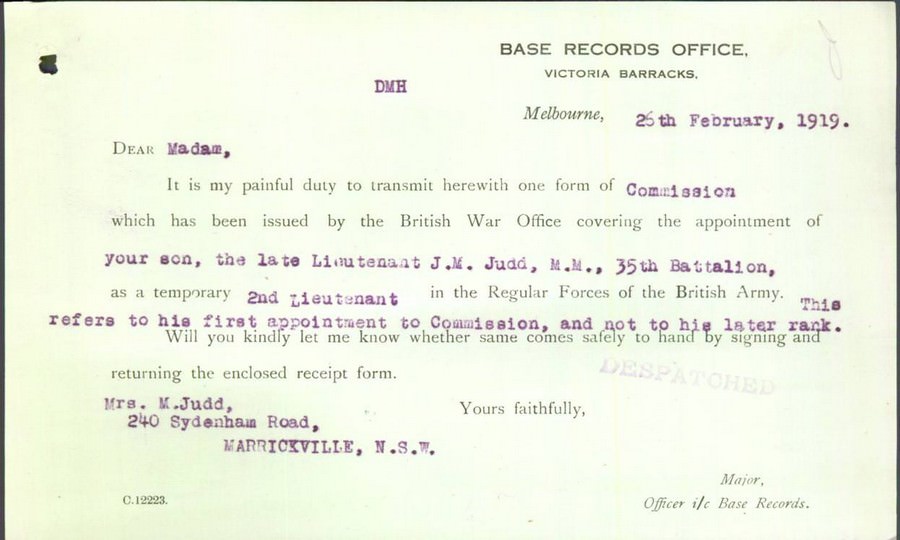
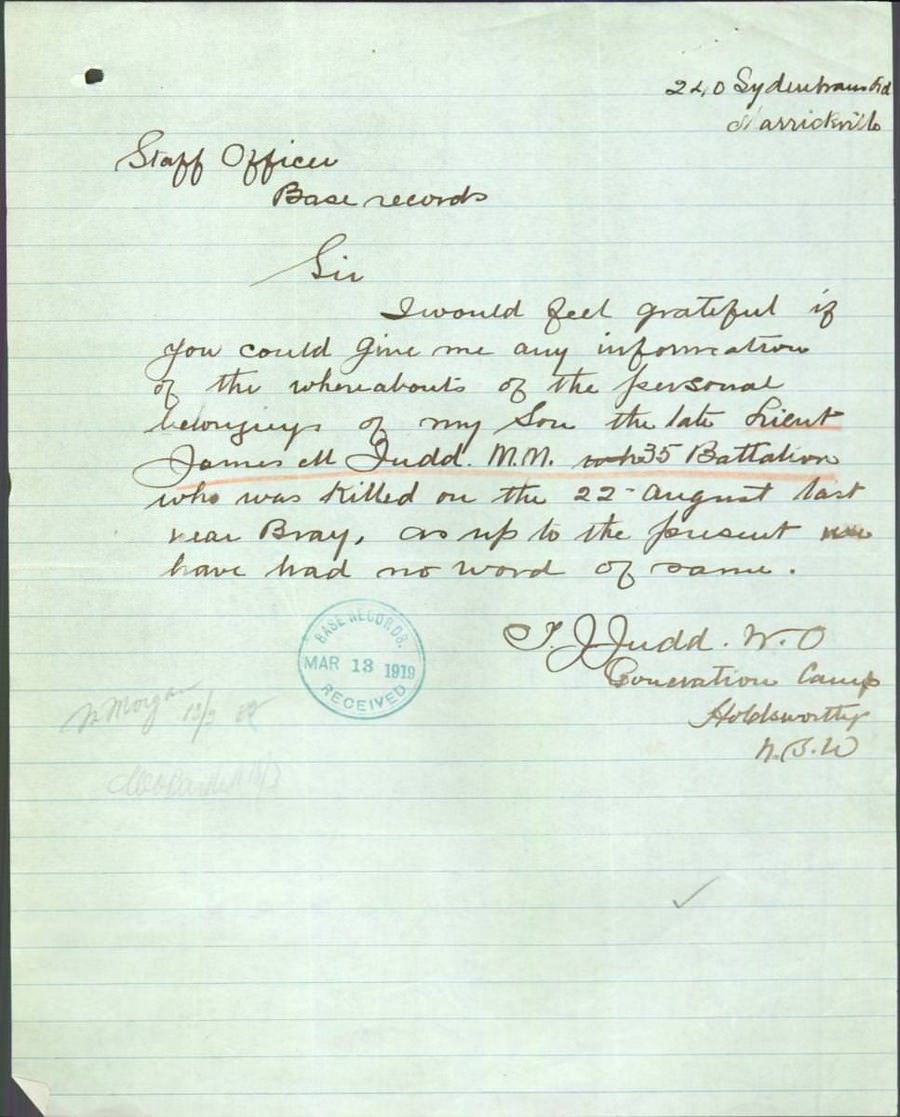

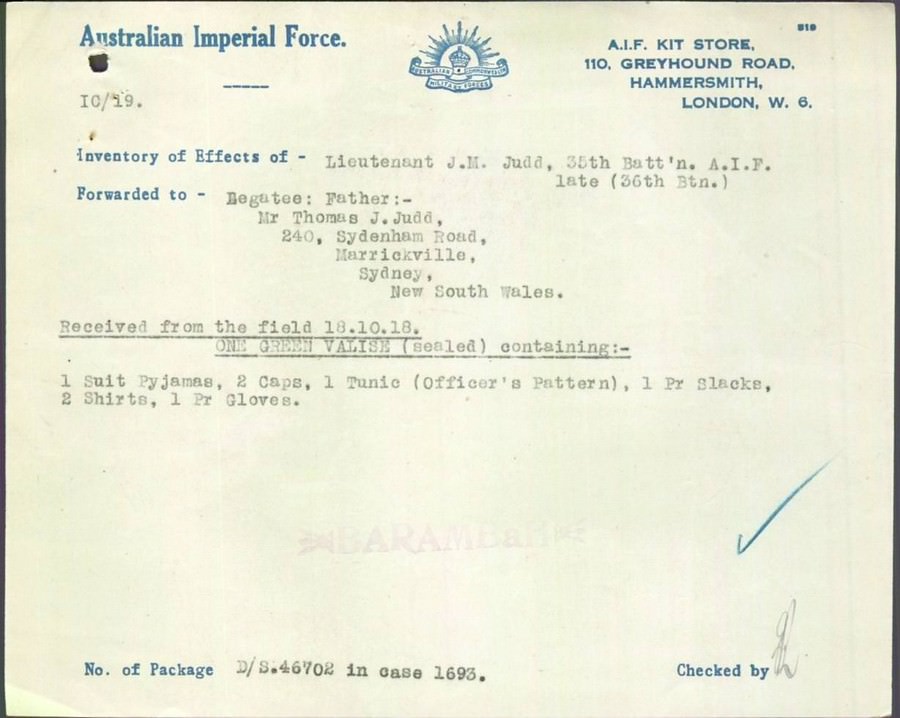
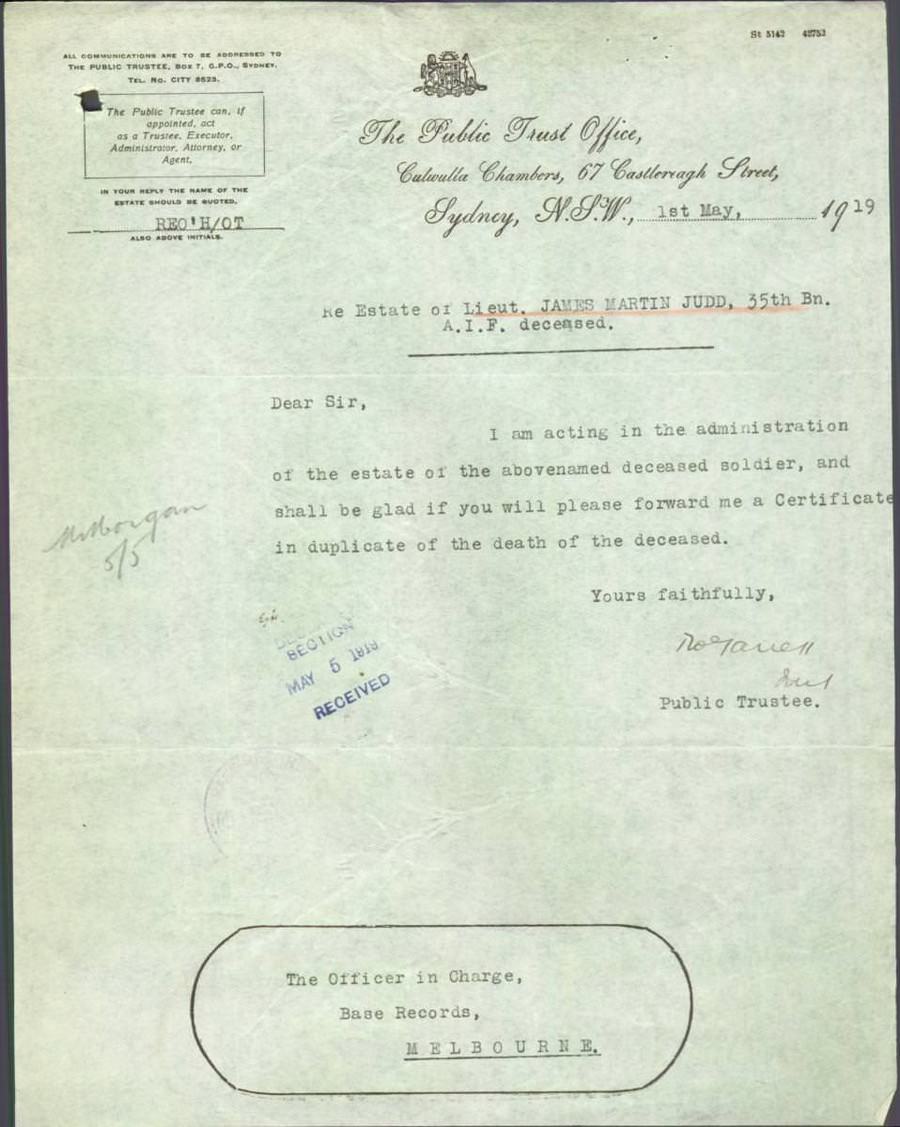

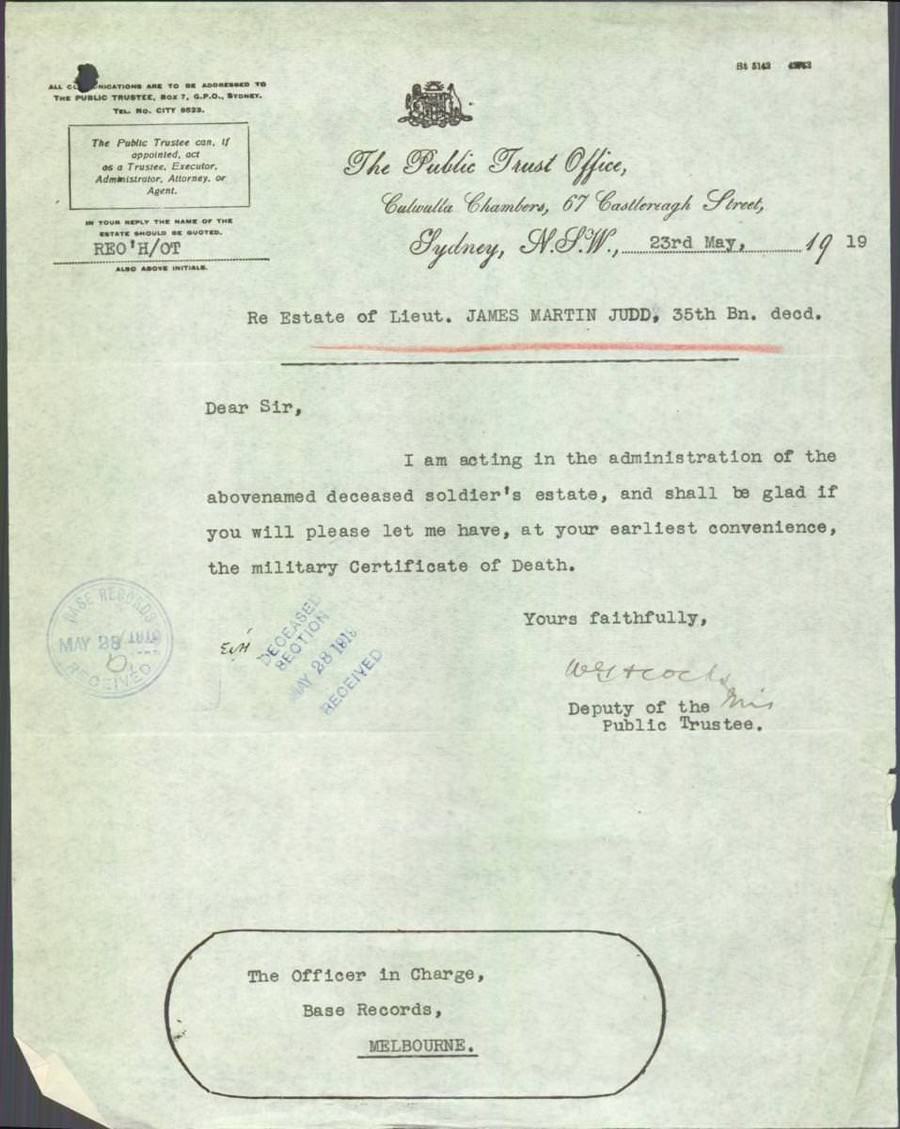
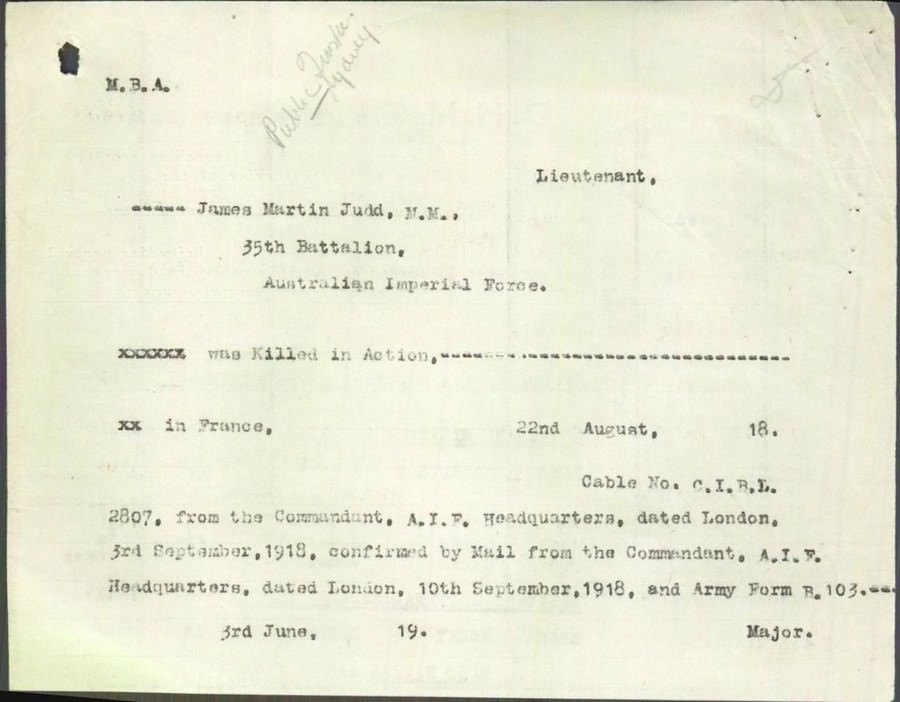
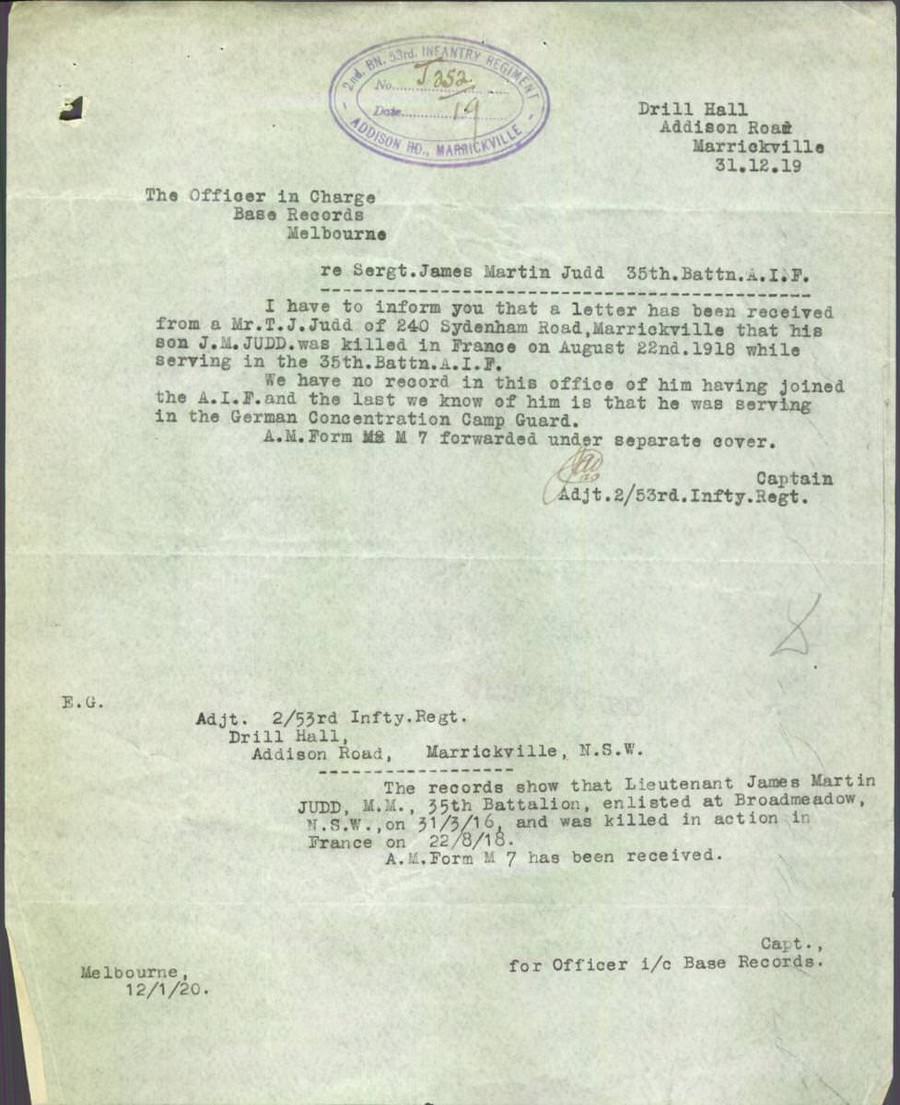
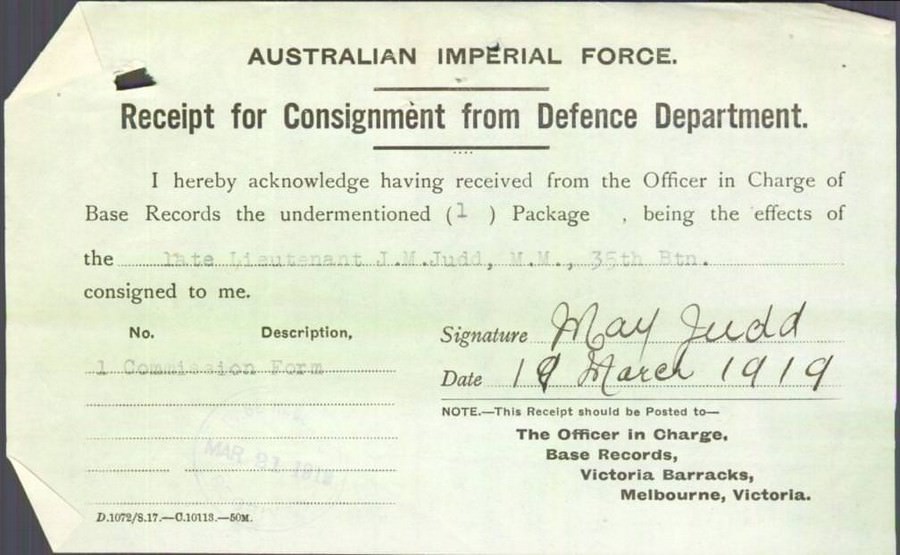
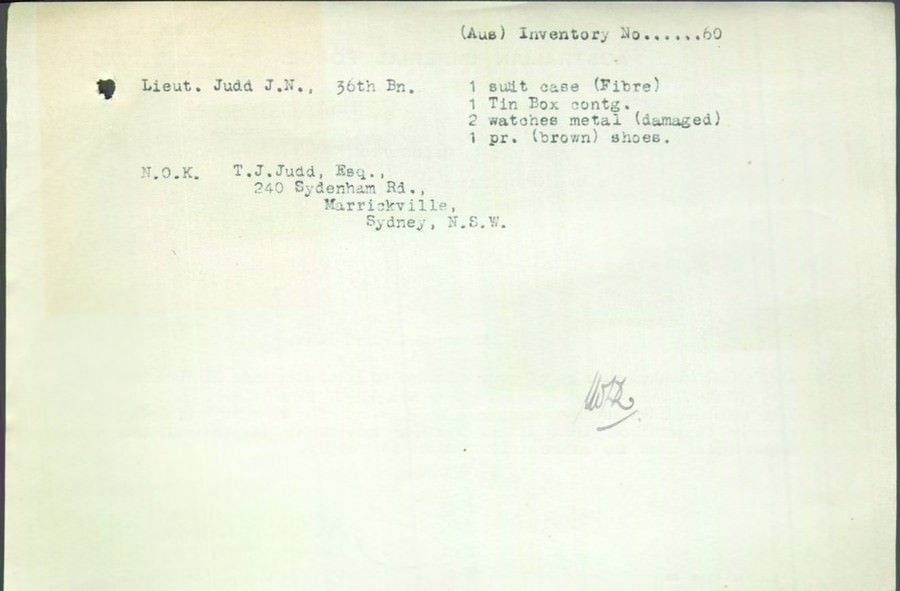
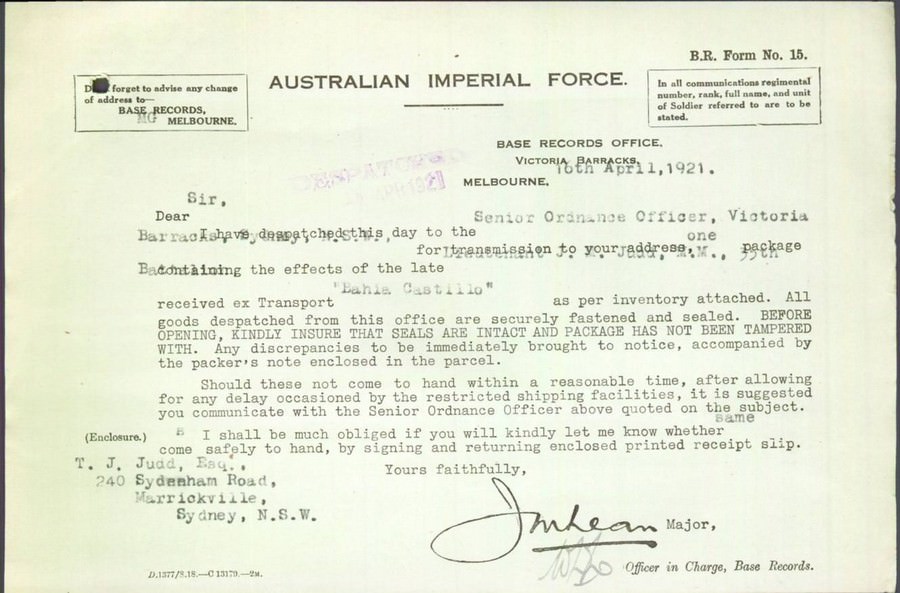
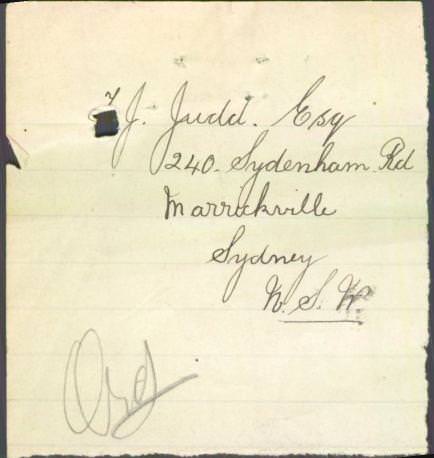


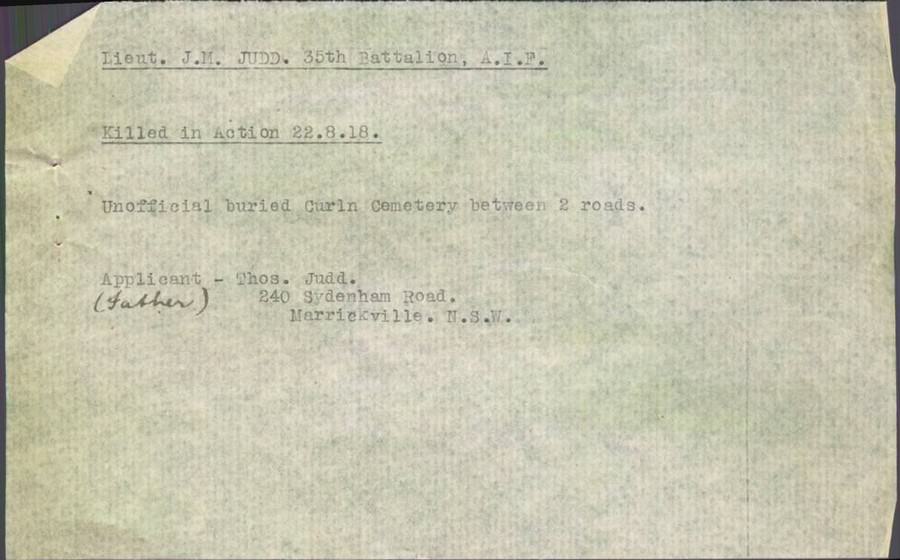
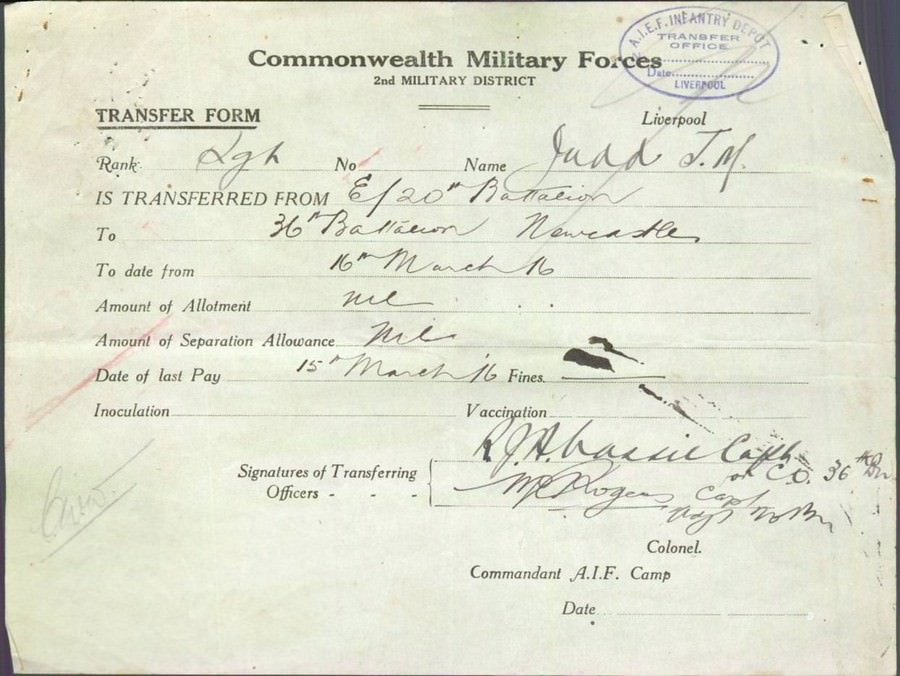
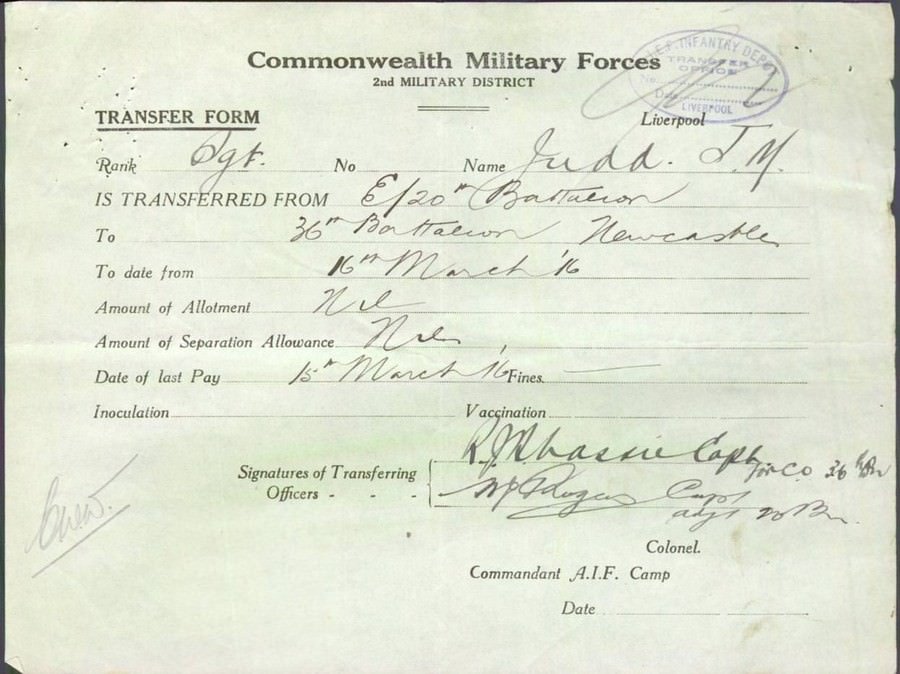

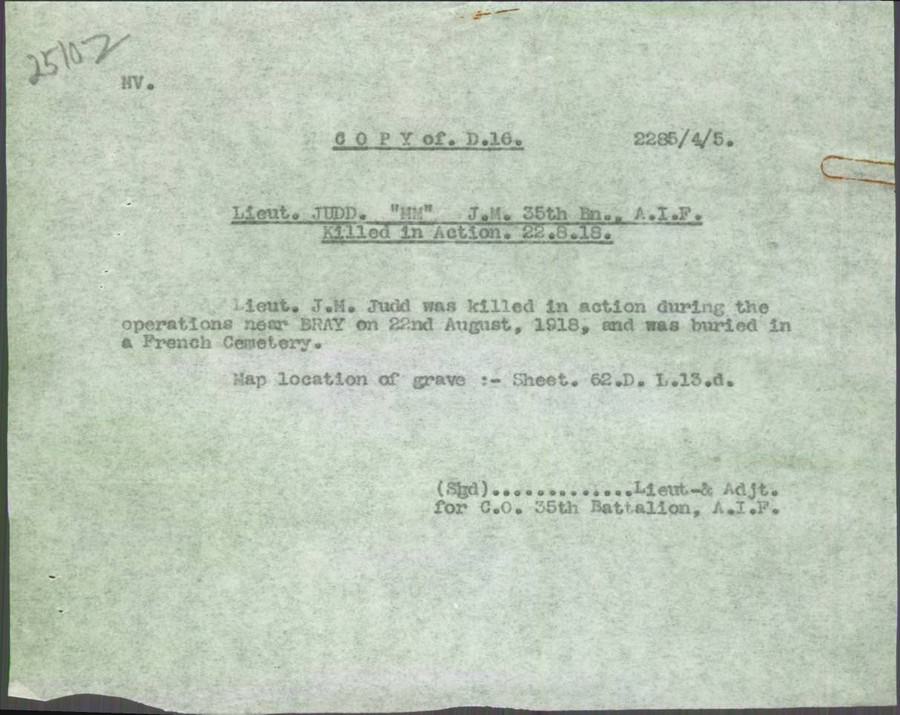
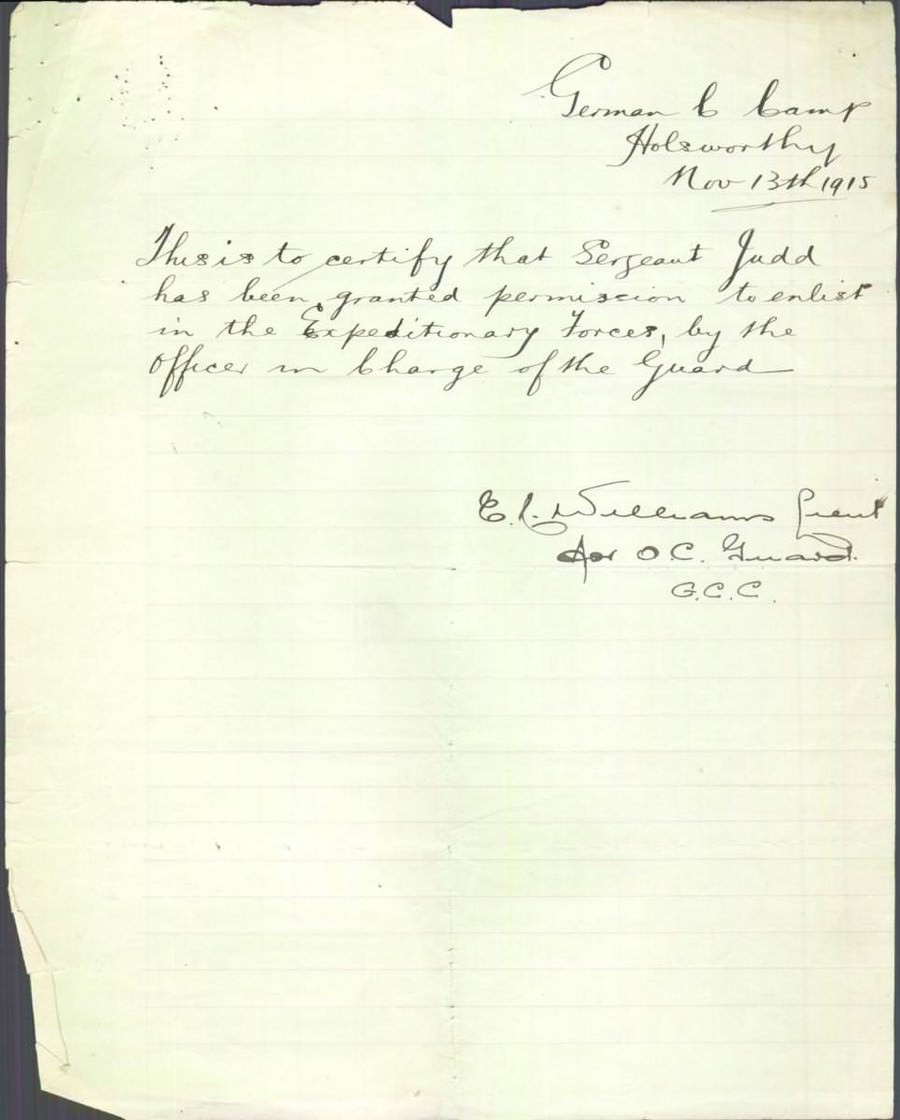

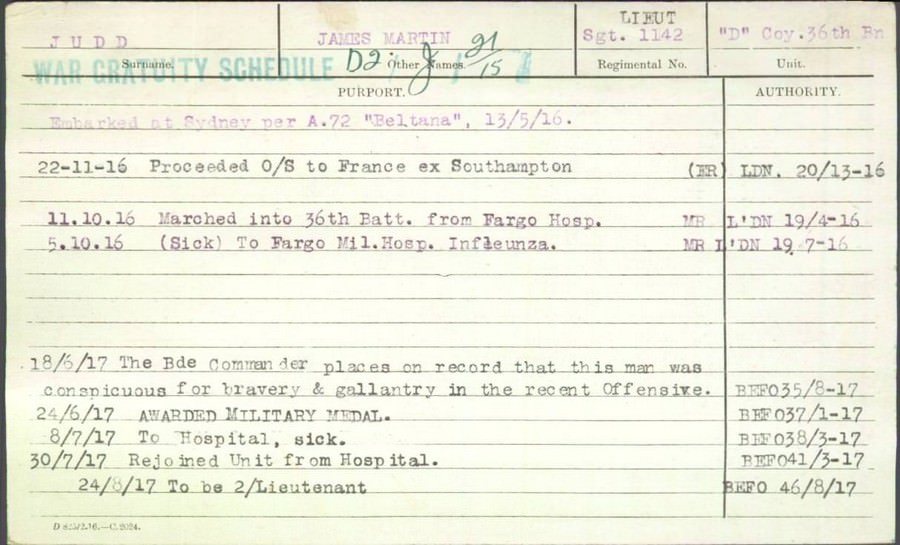
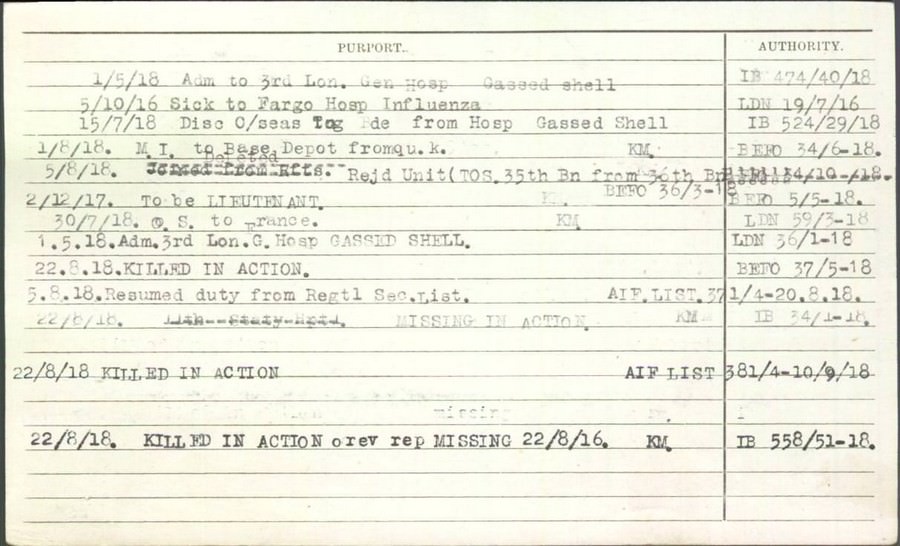


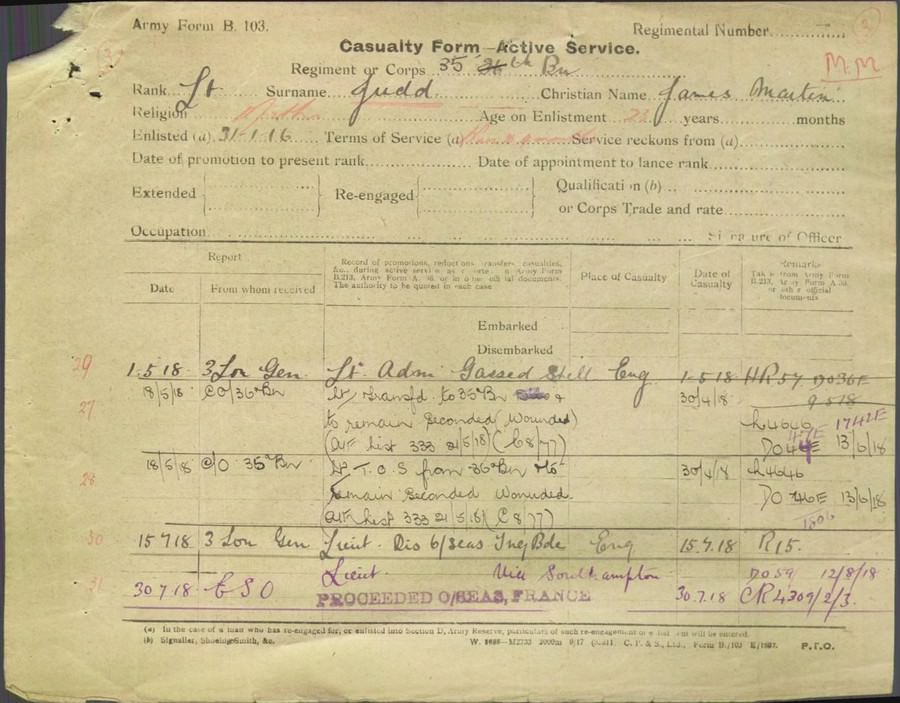
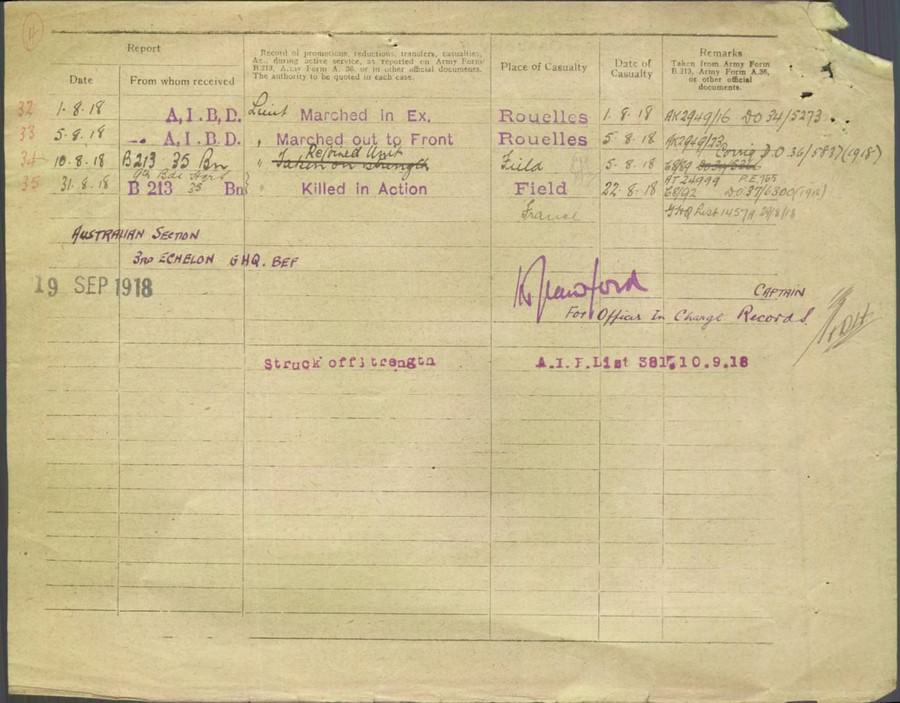
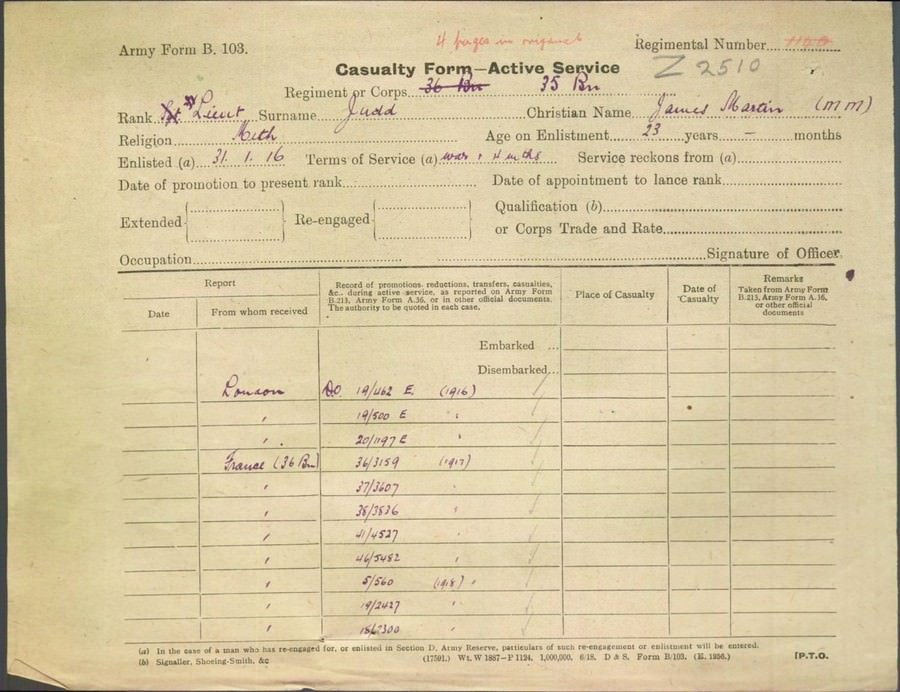

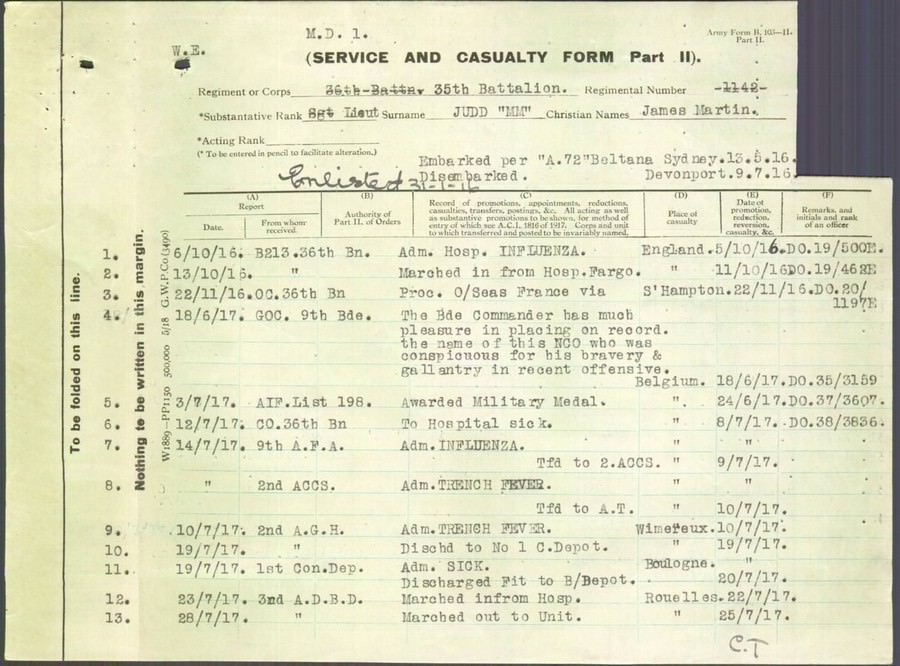
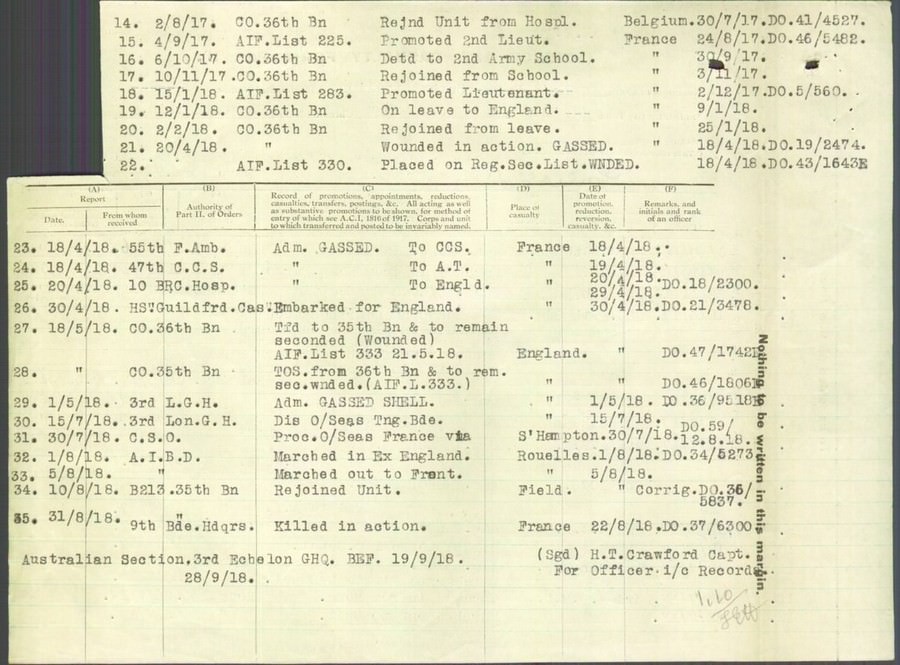
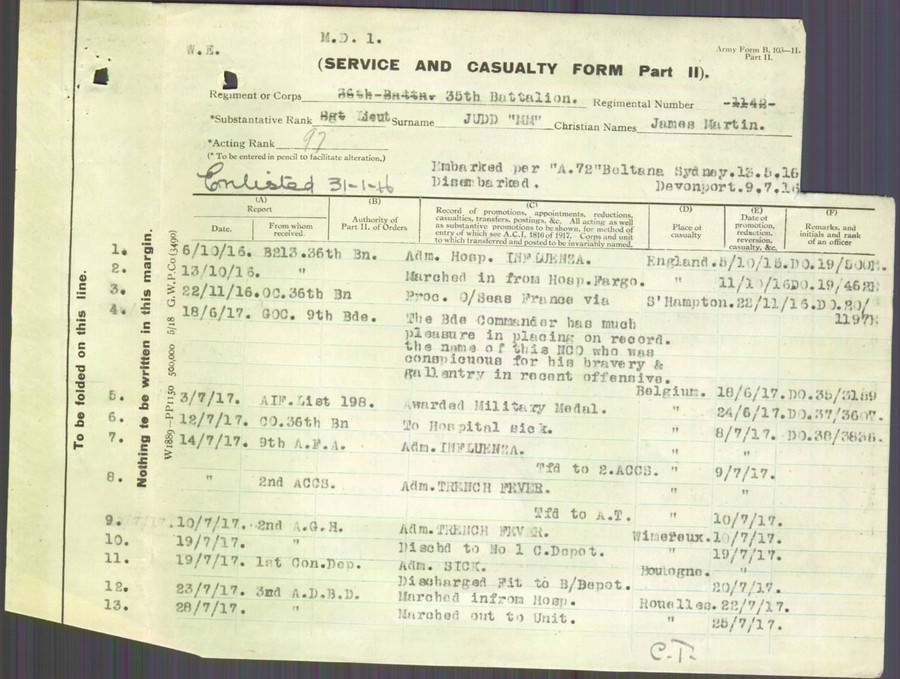
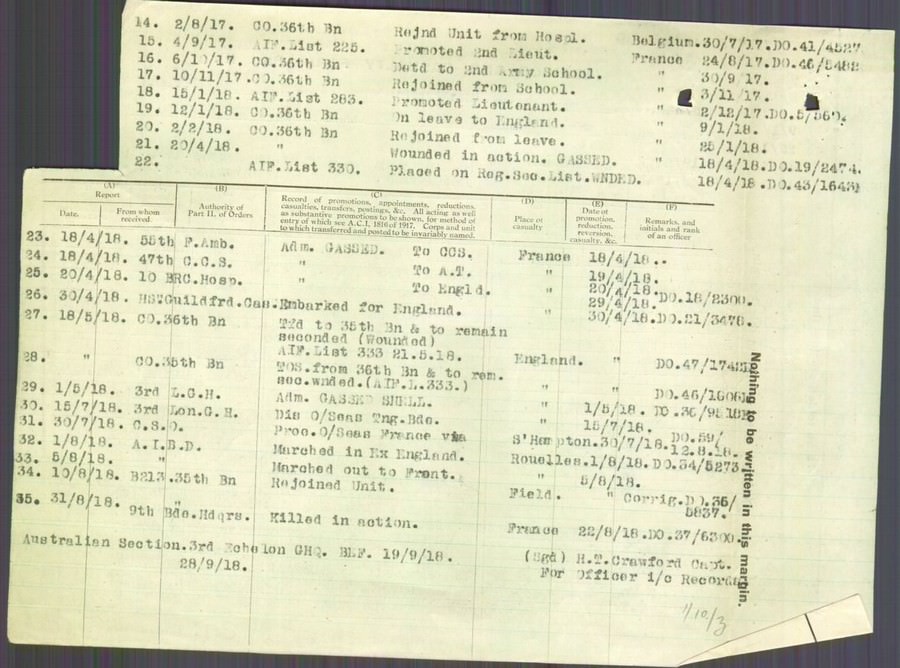
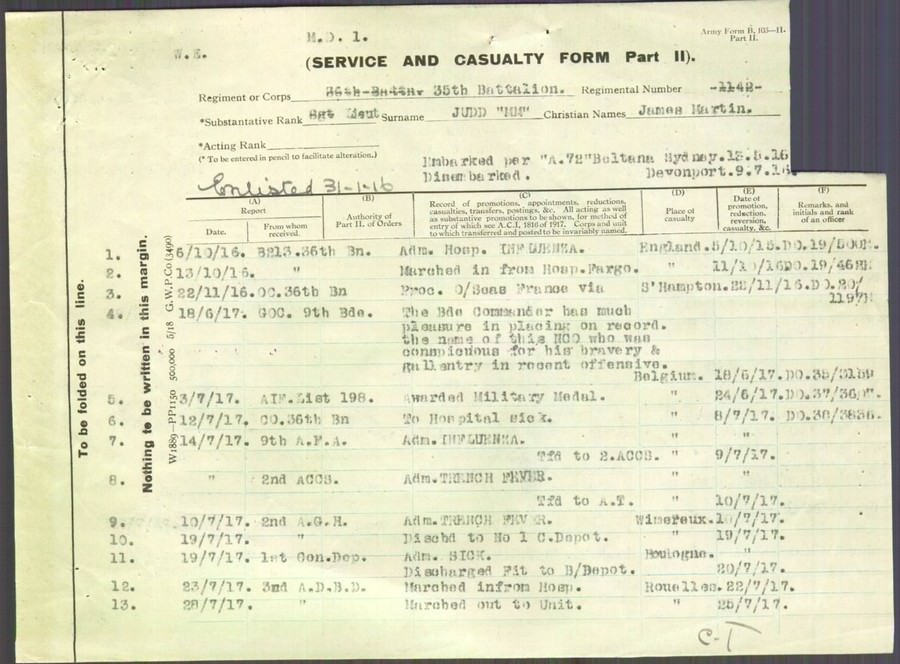
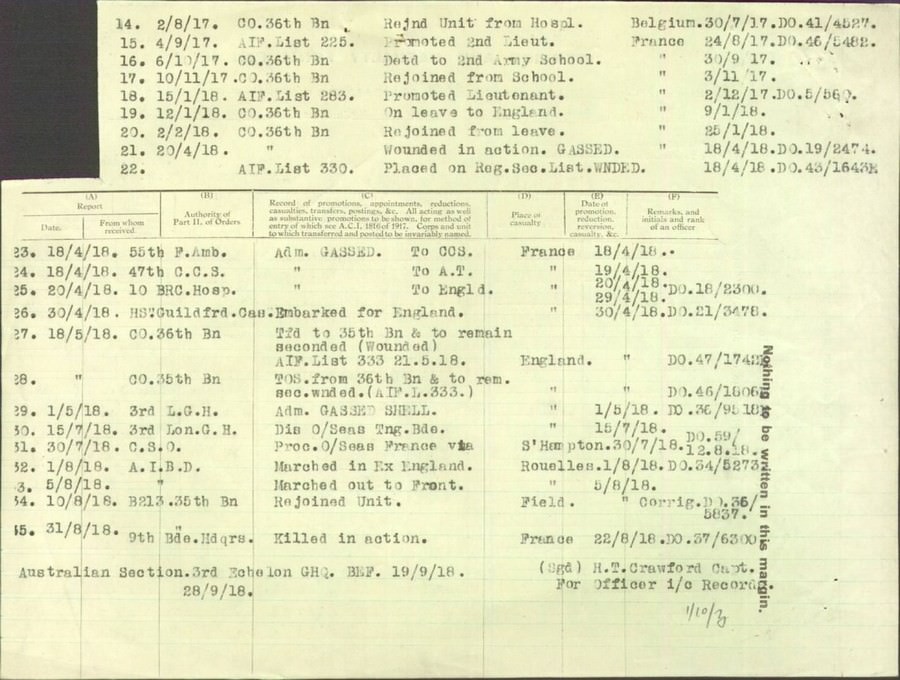

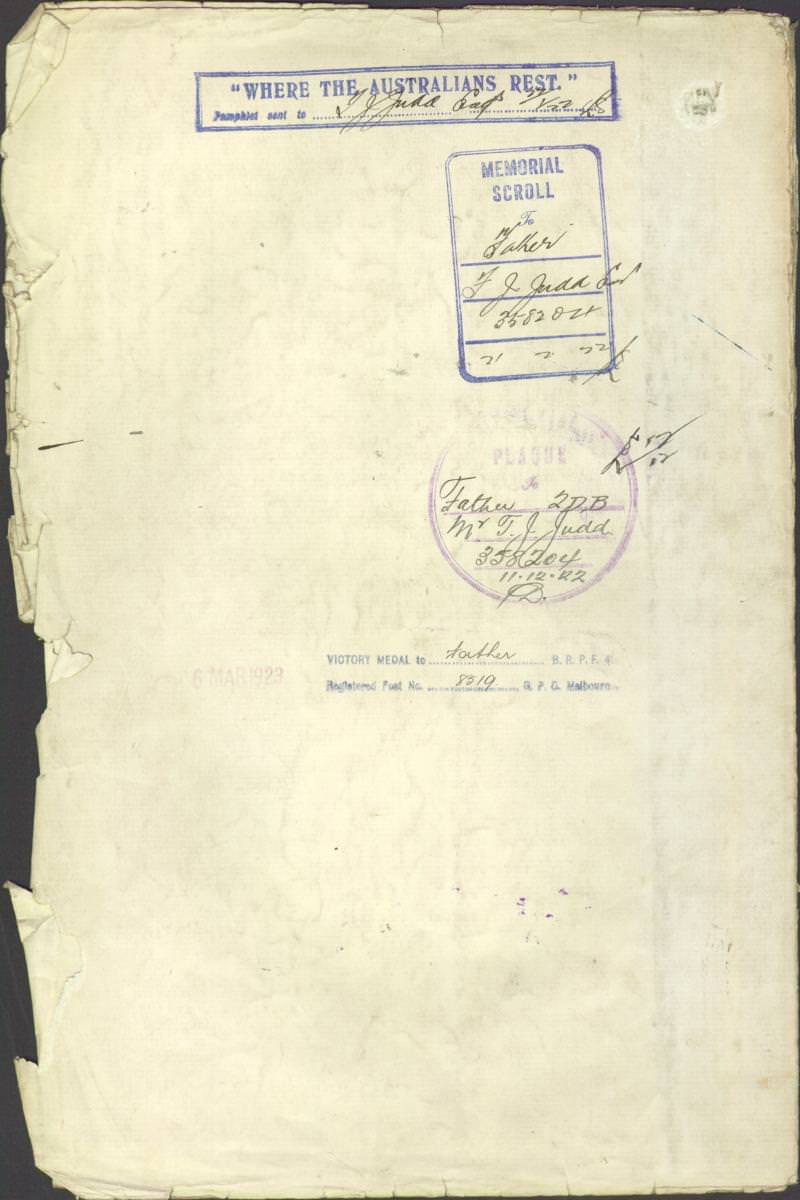
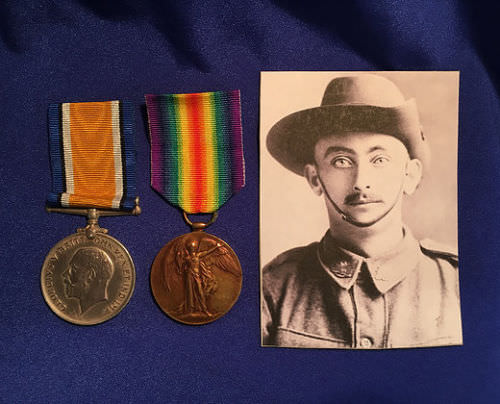
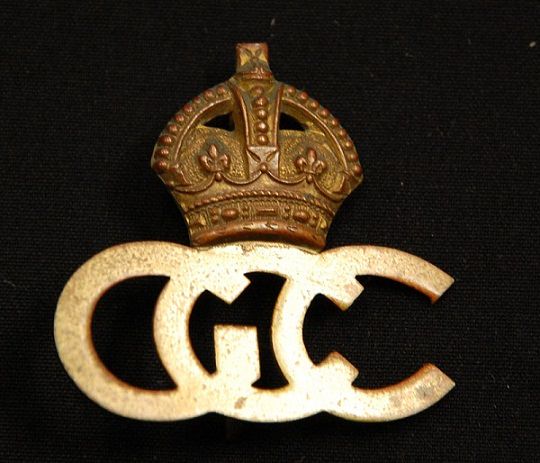
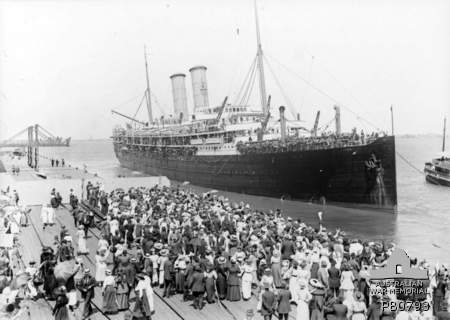


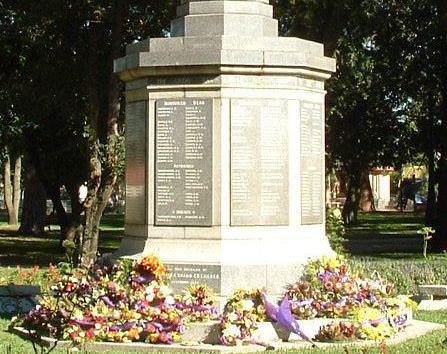
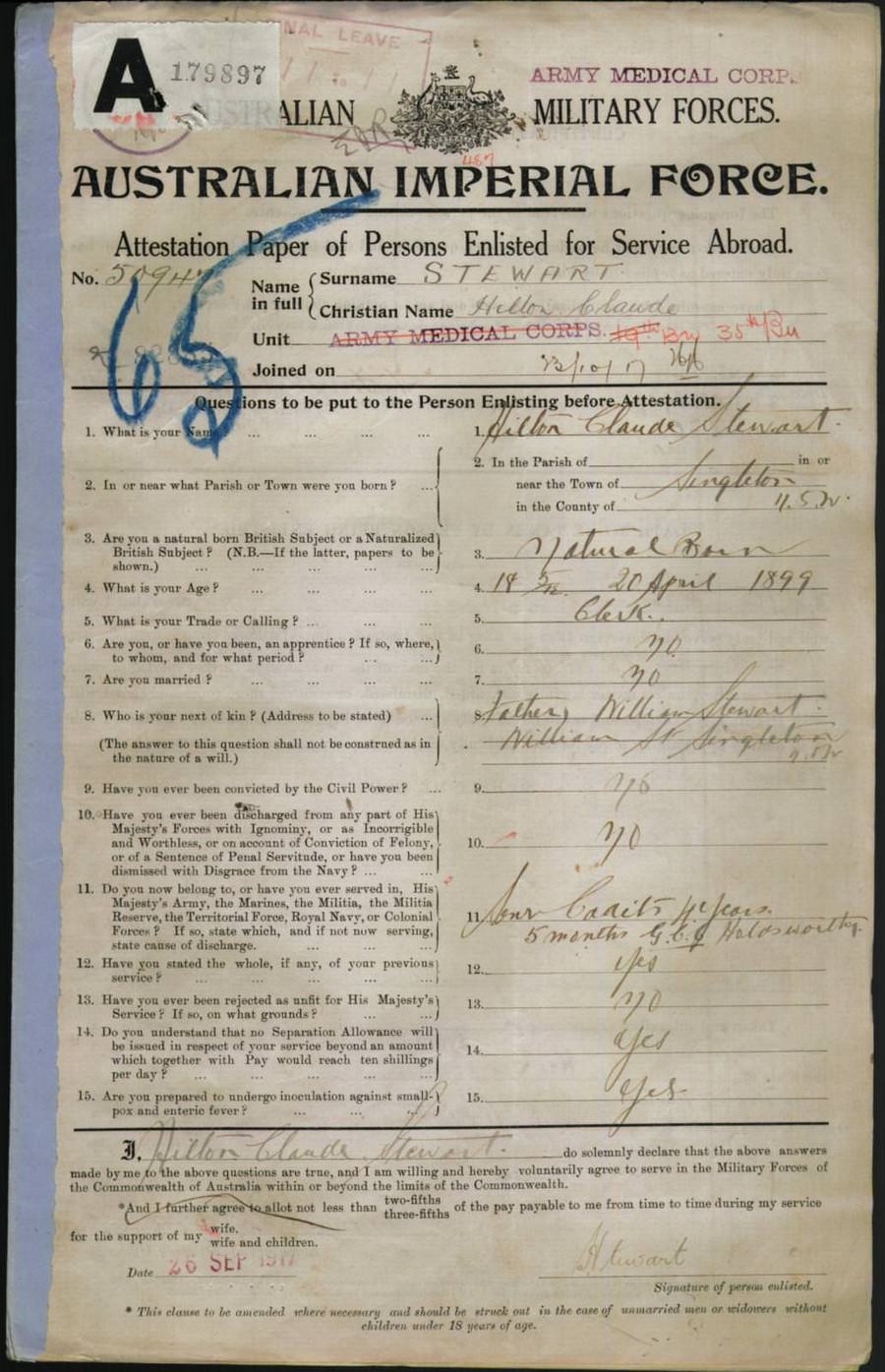
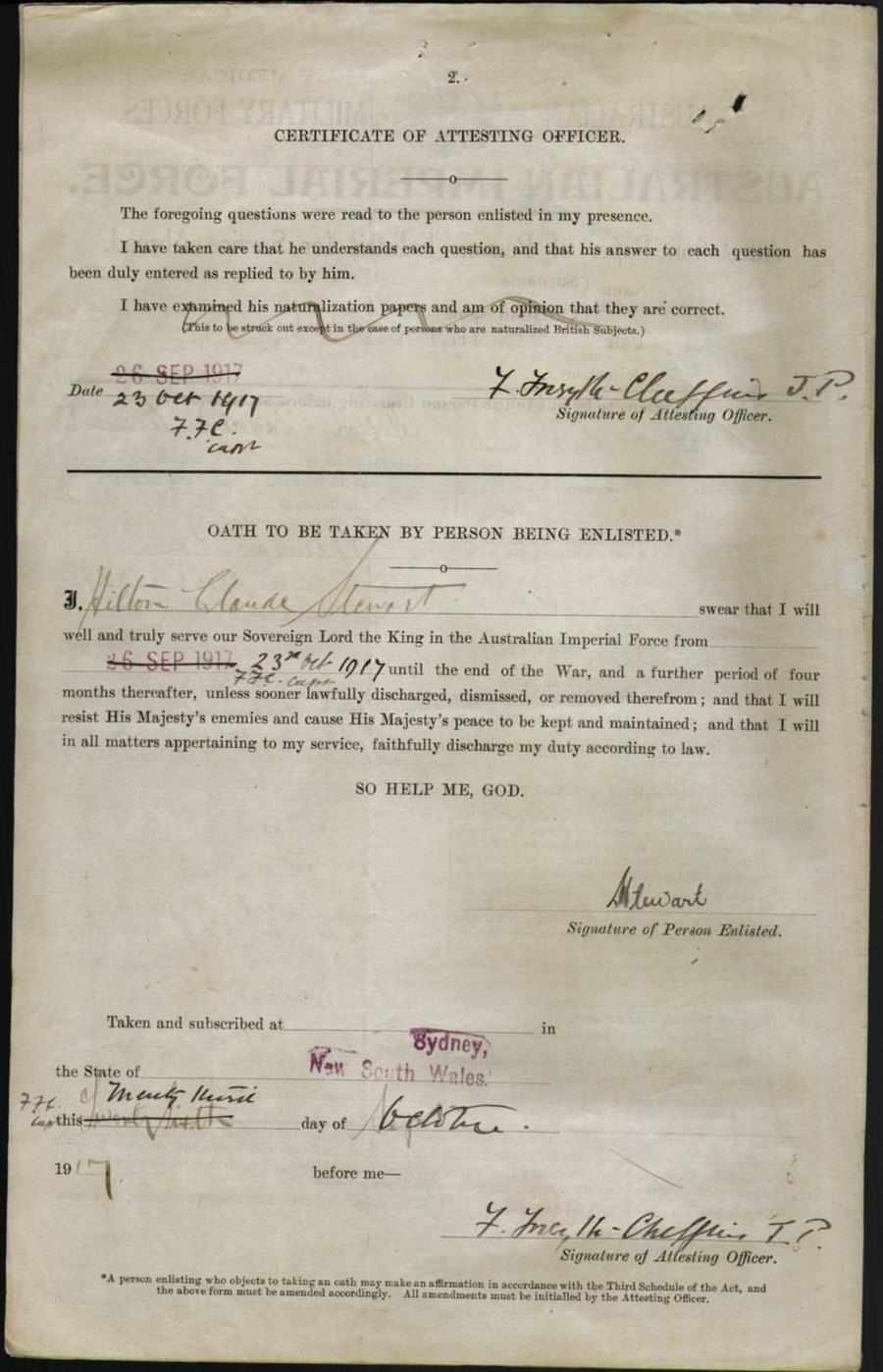
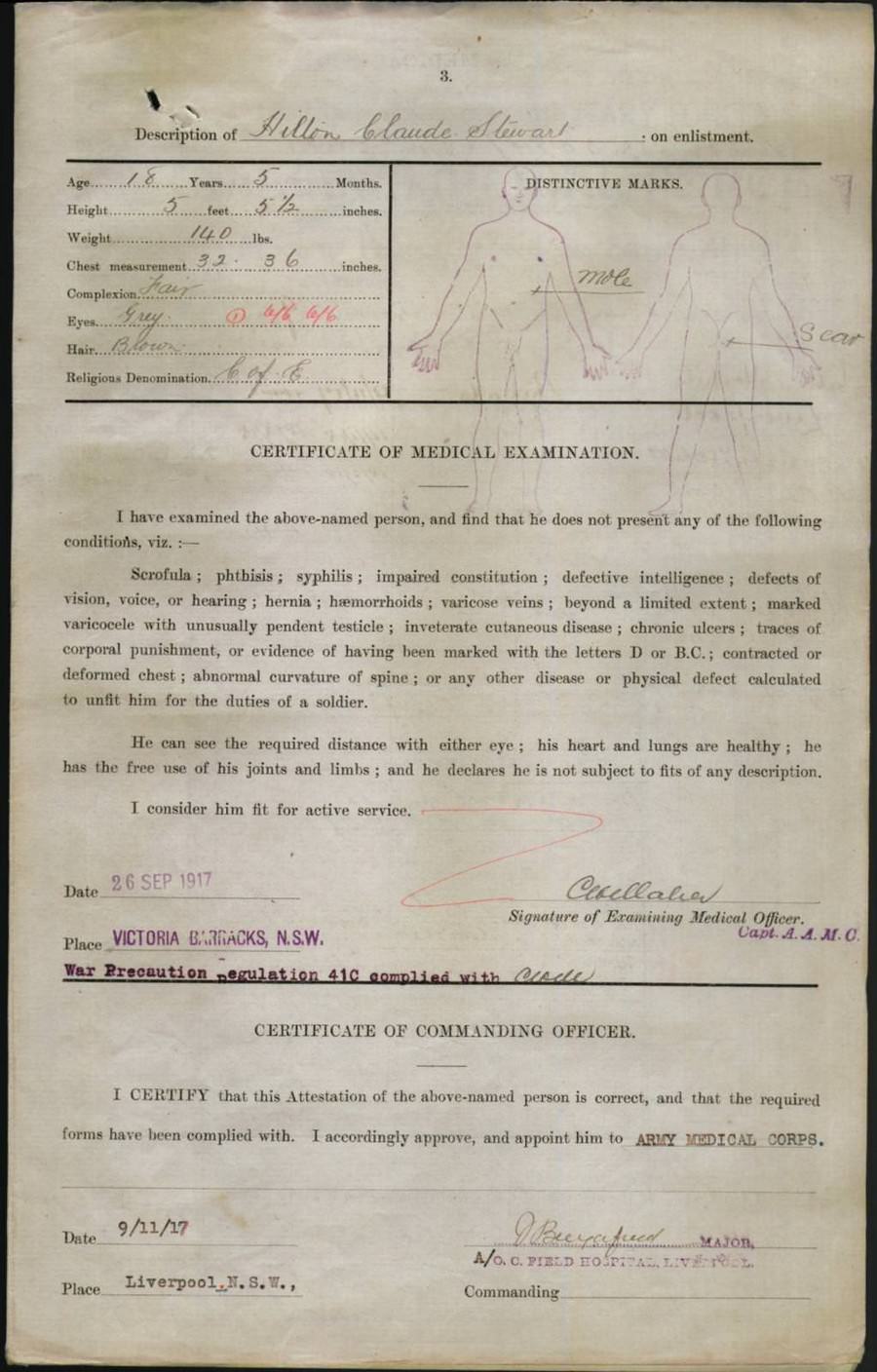
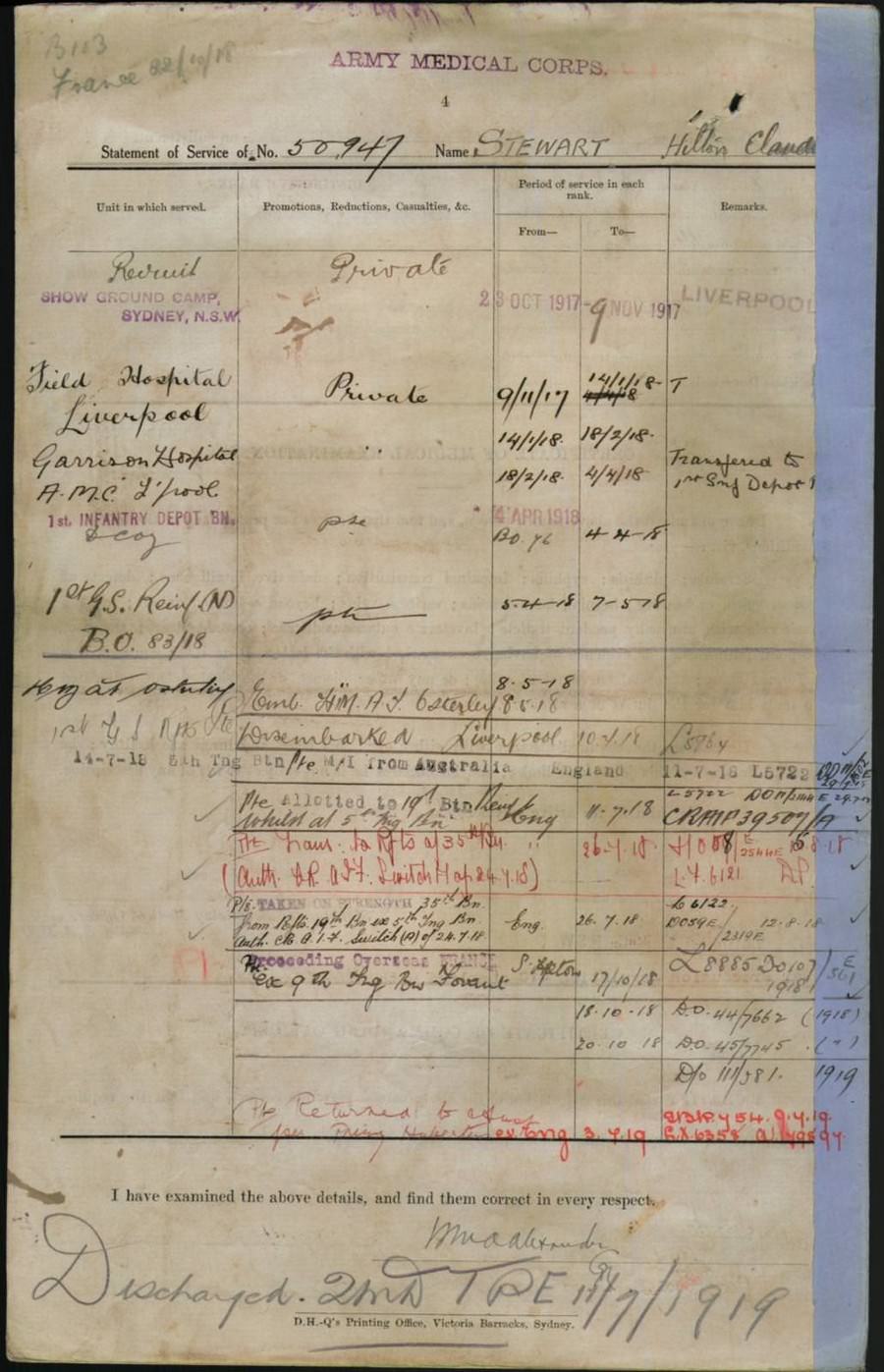

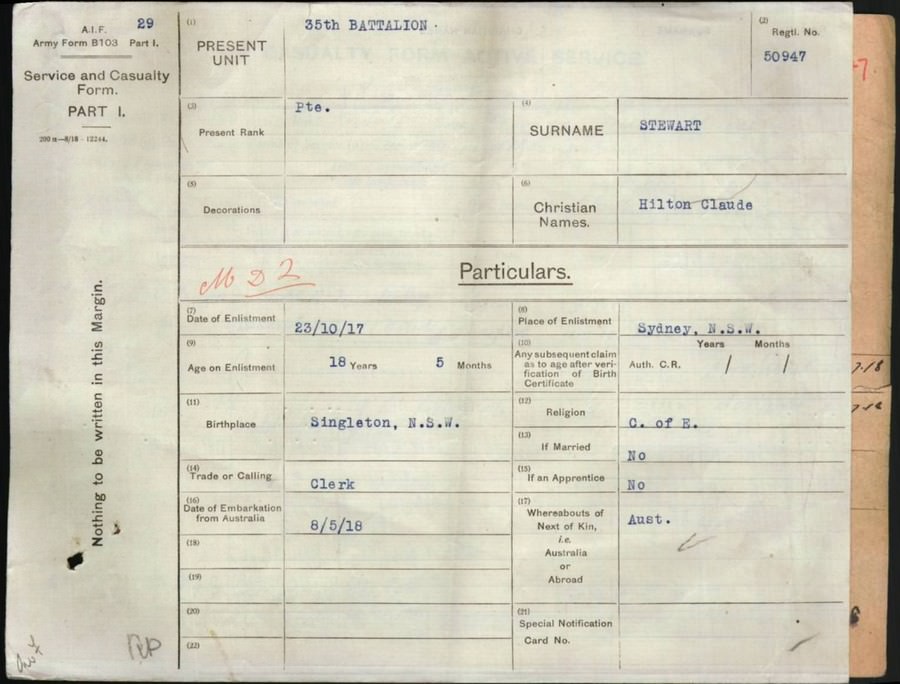
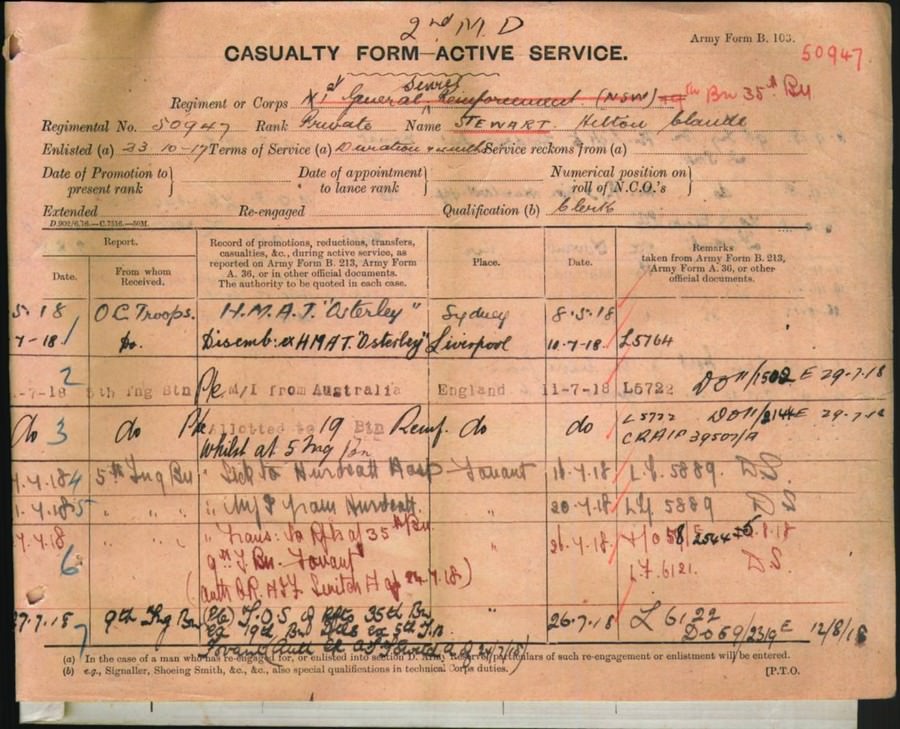
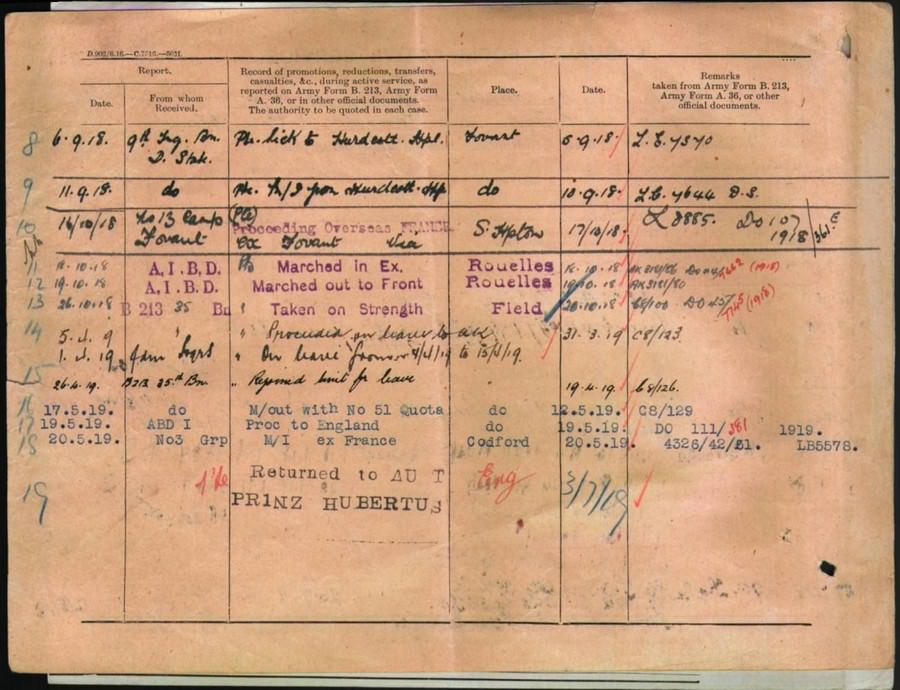
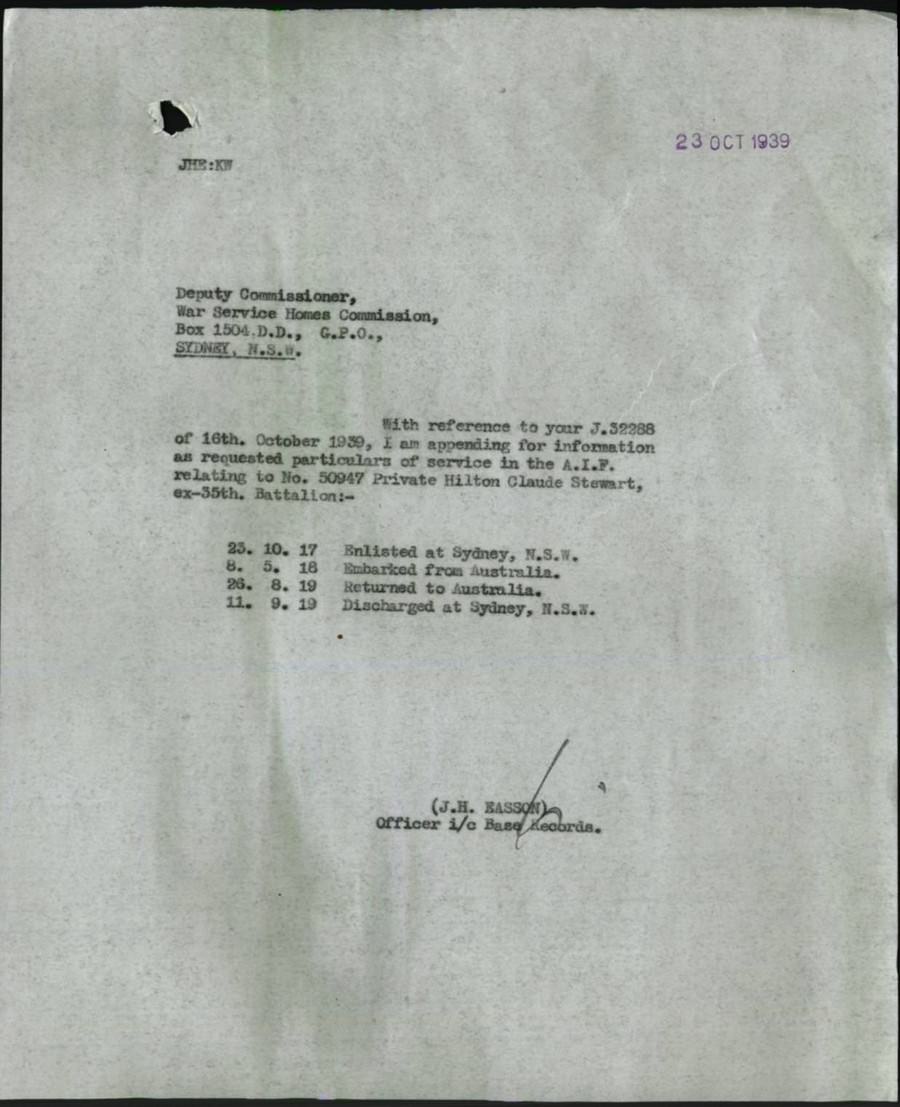
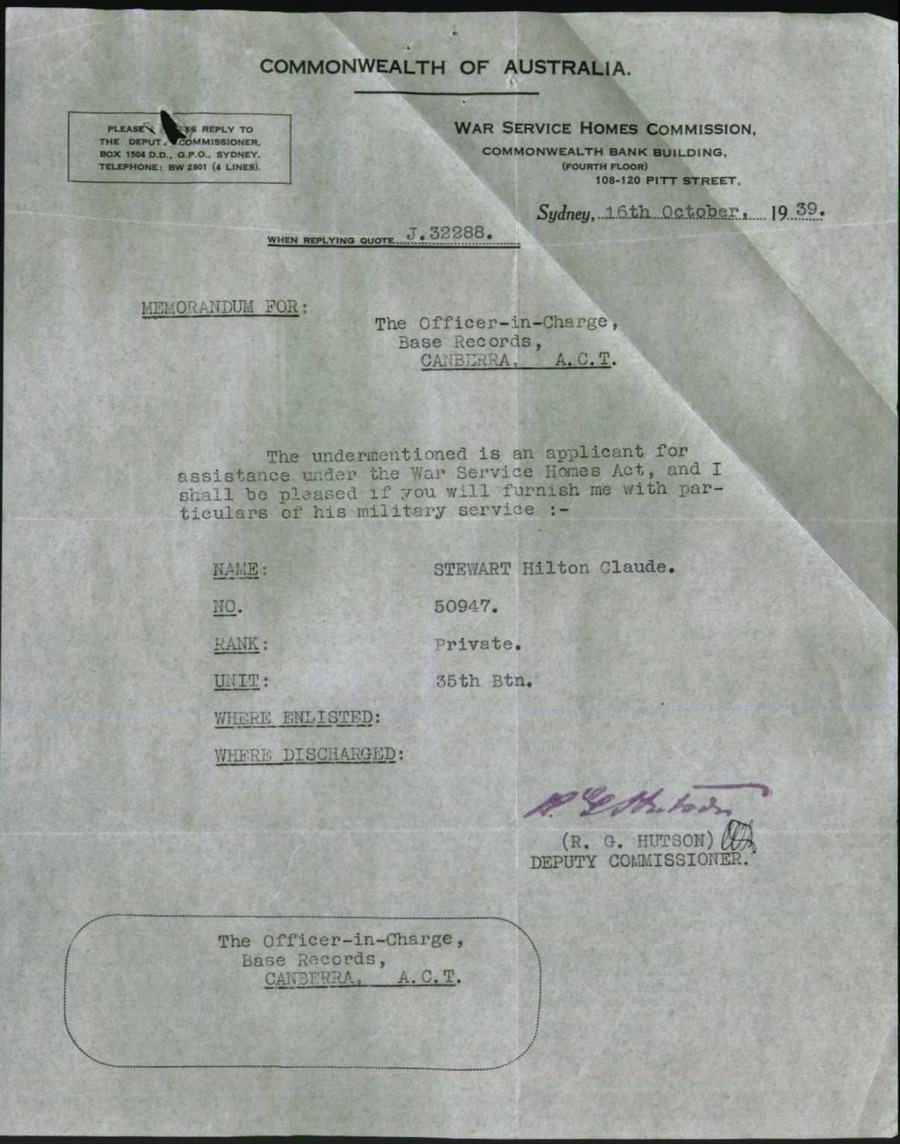


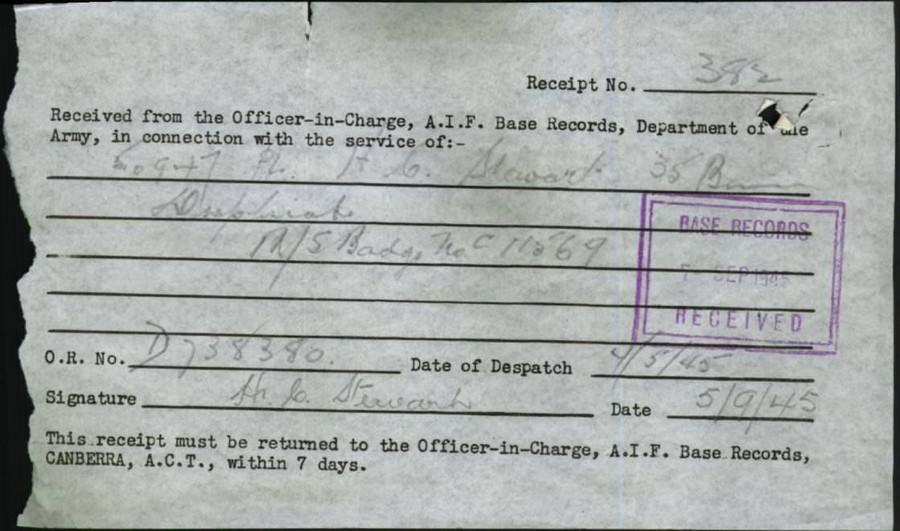
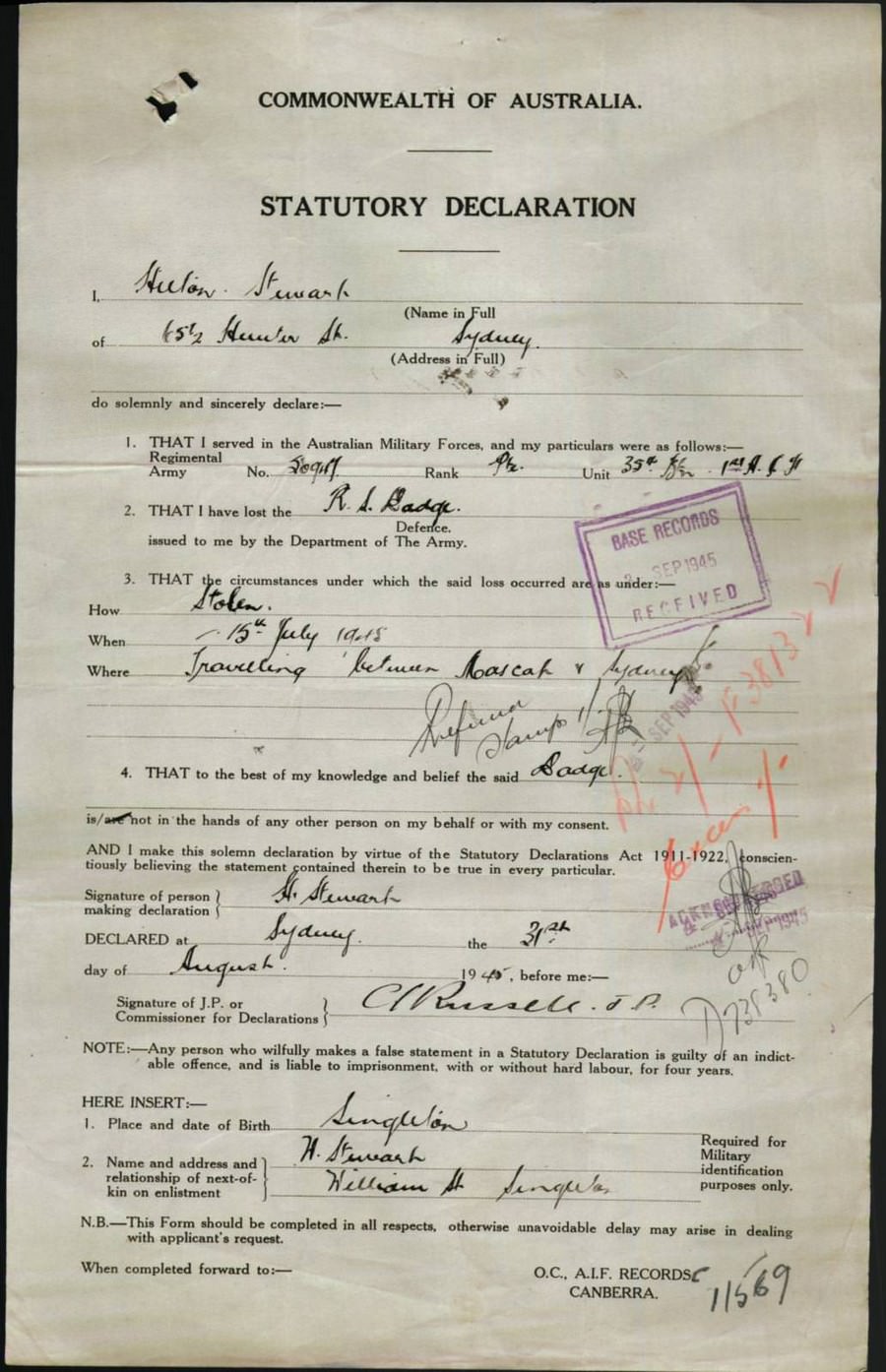
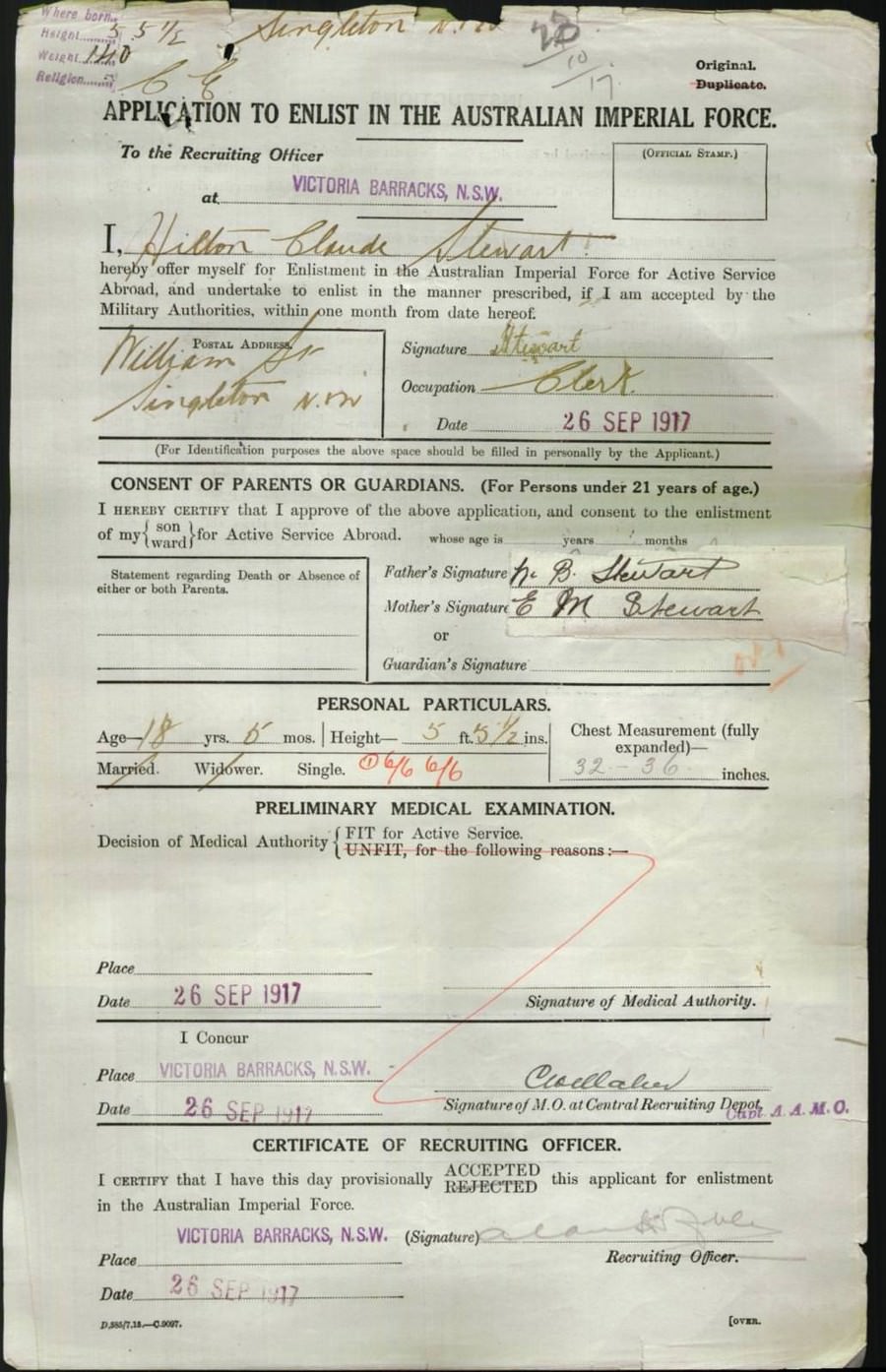


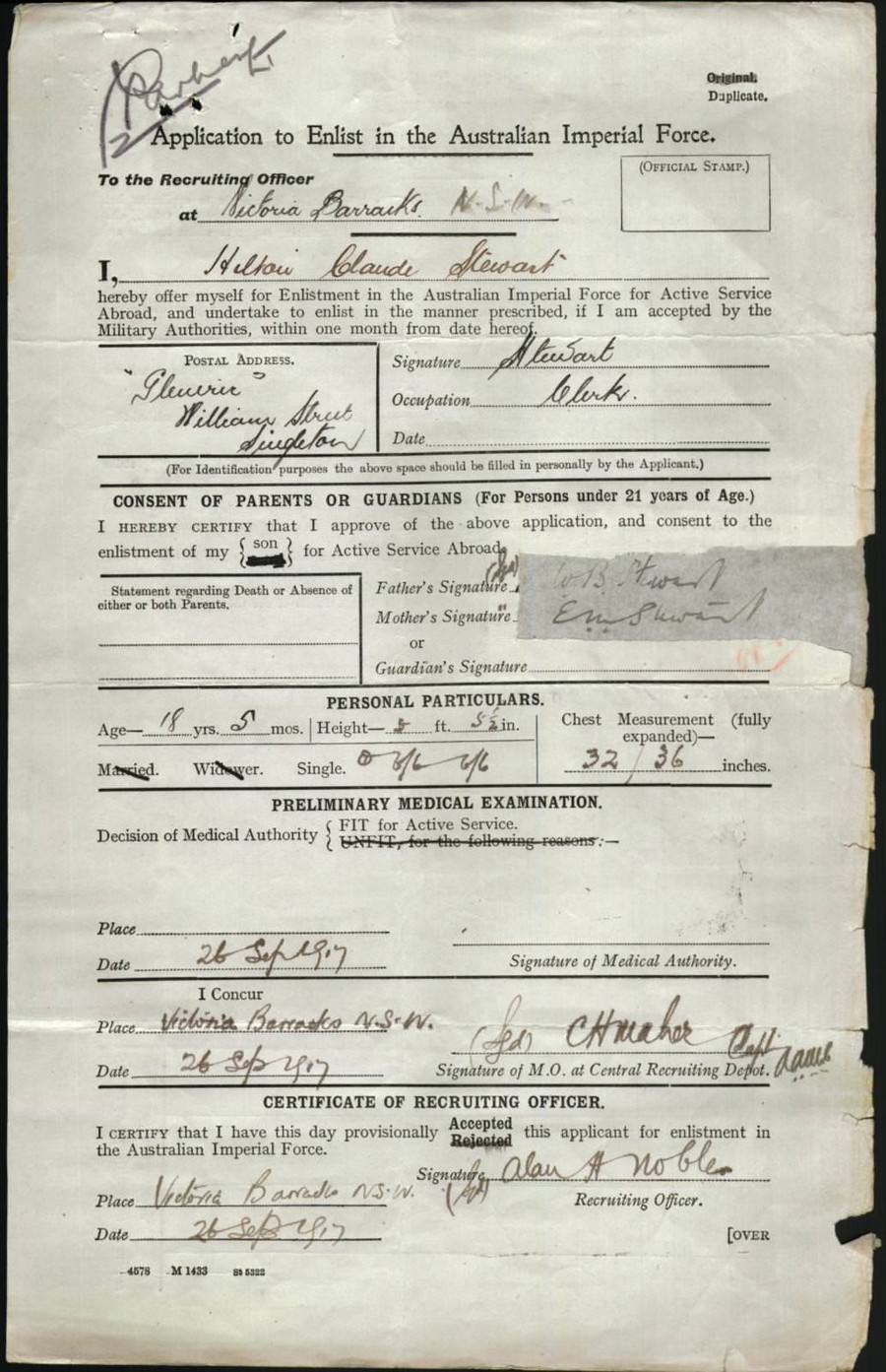
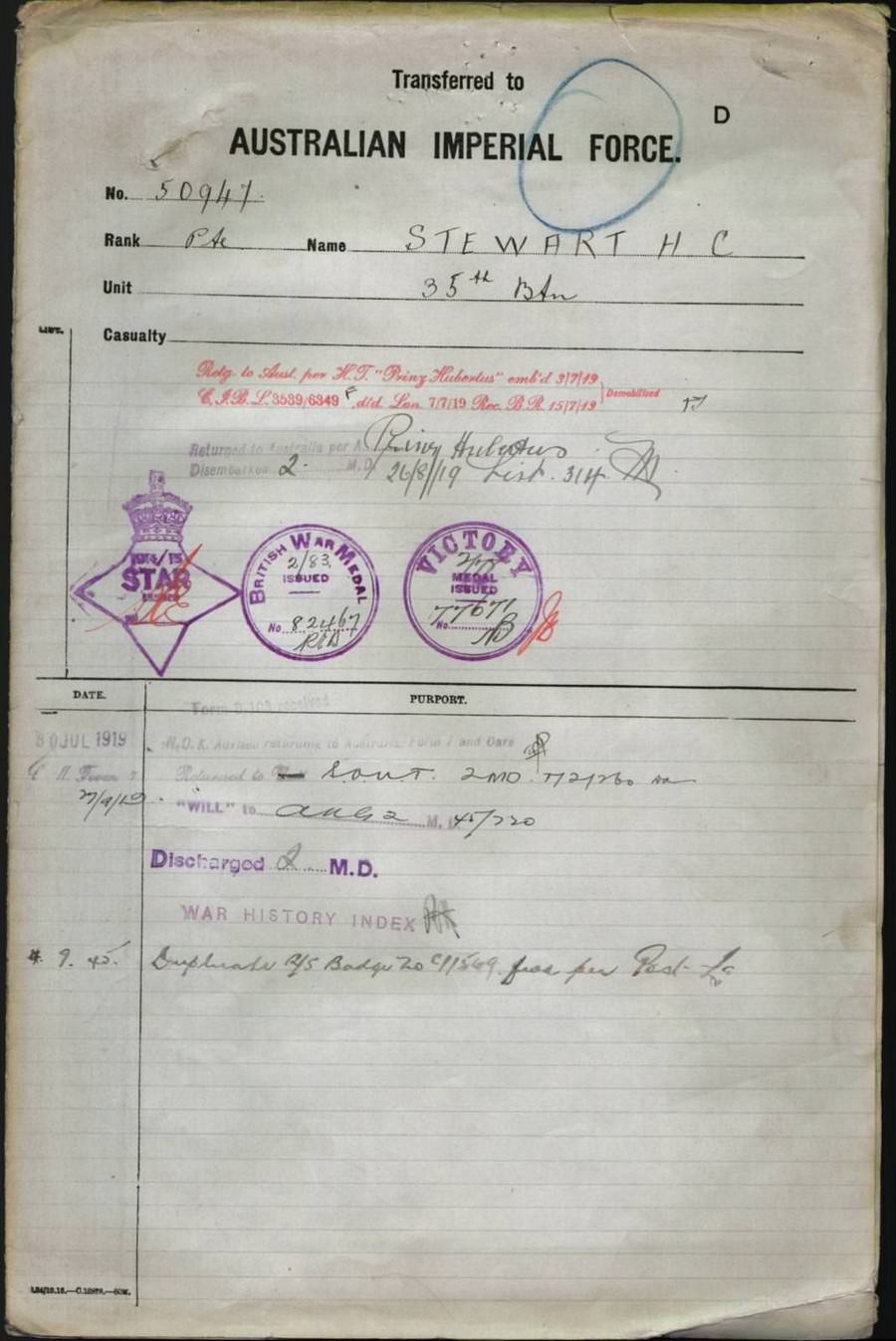 © Commonwealth of Australia
© Commonwealth of Australia